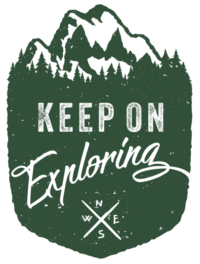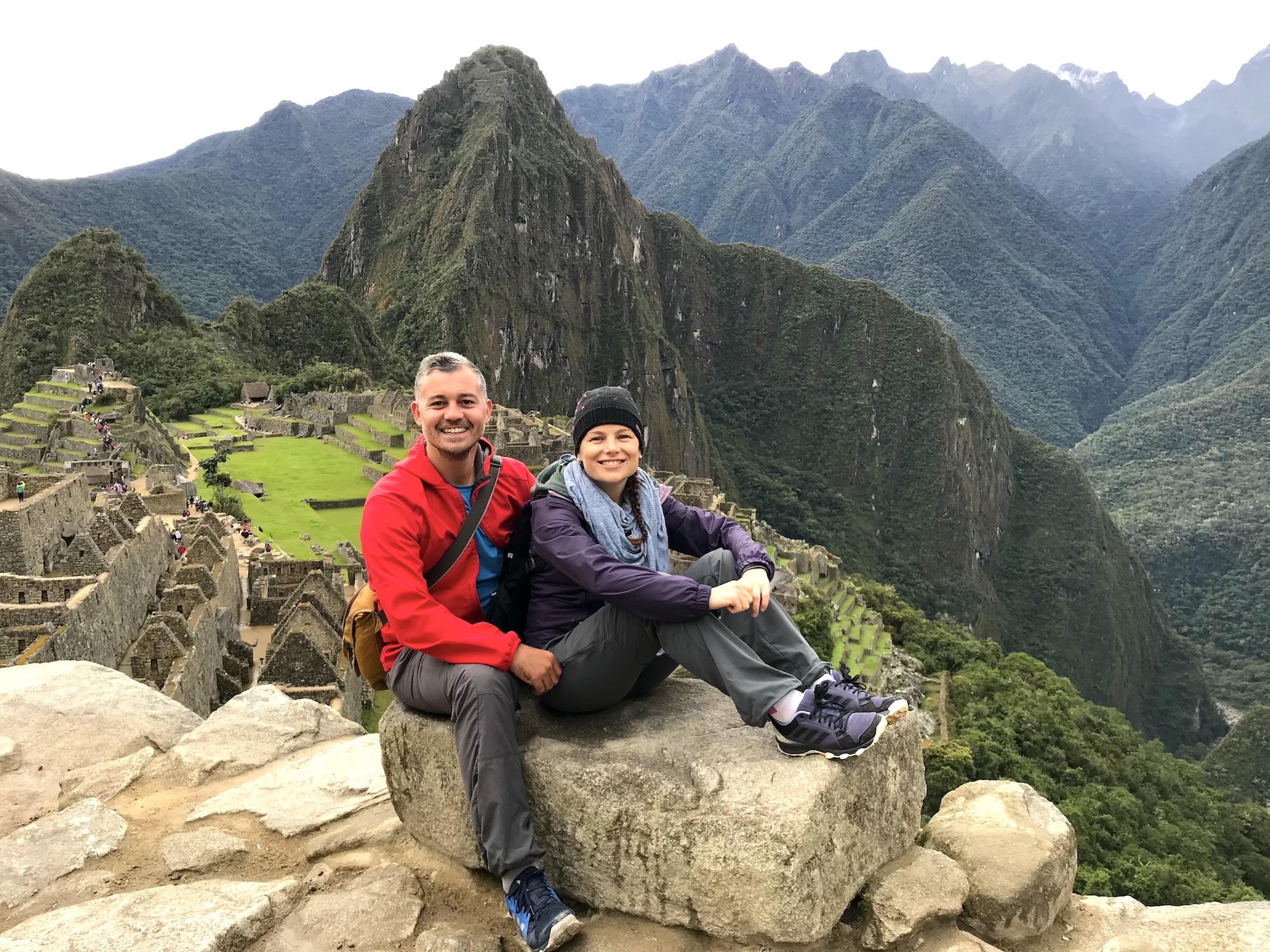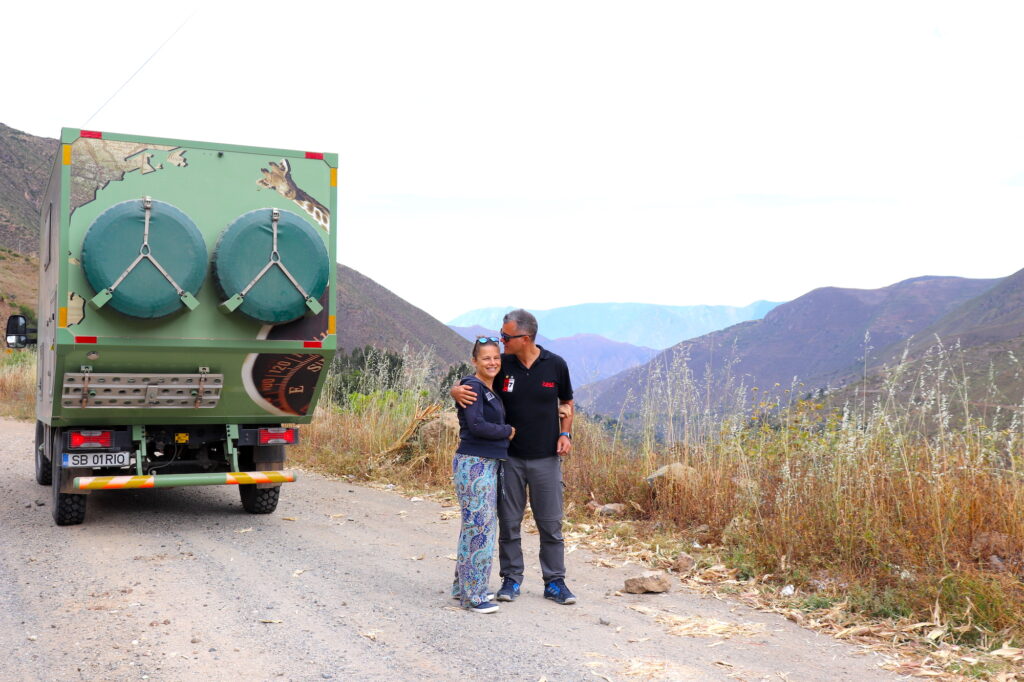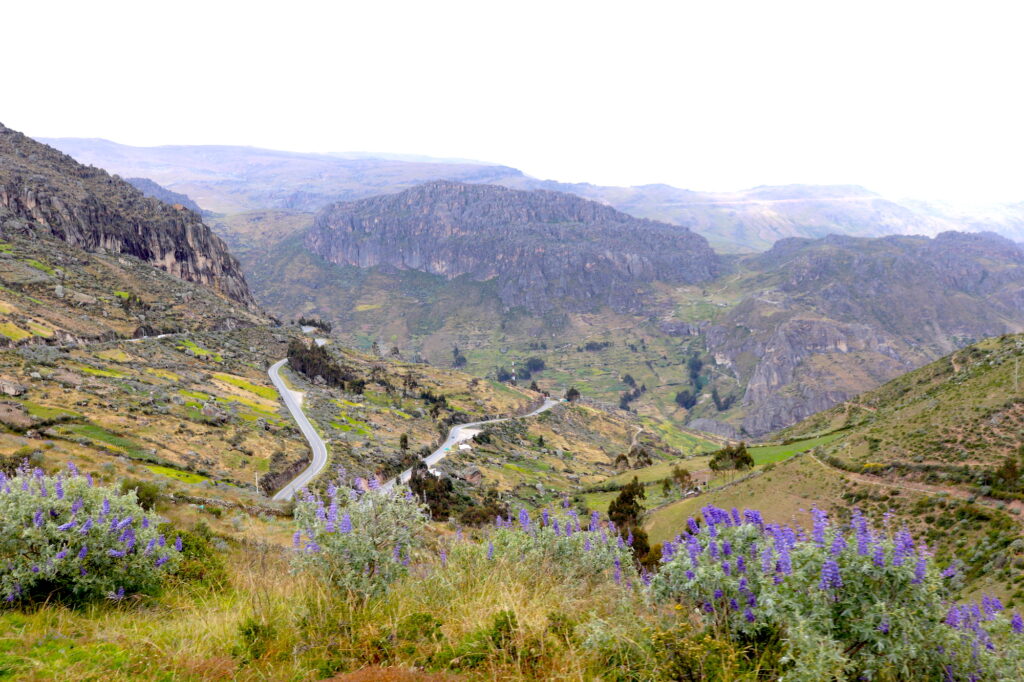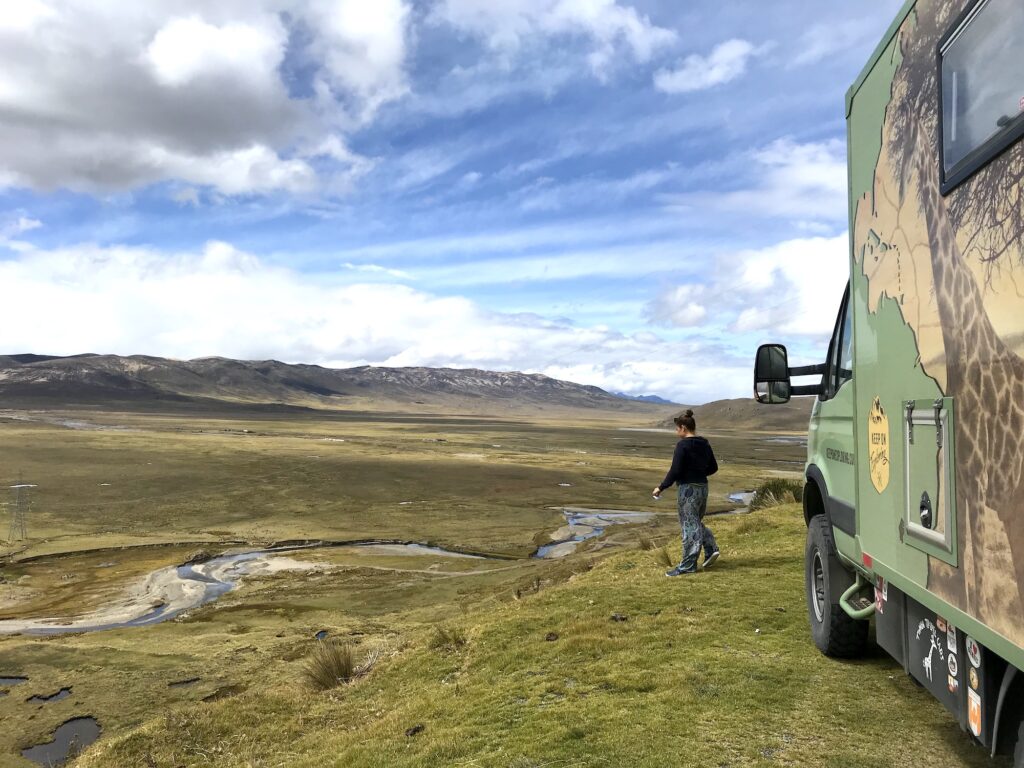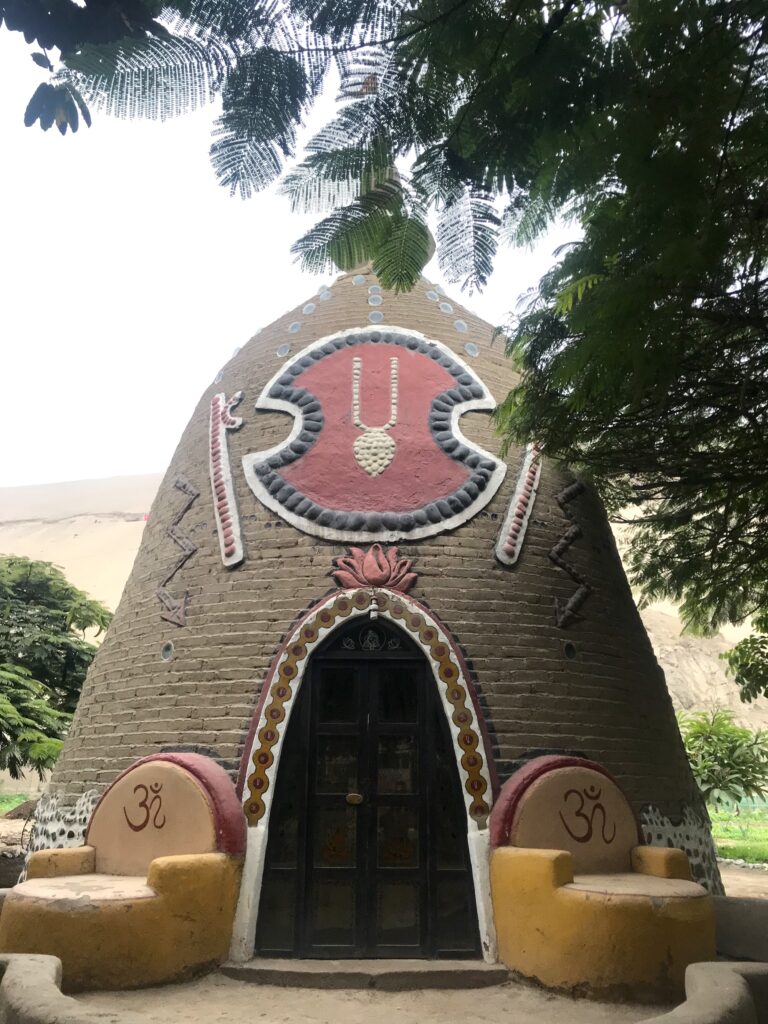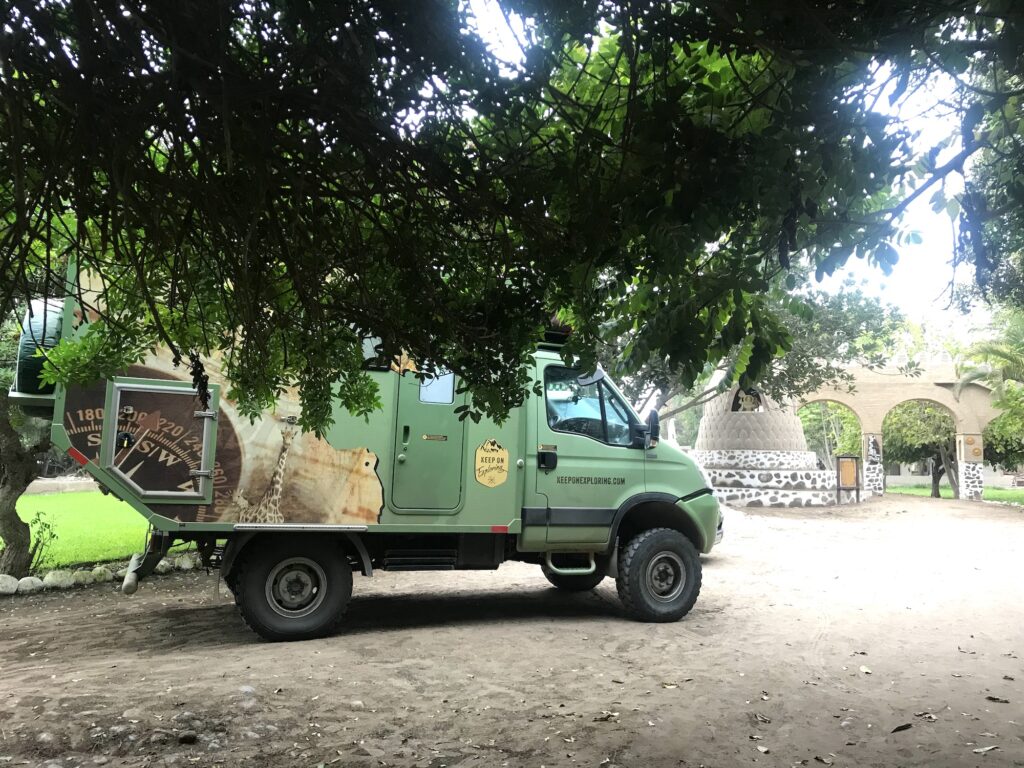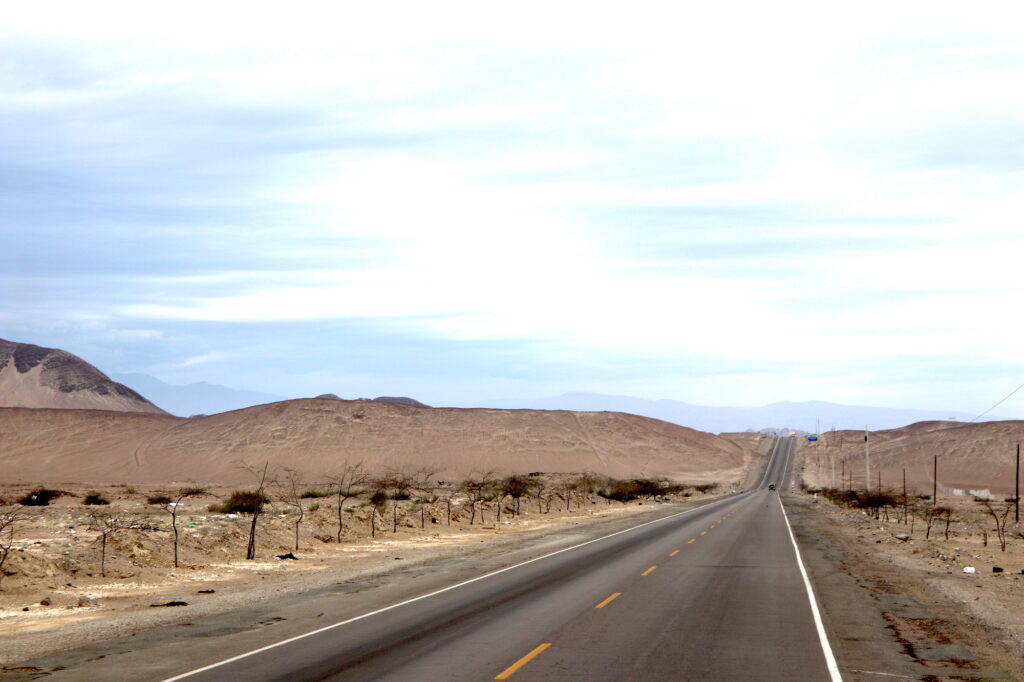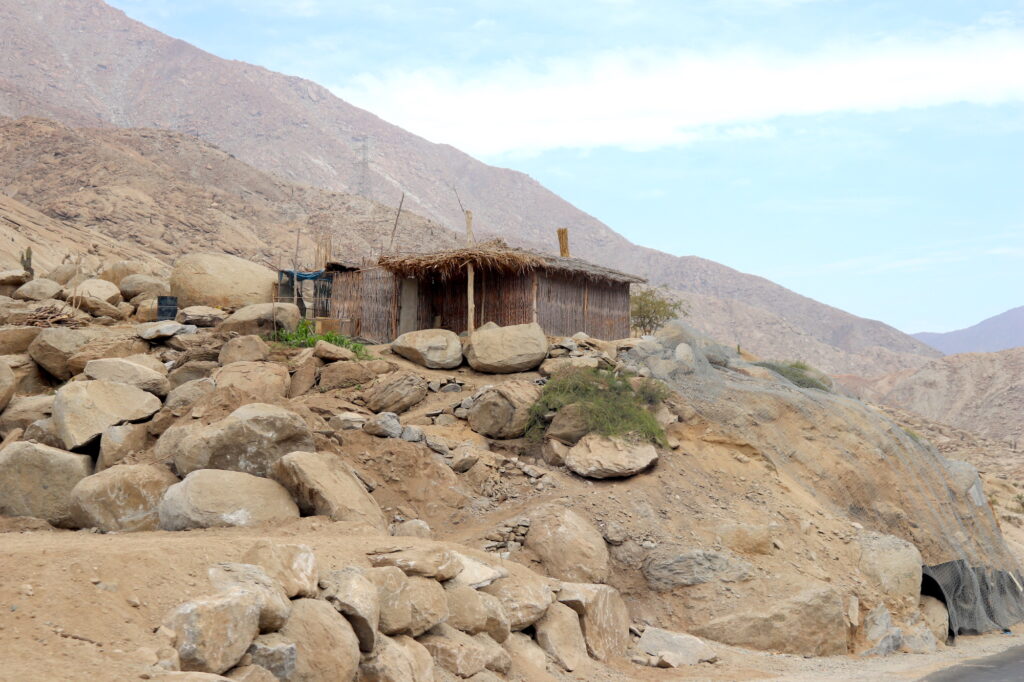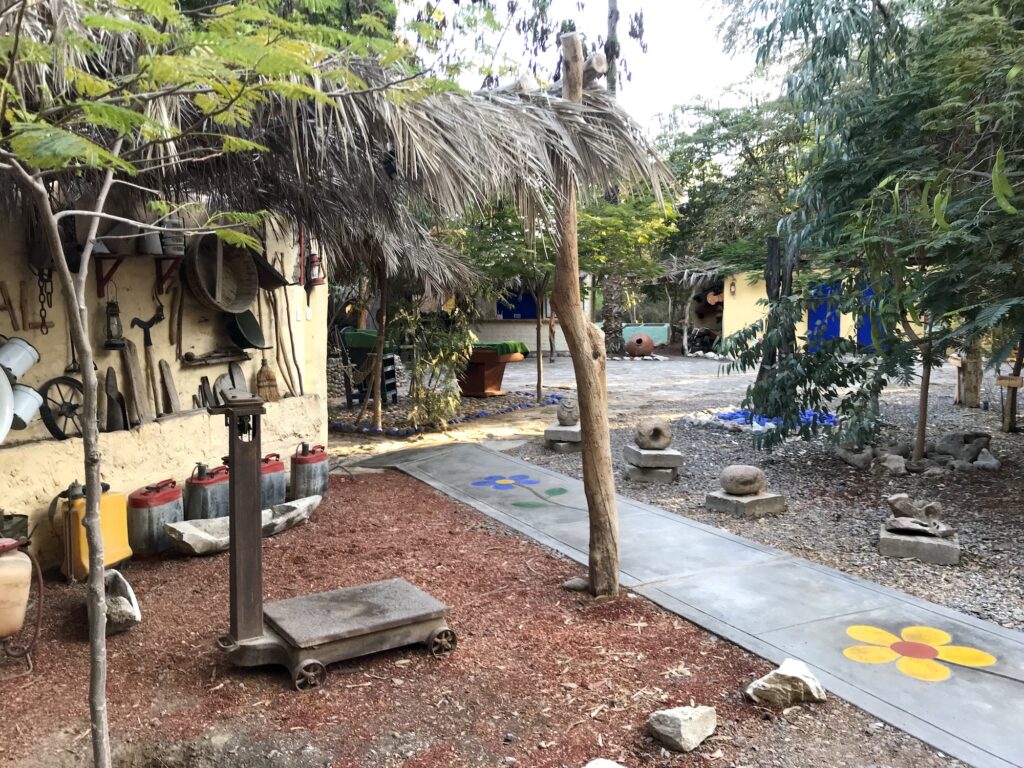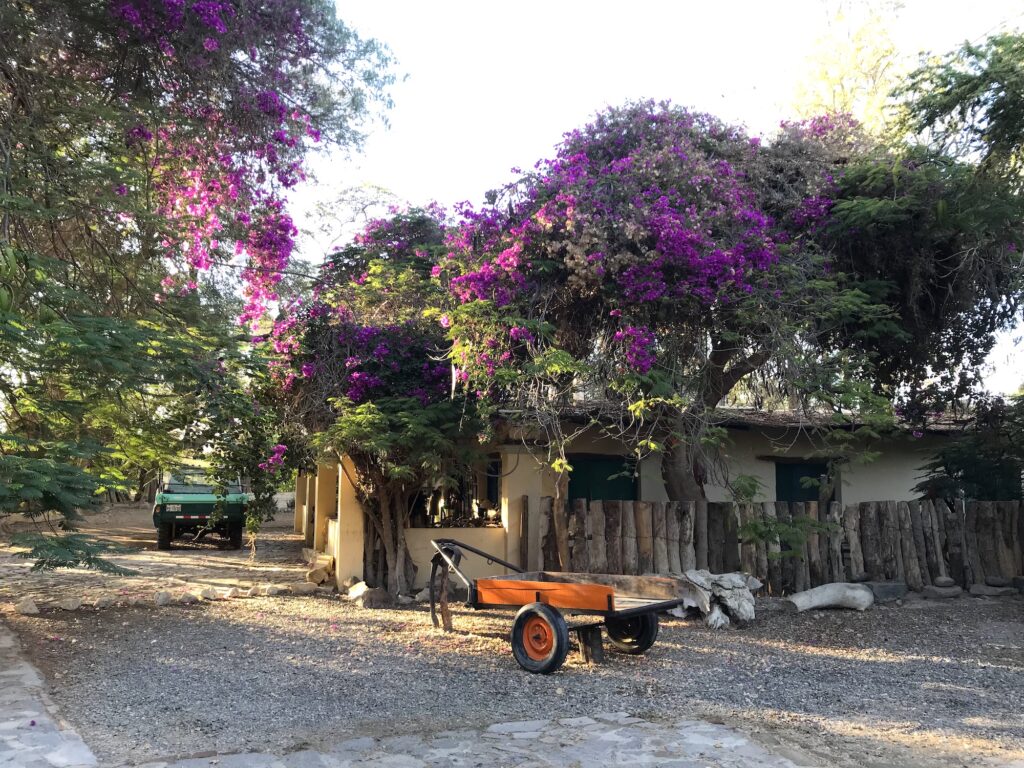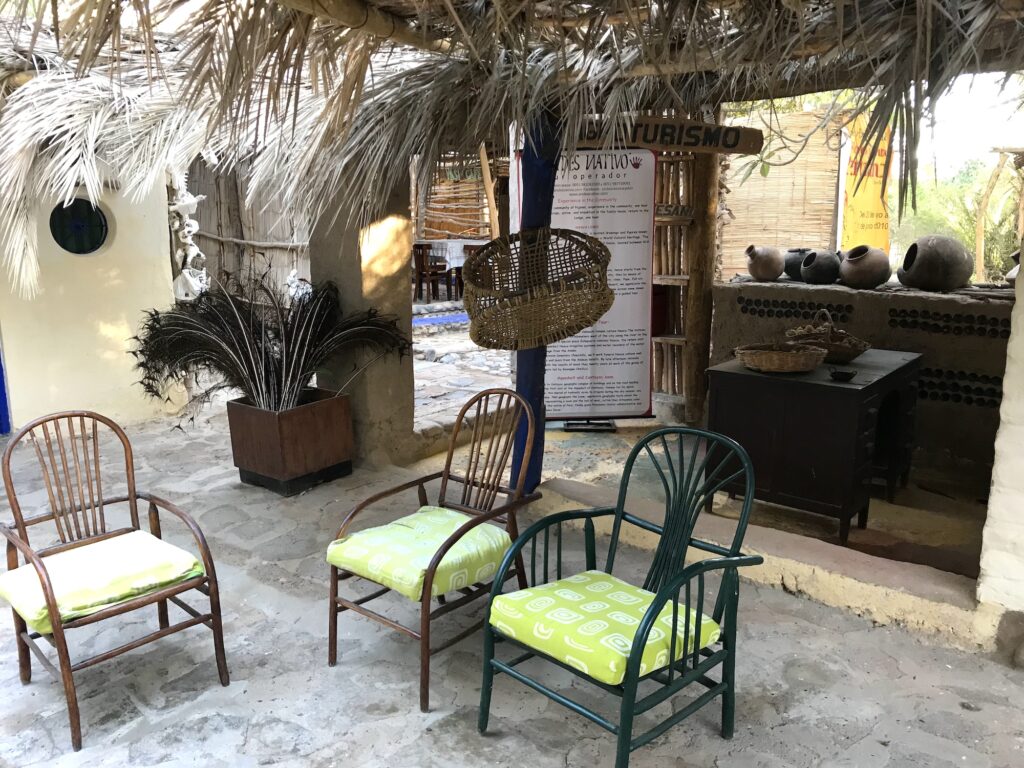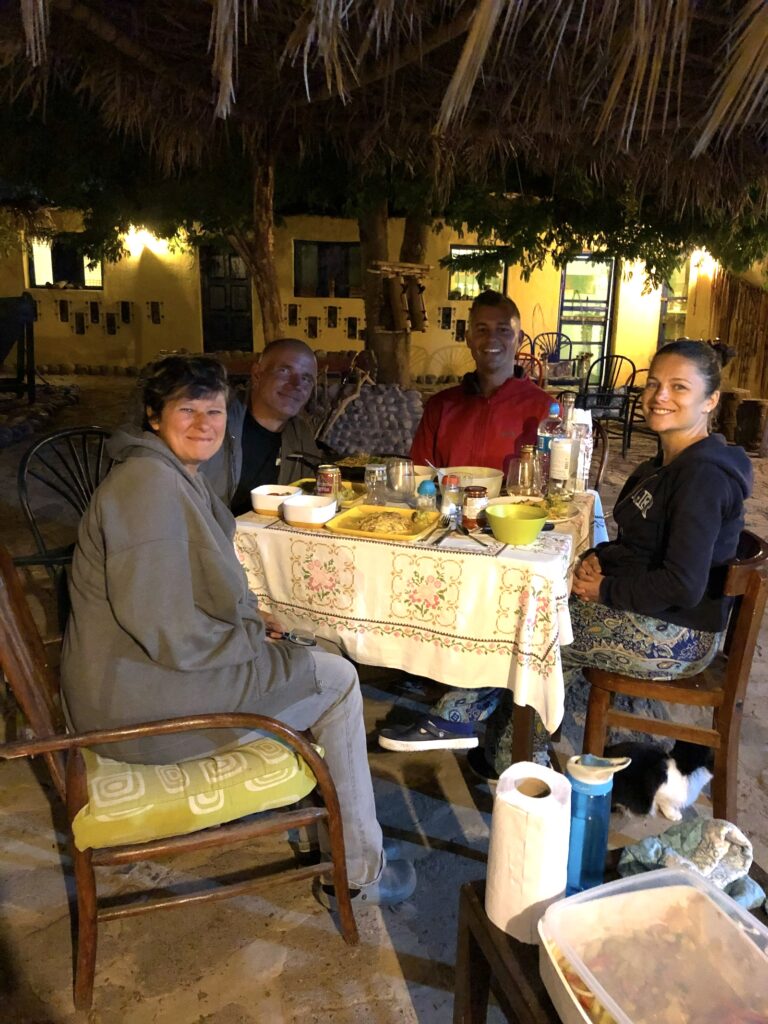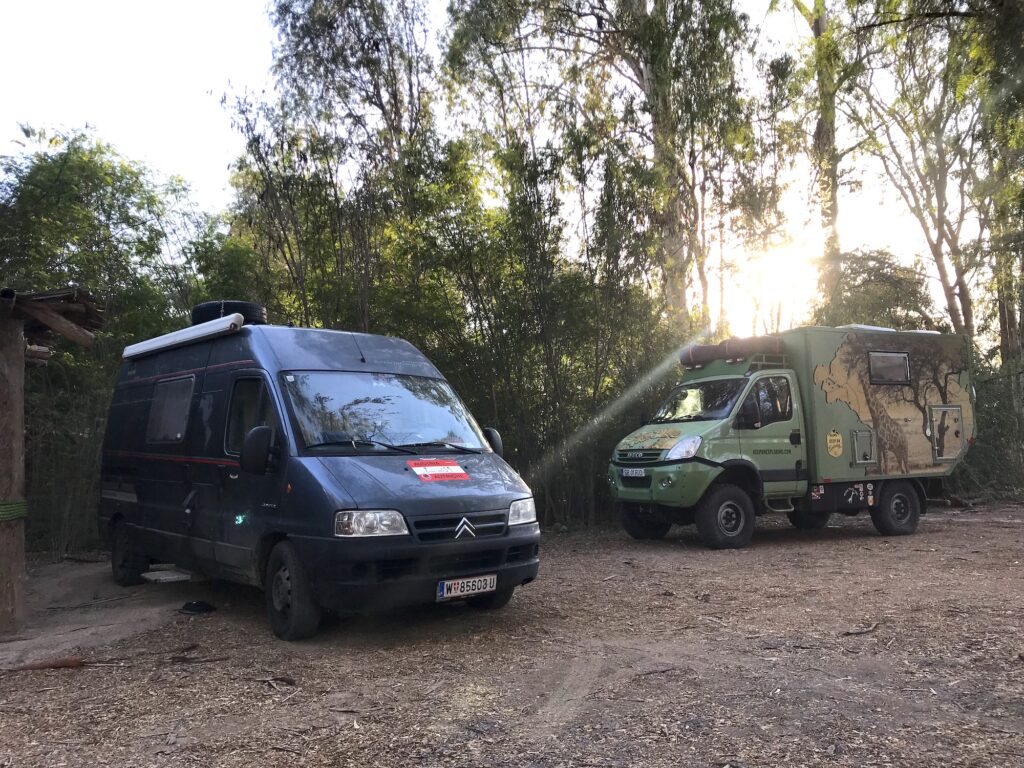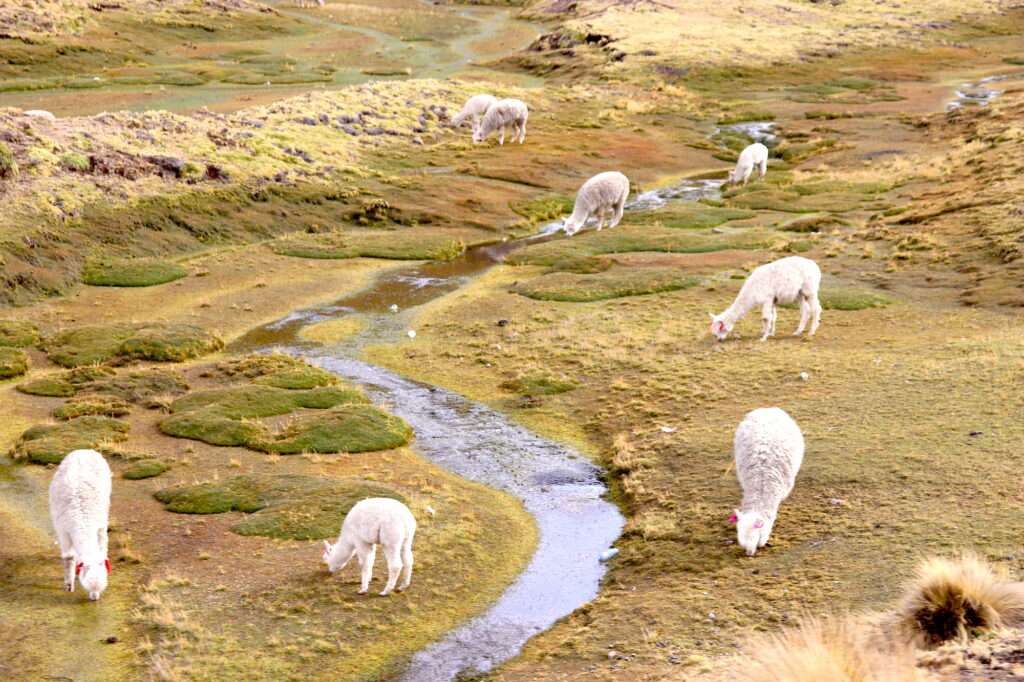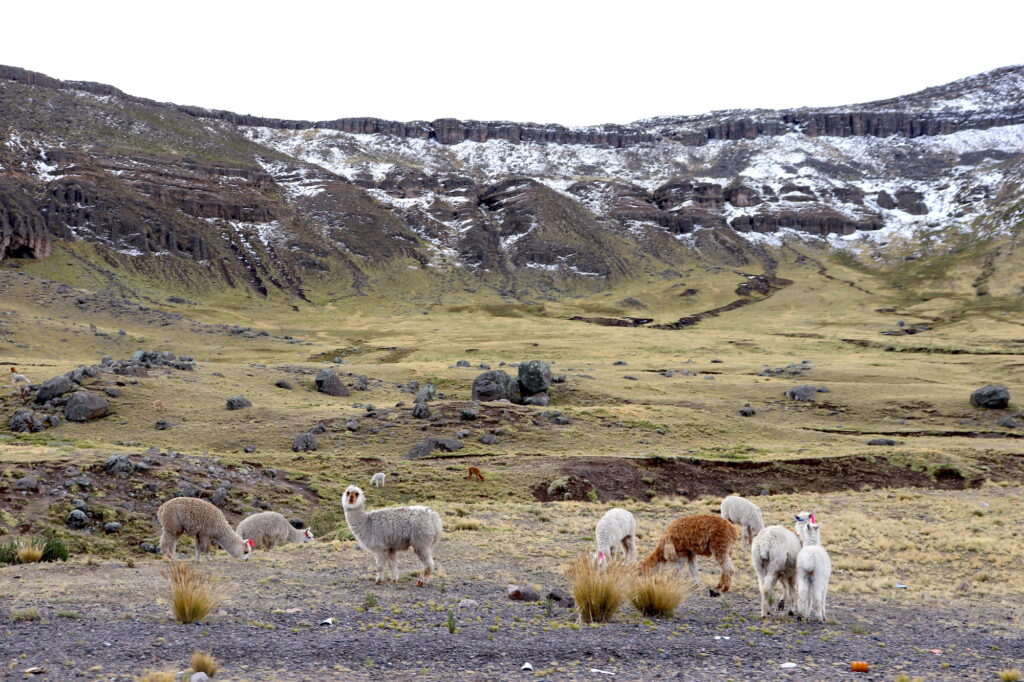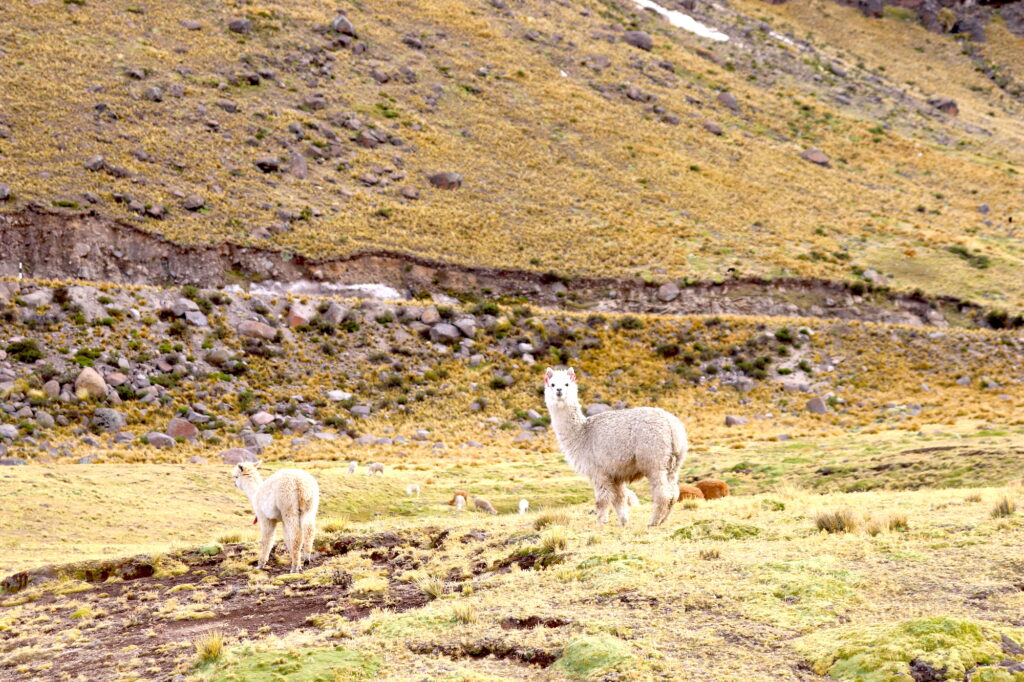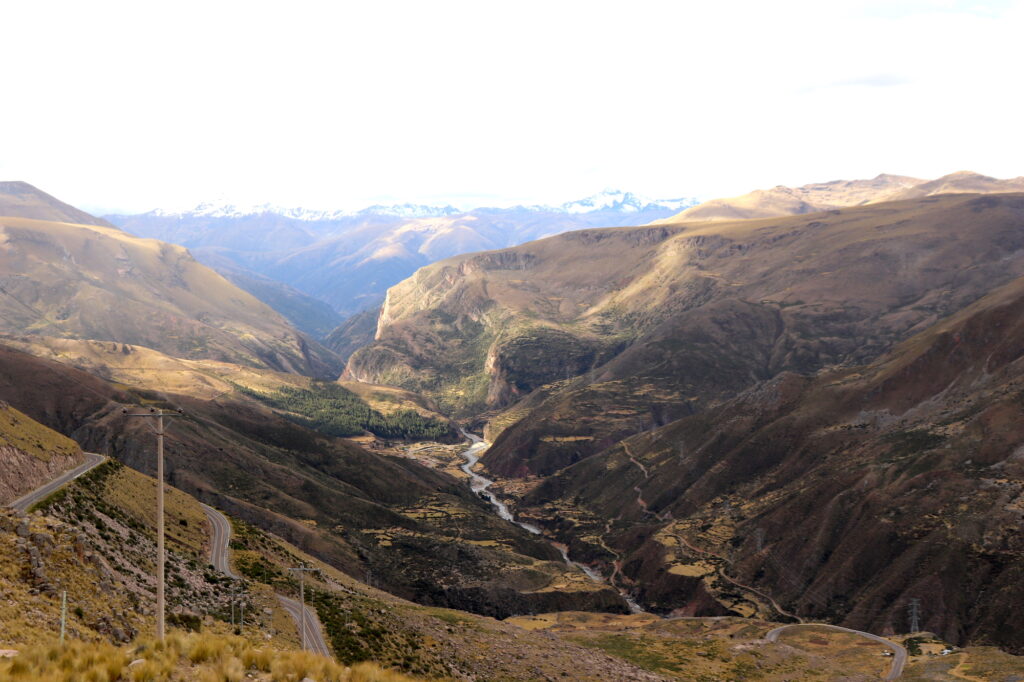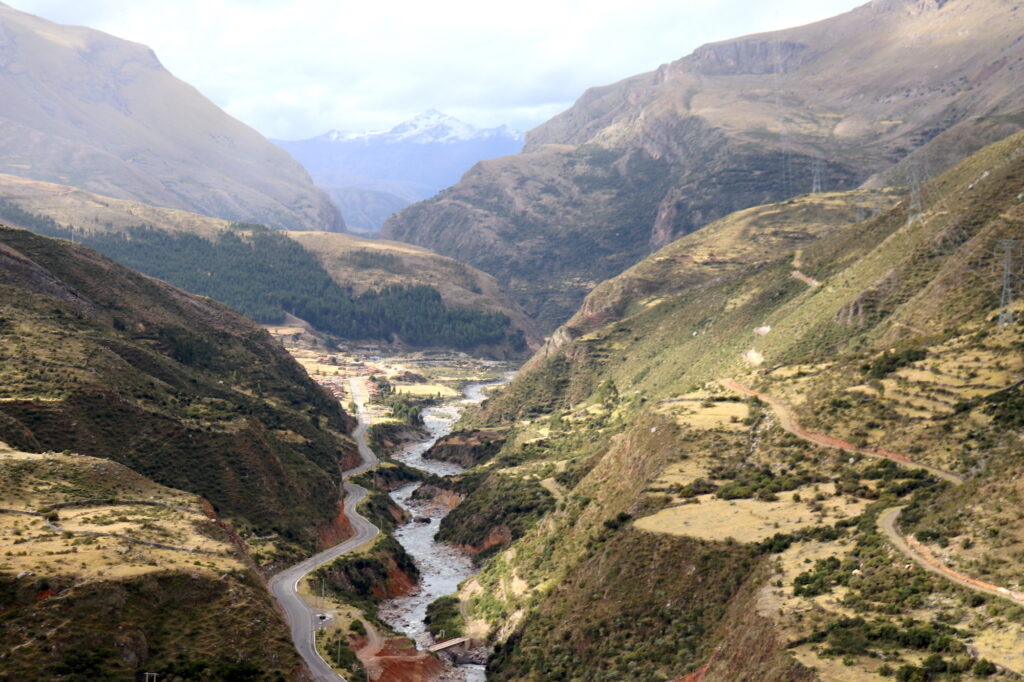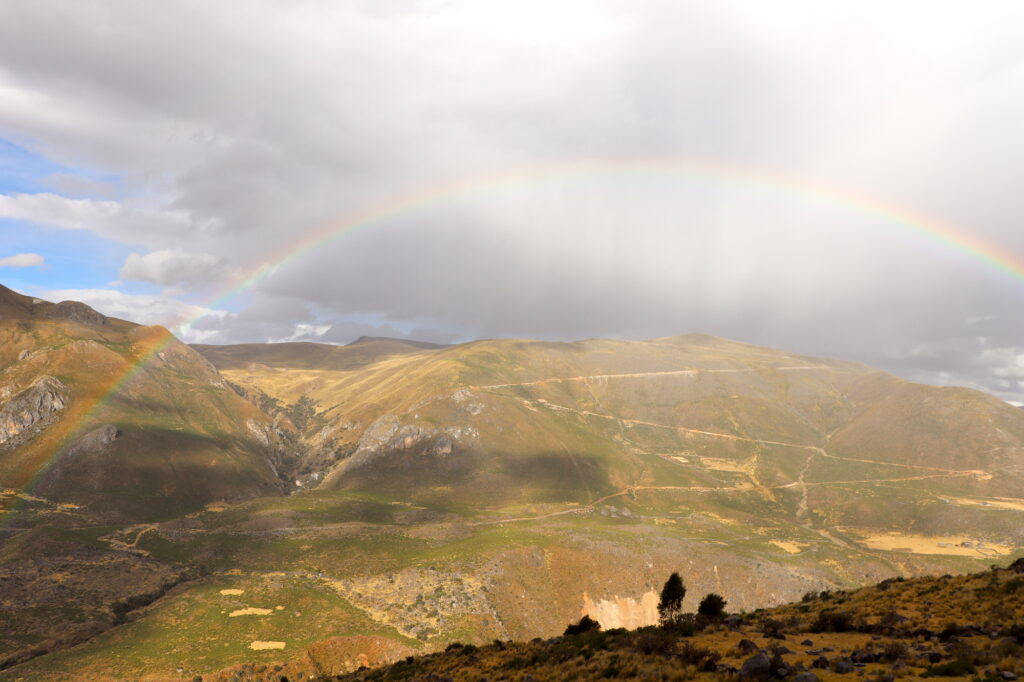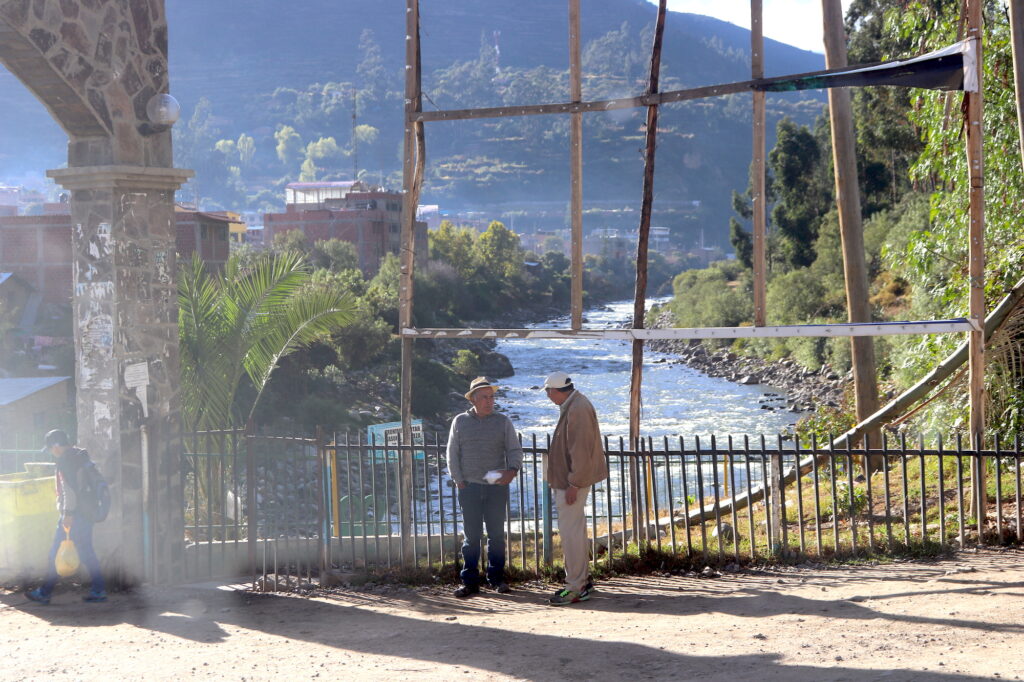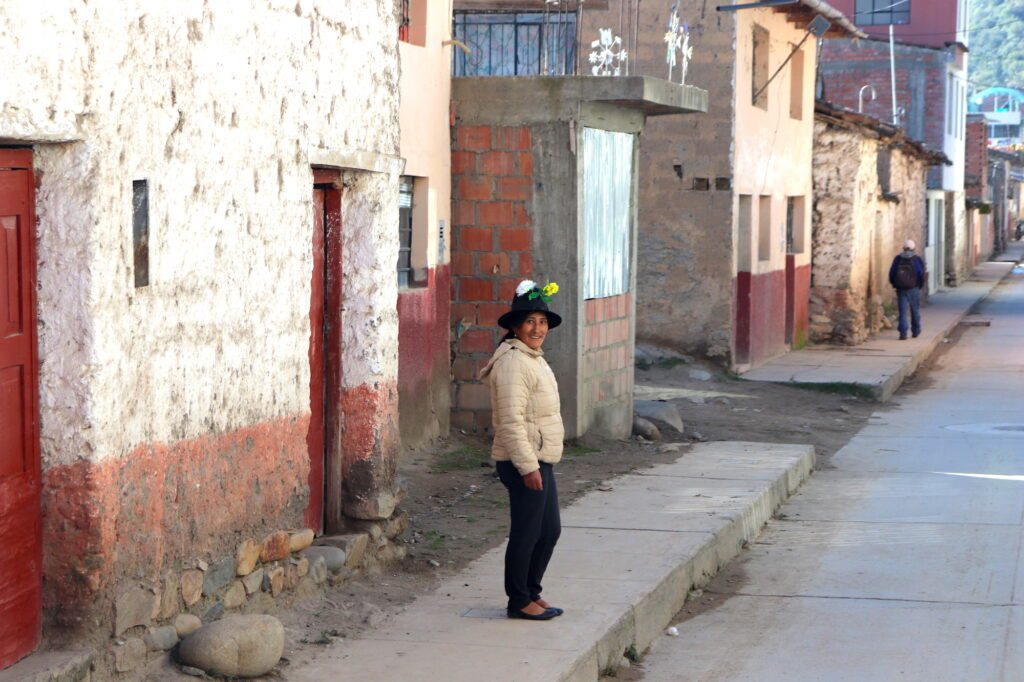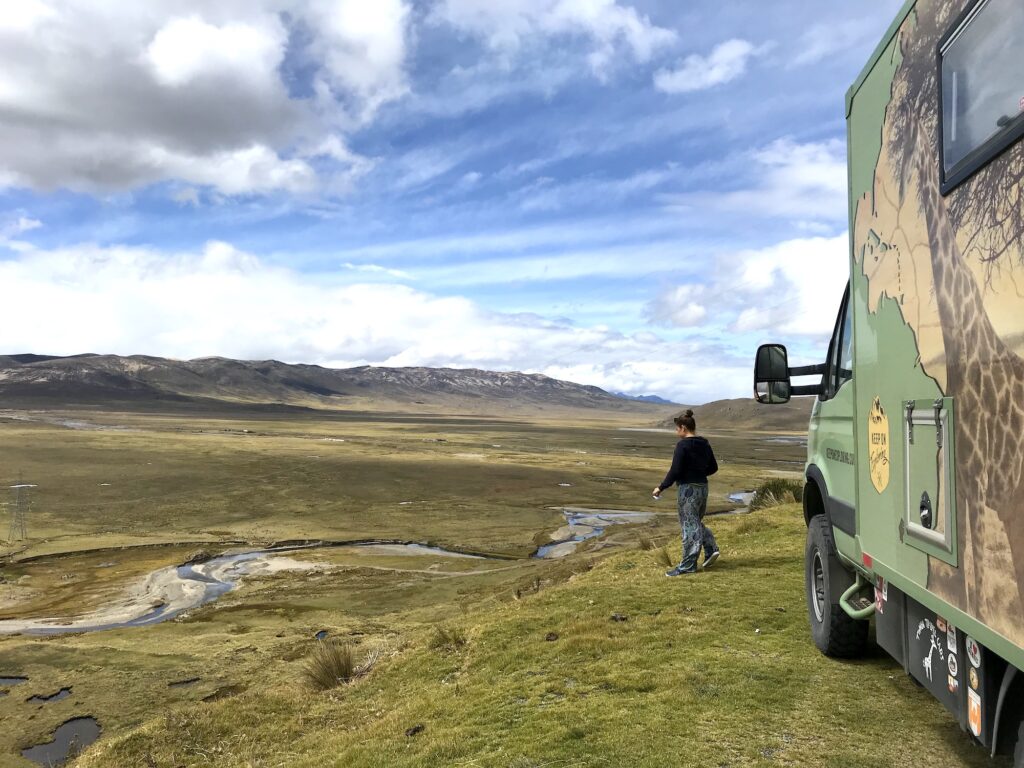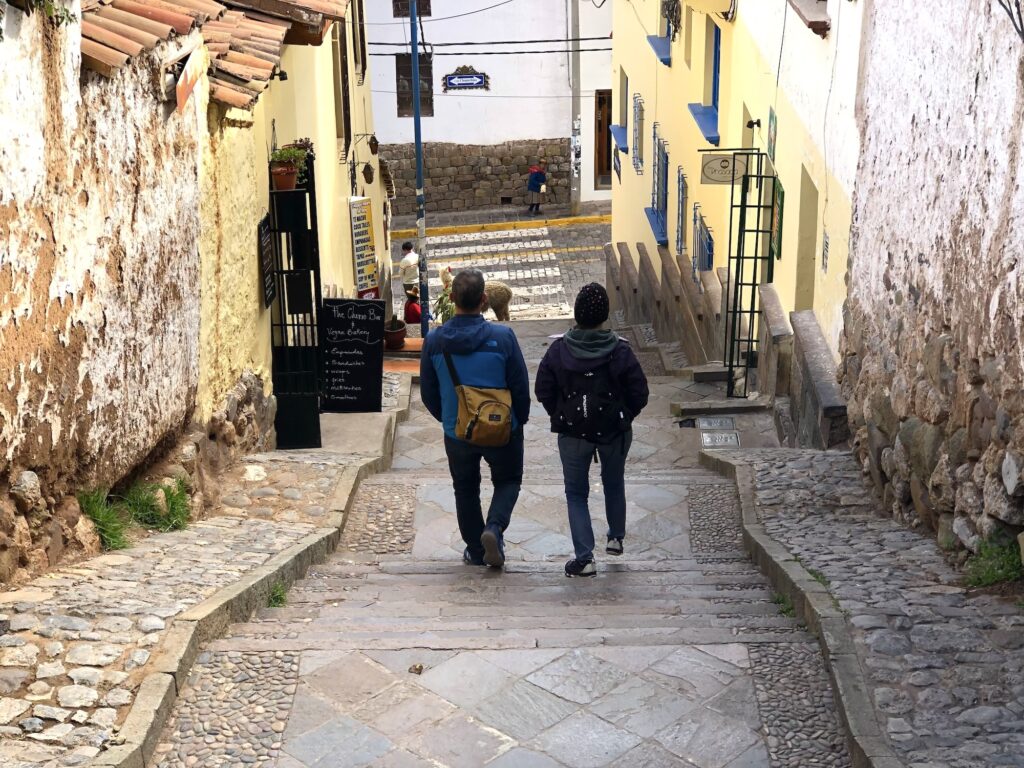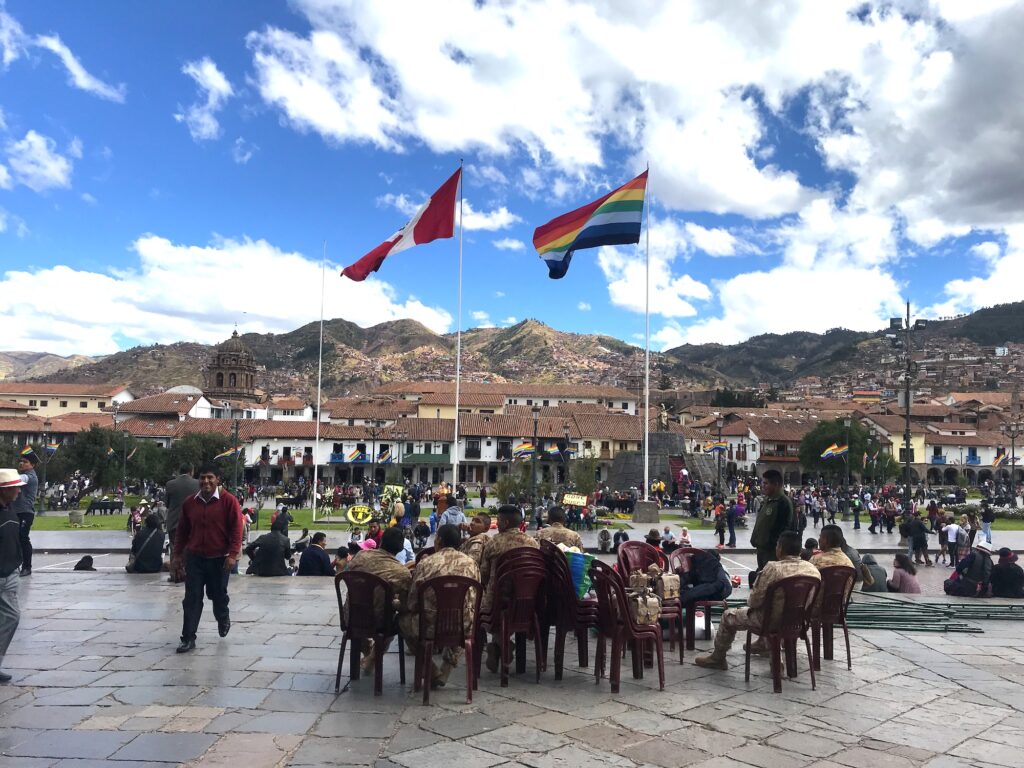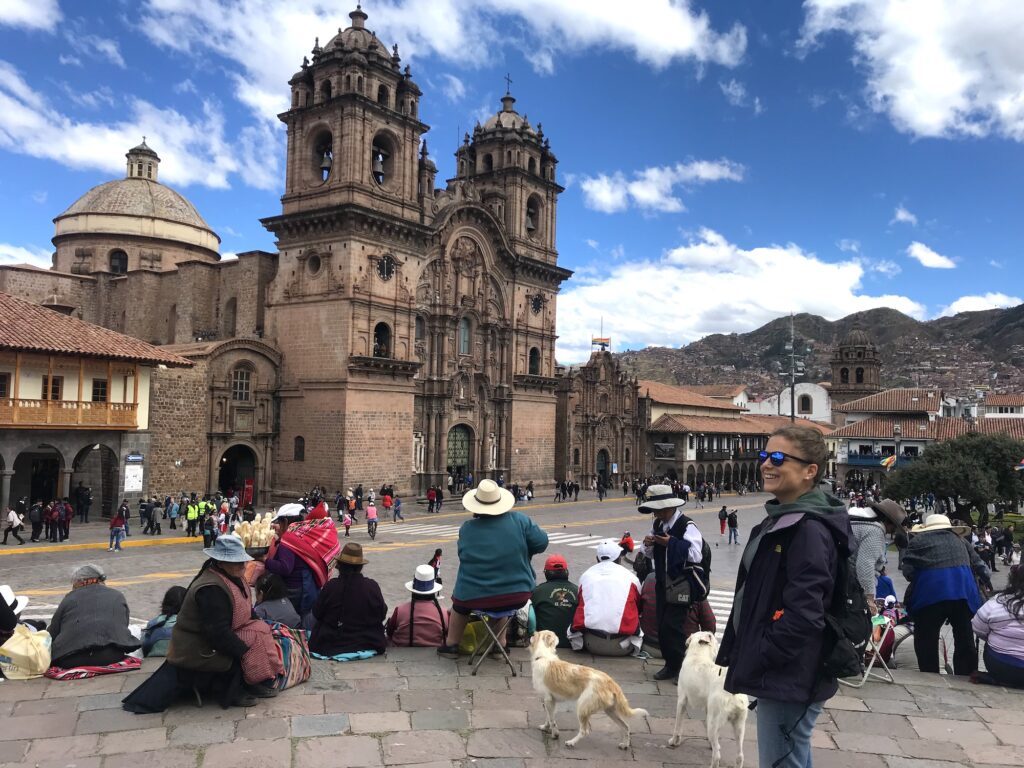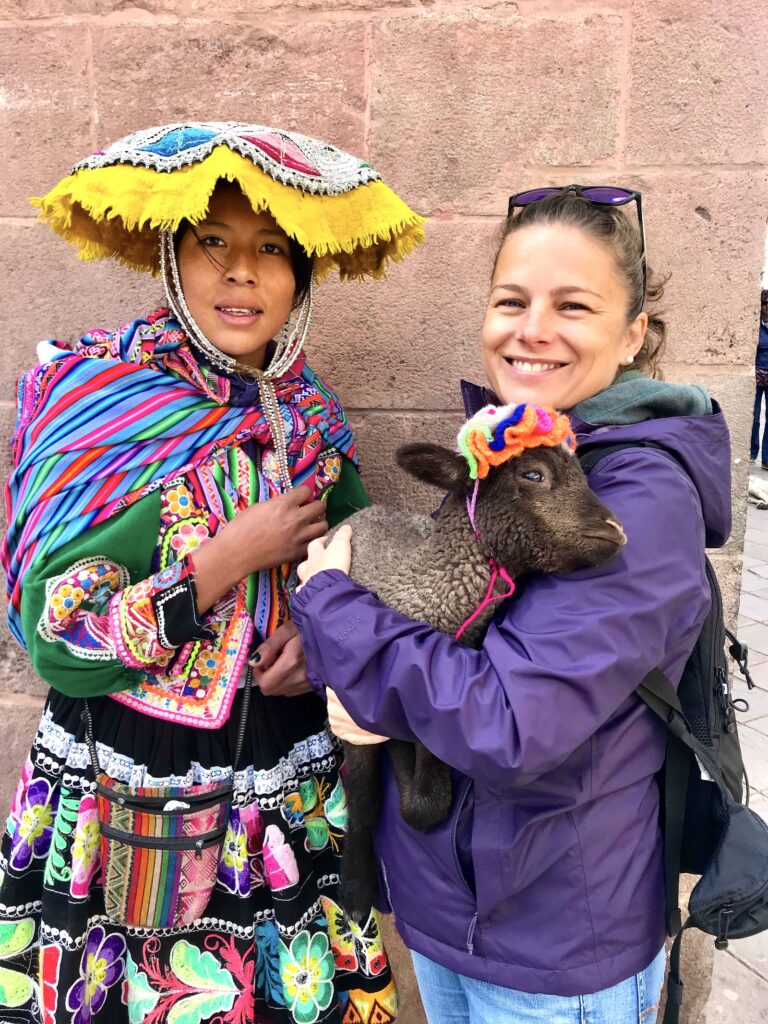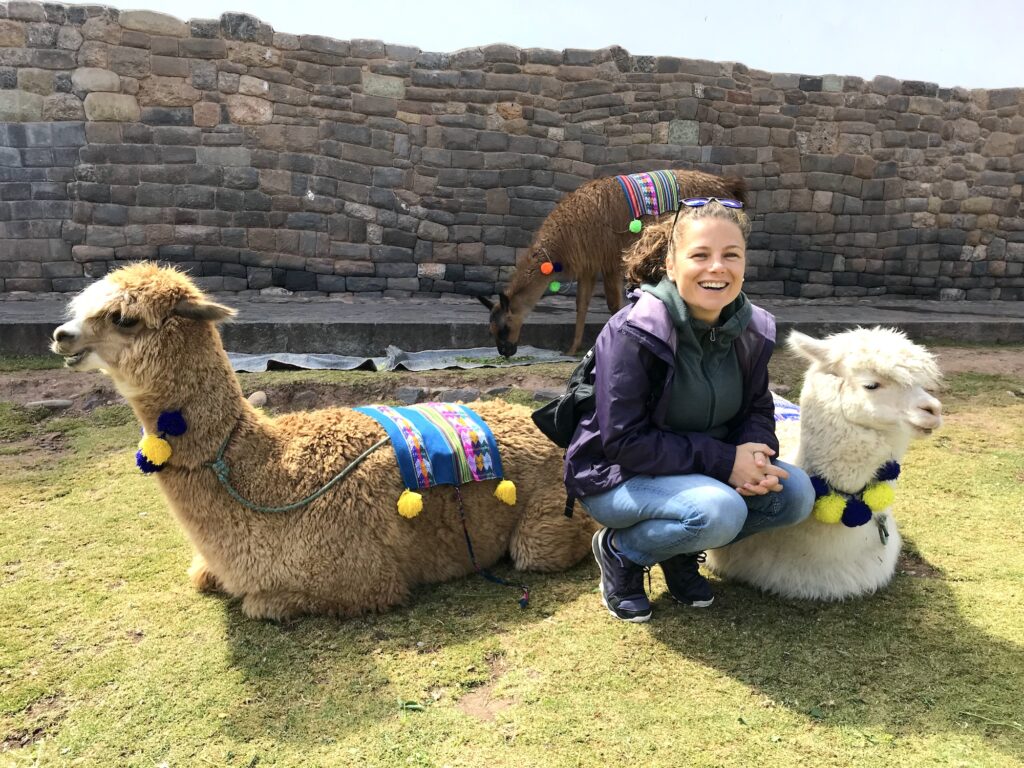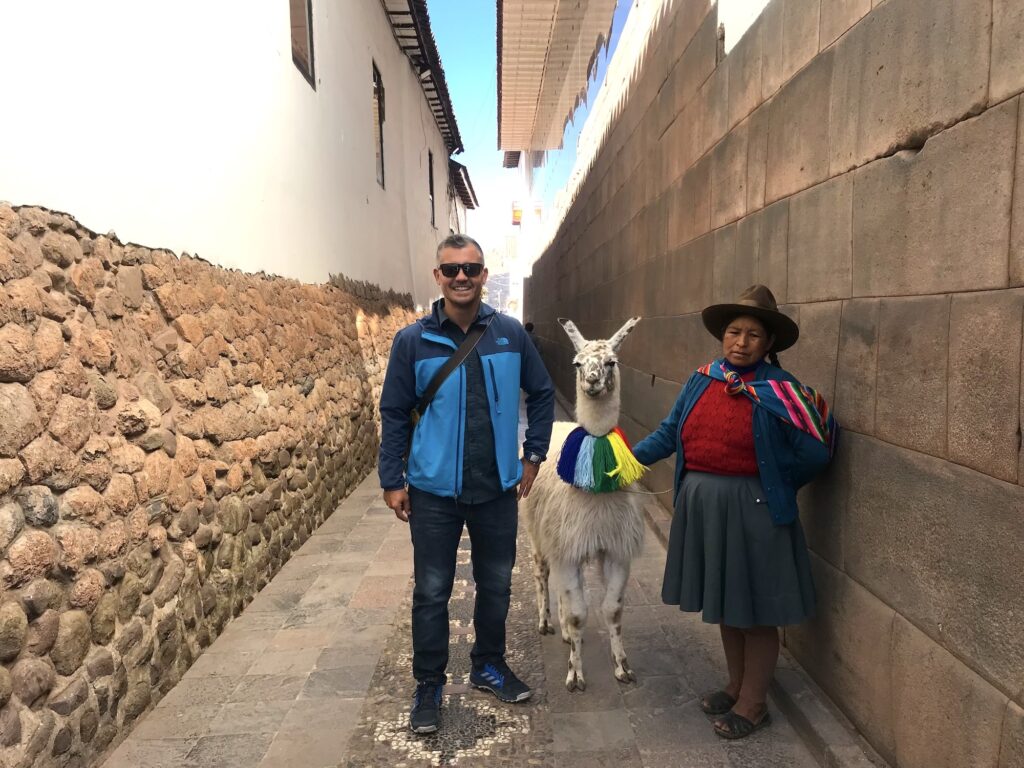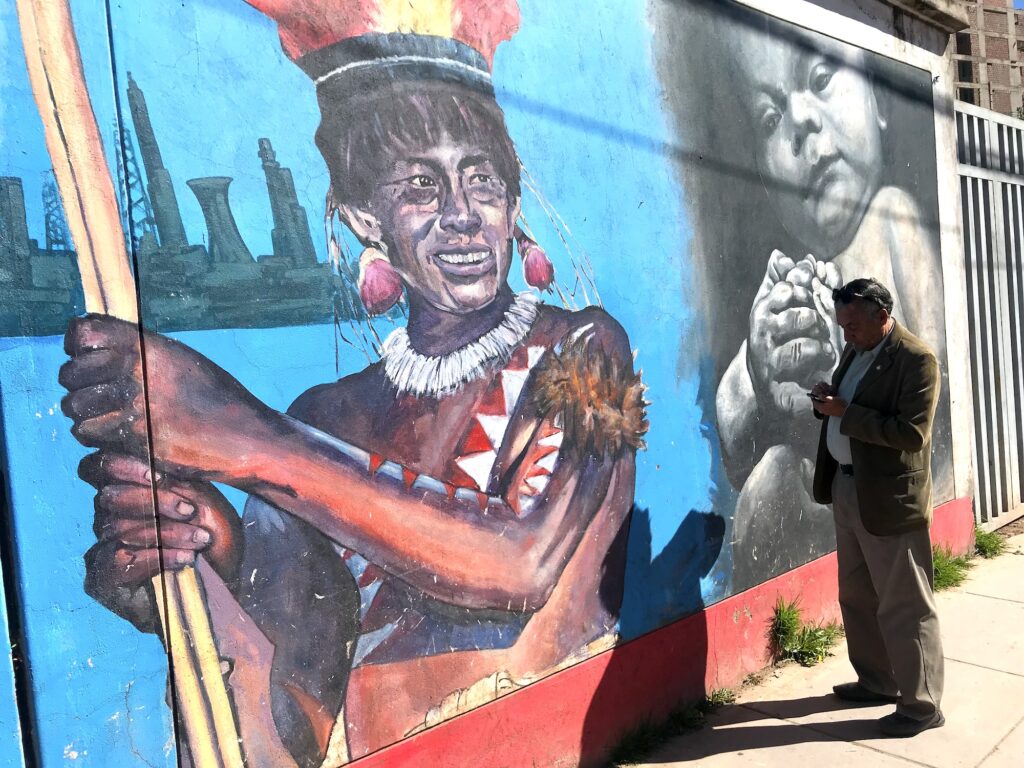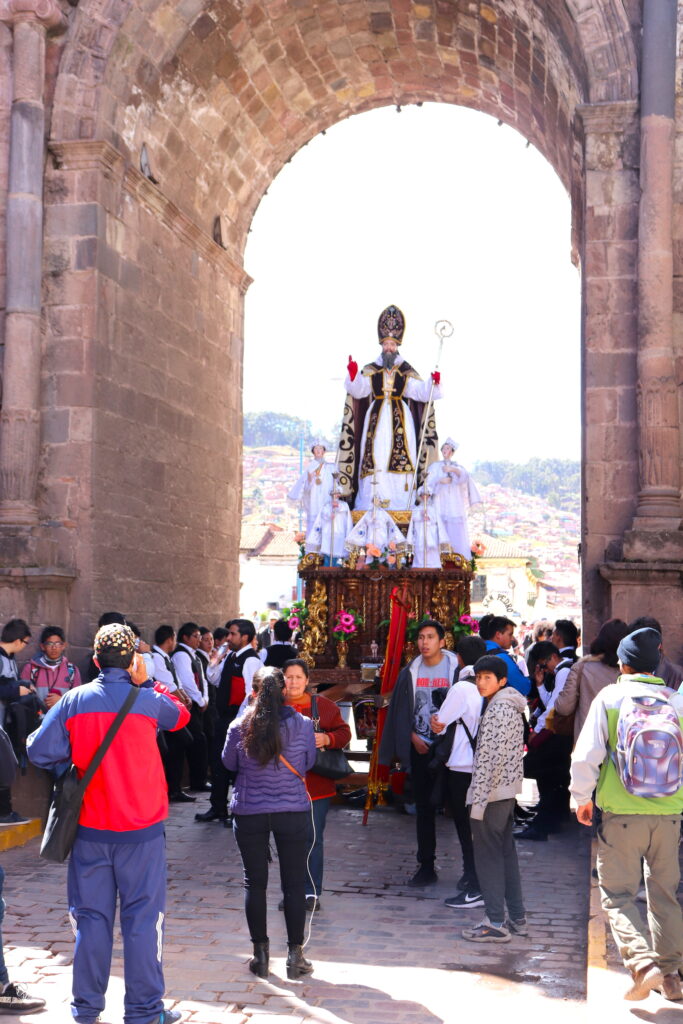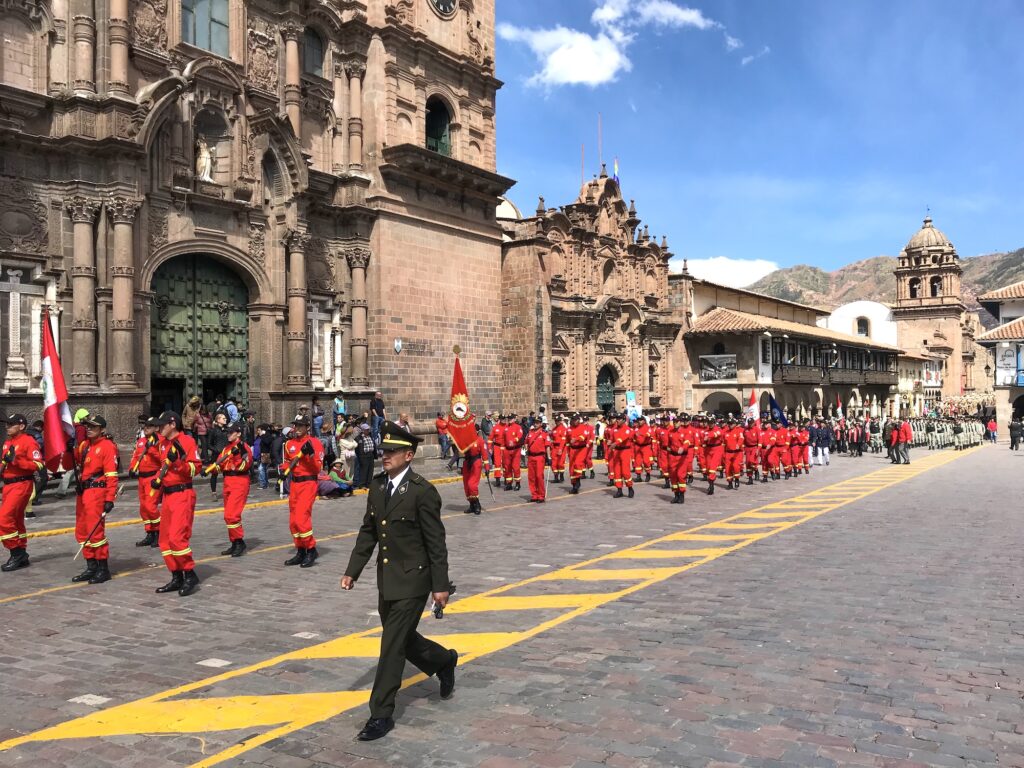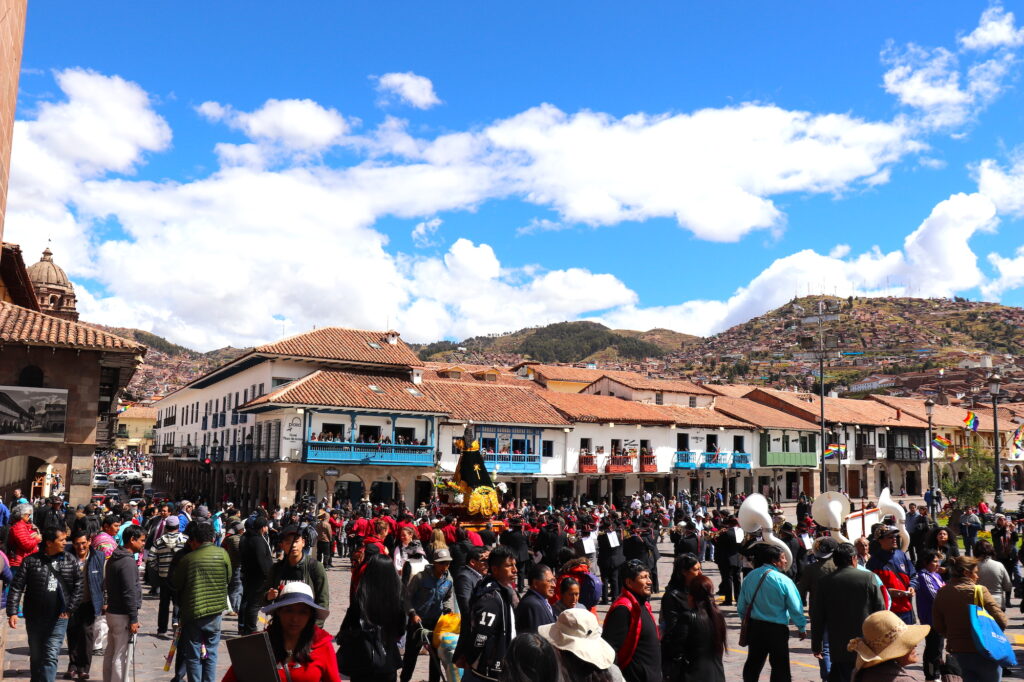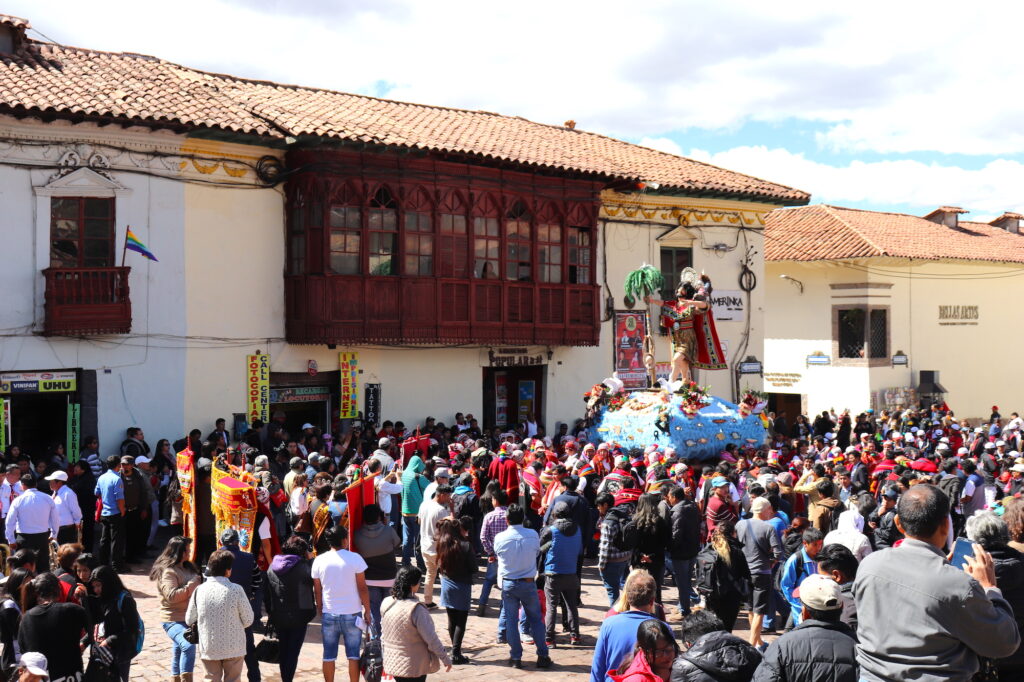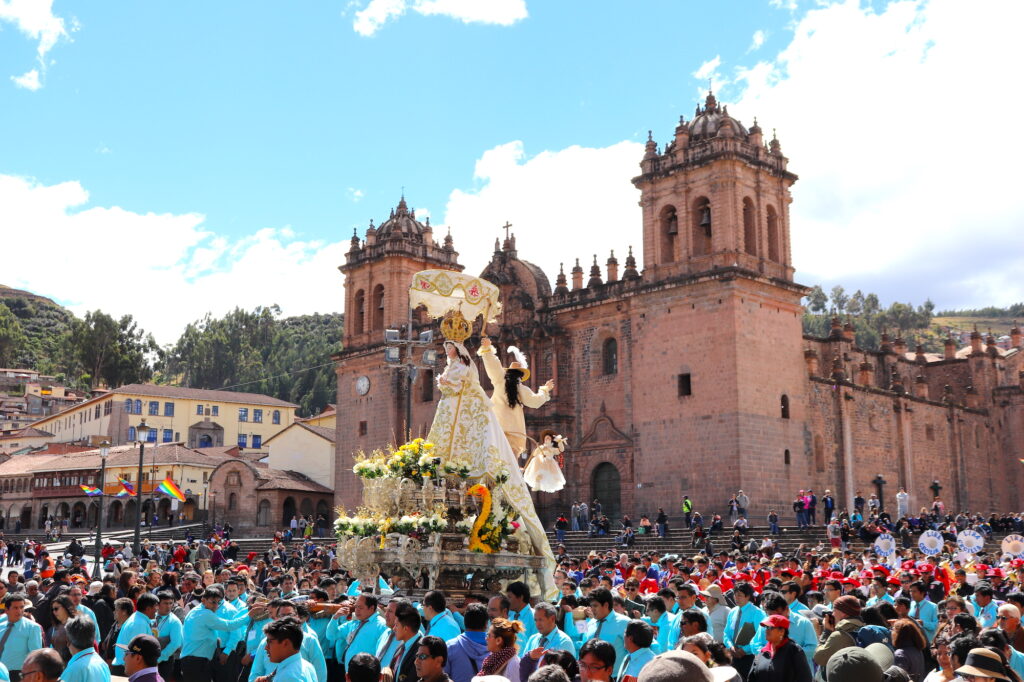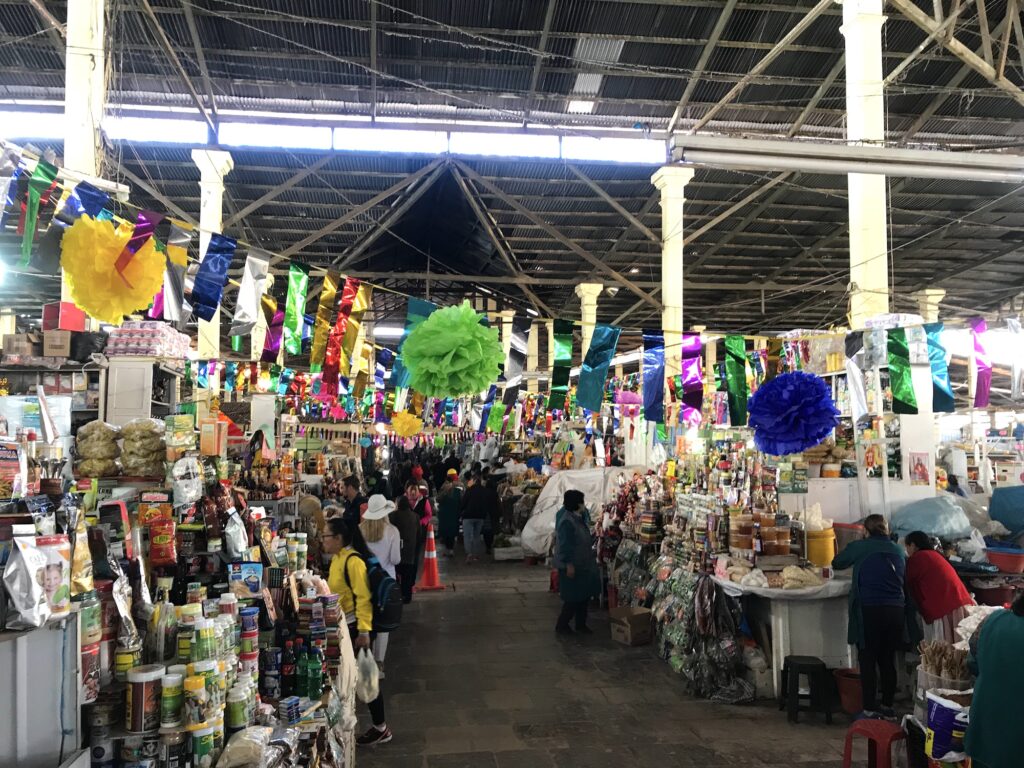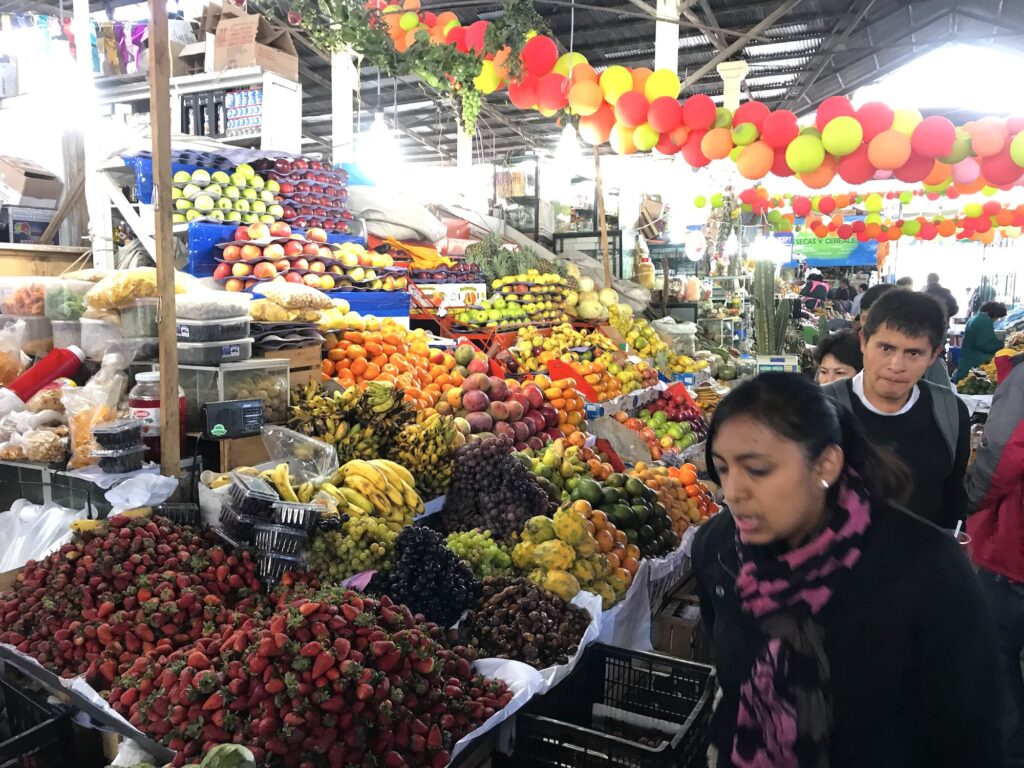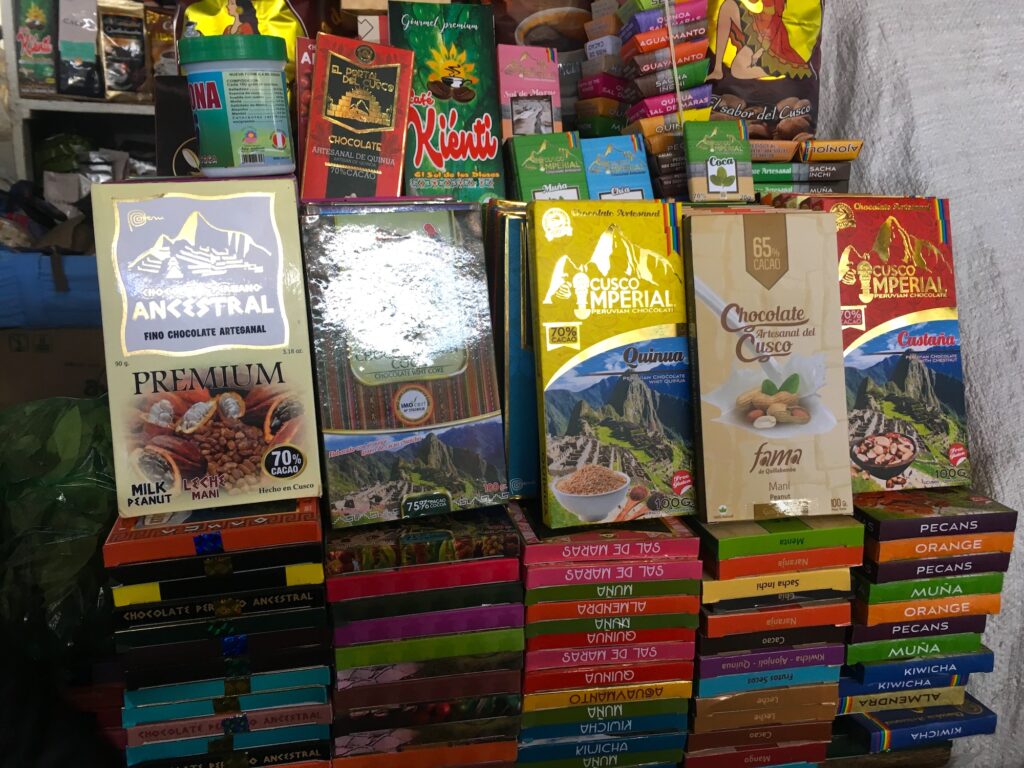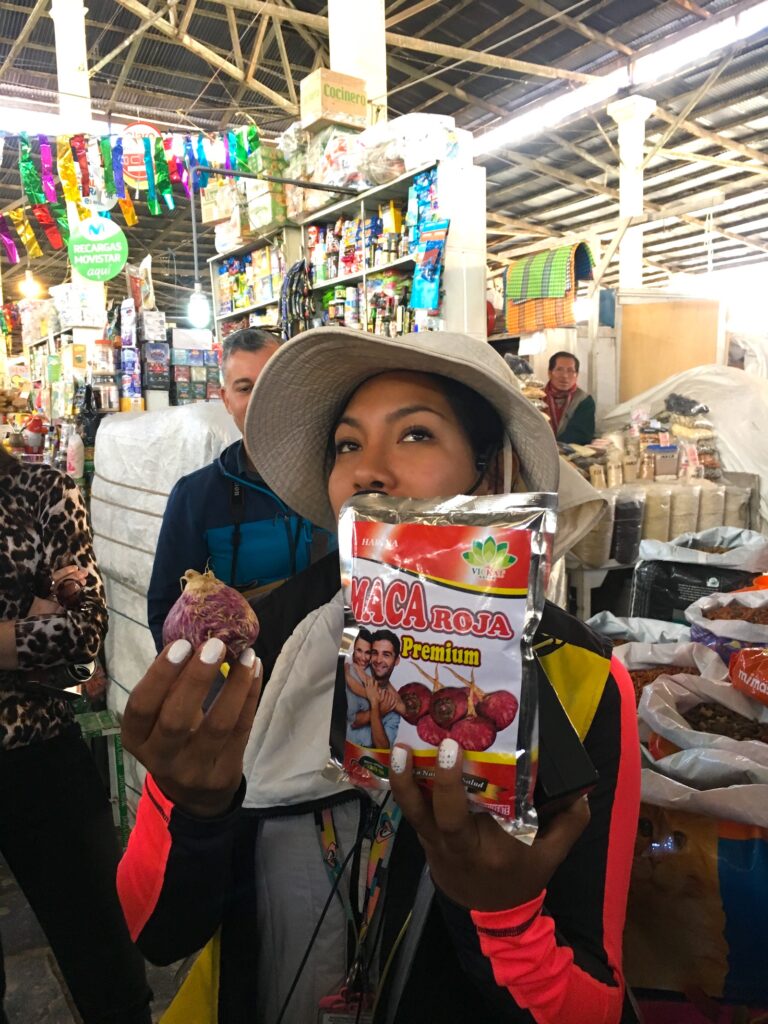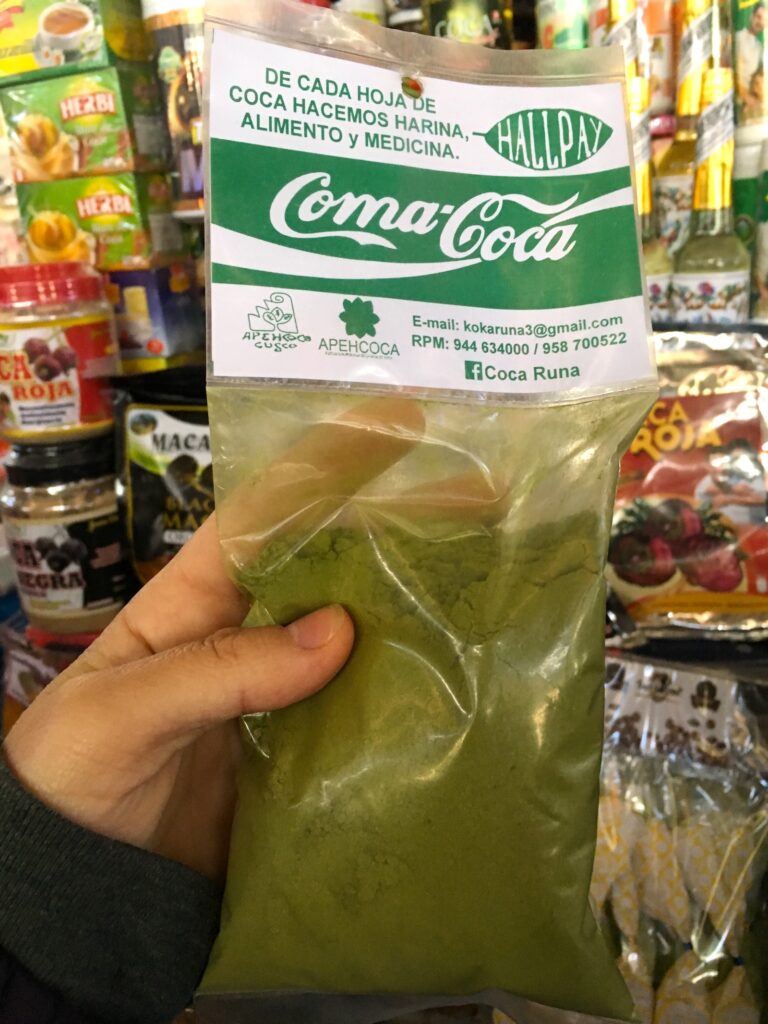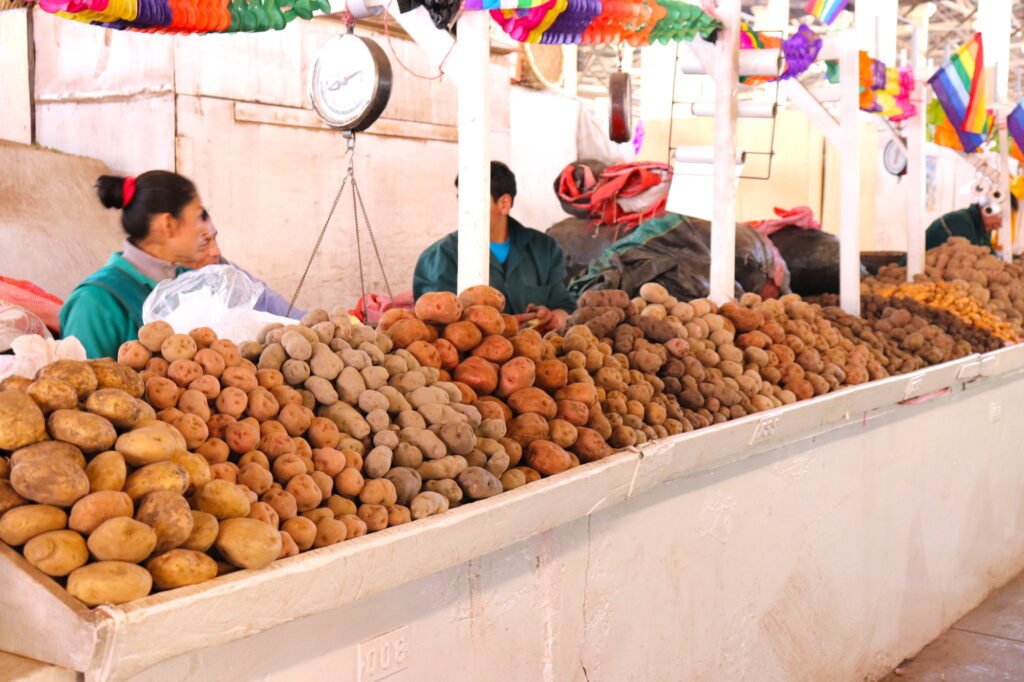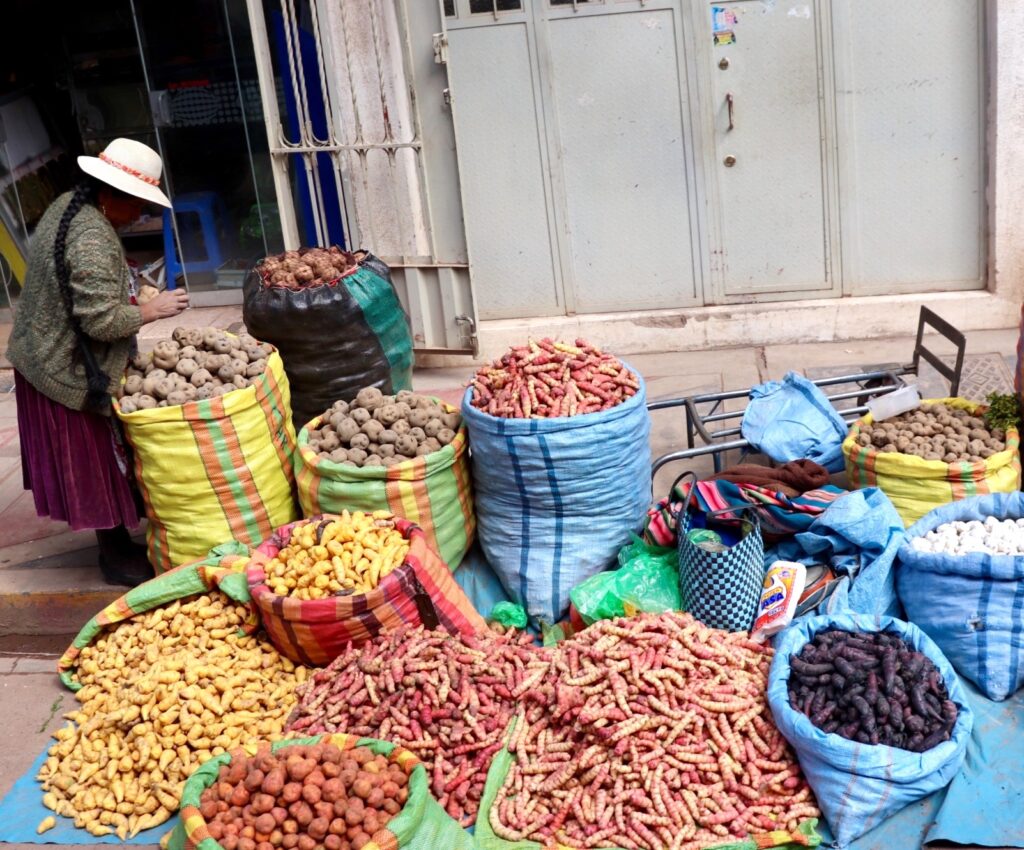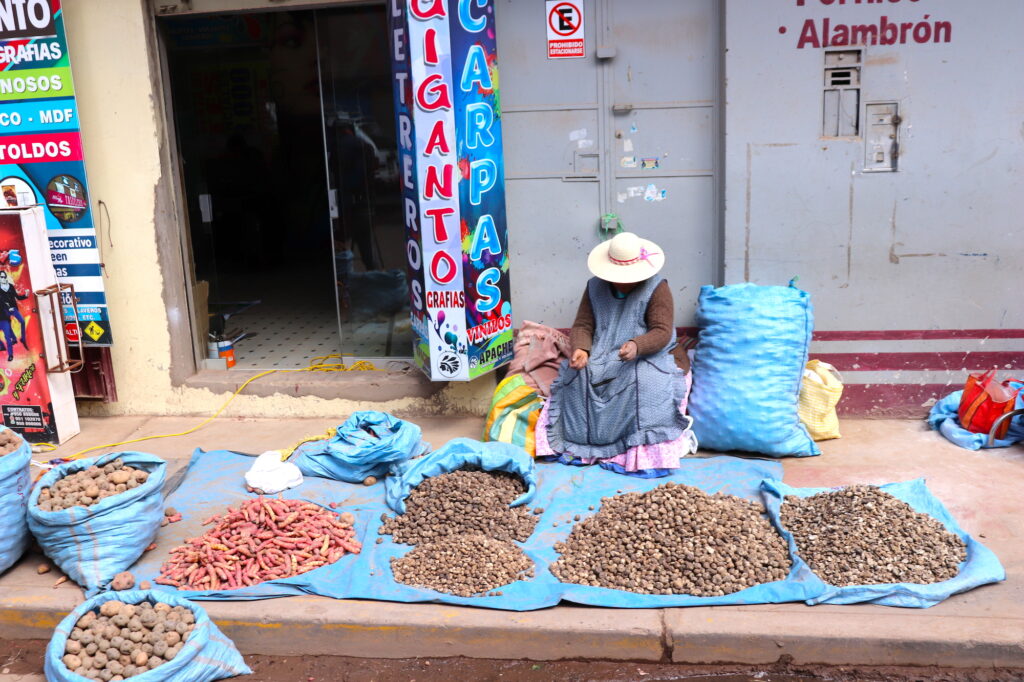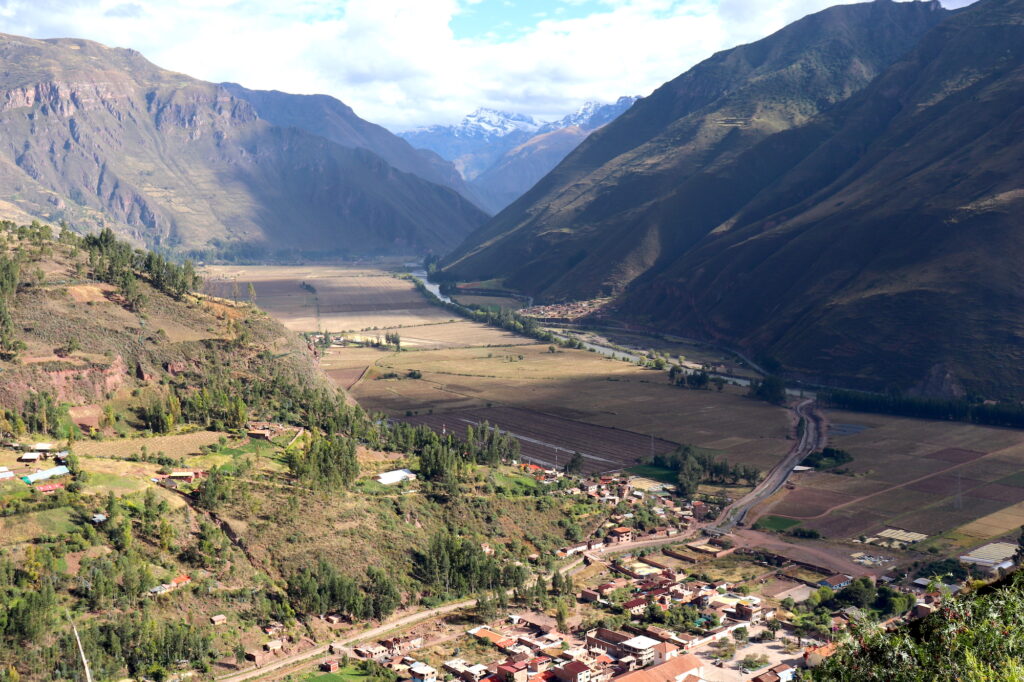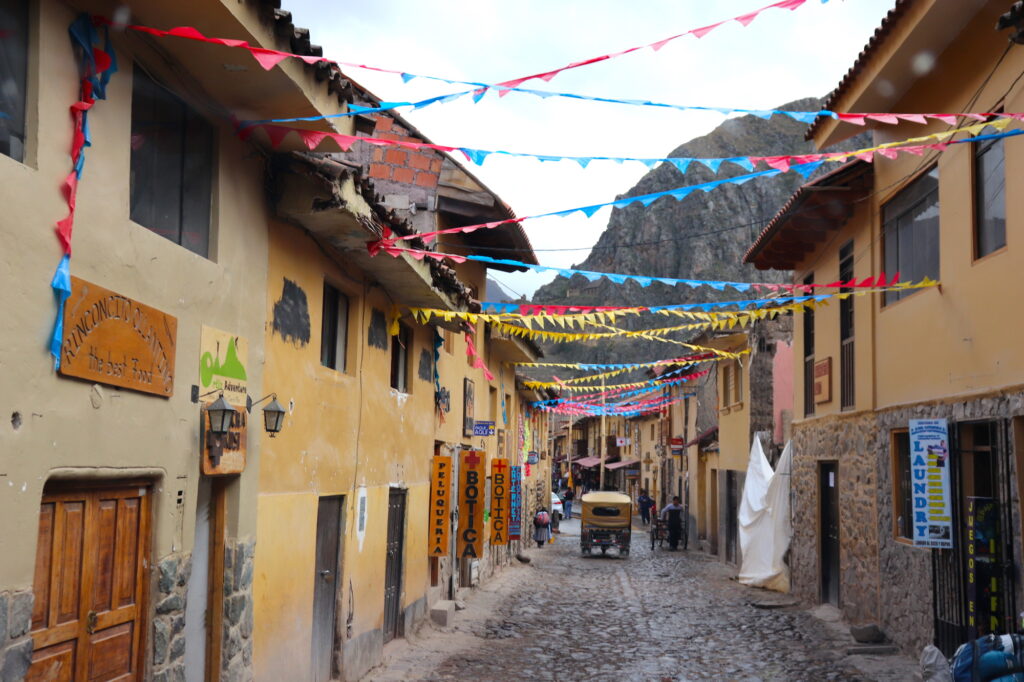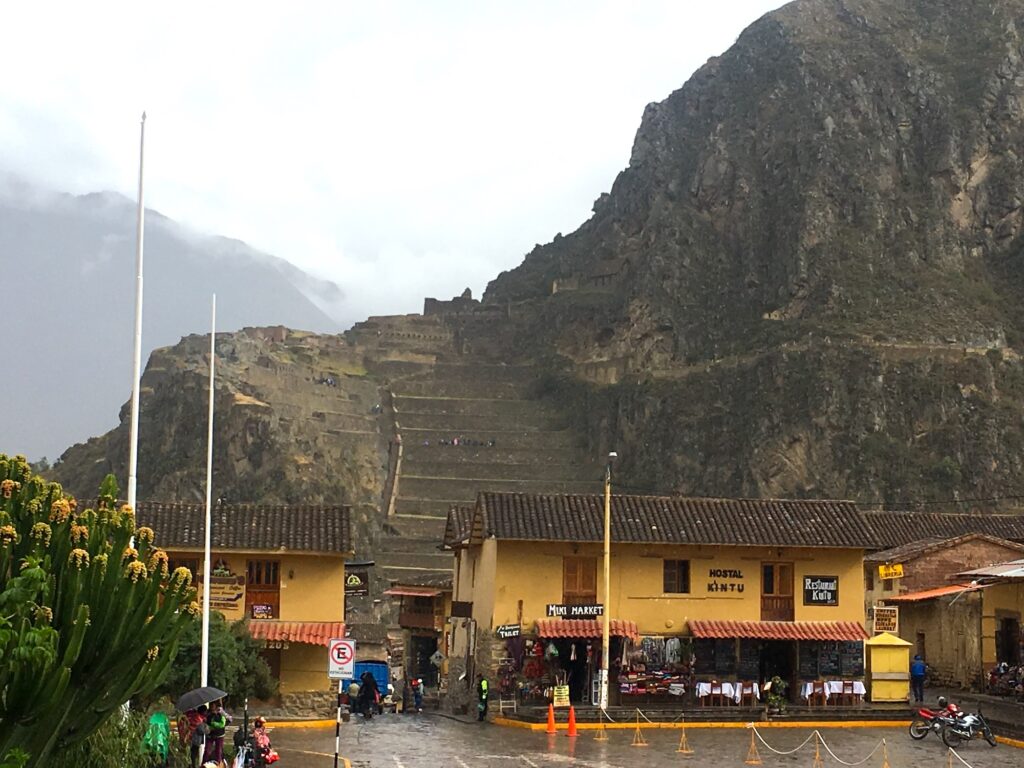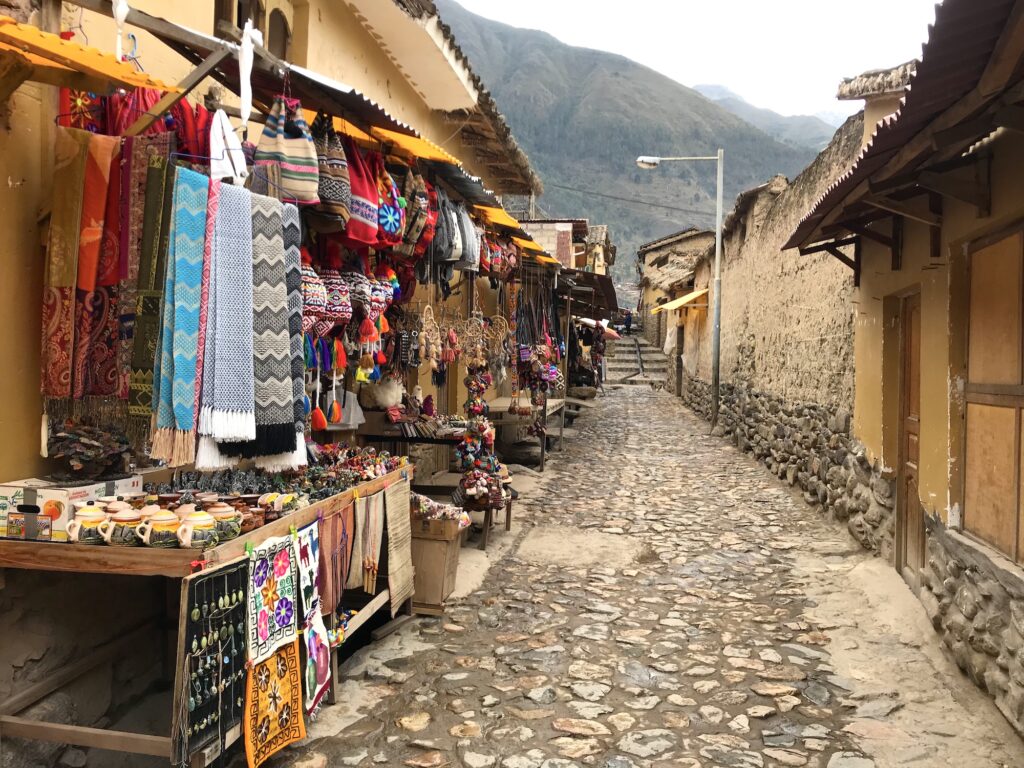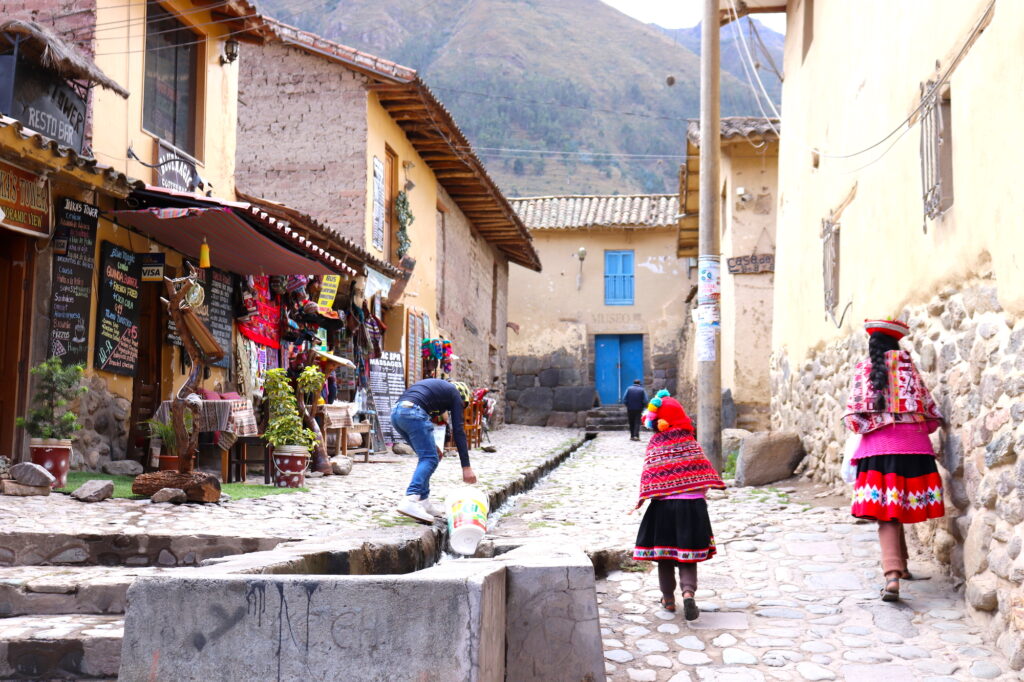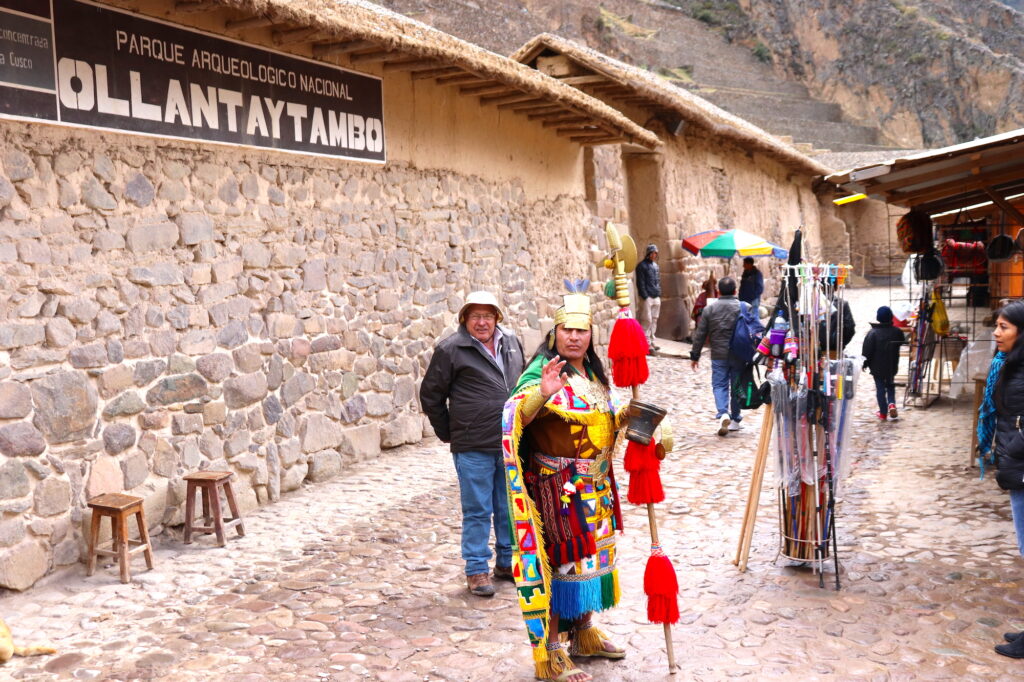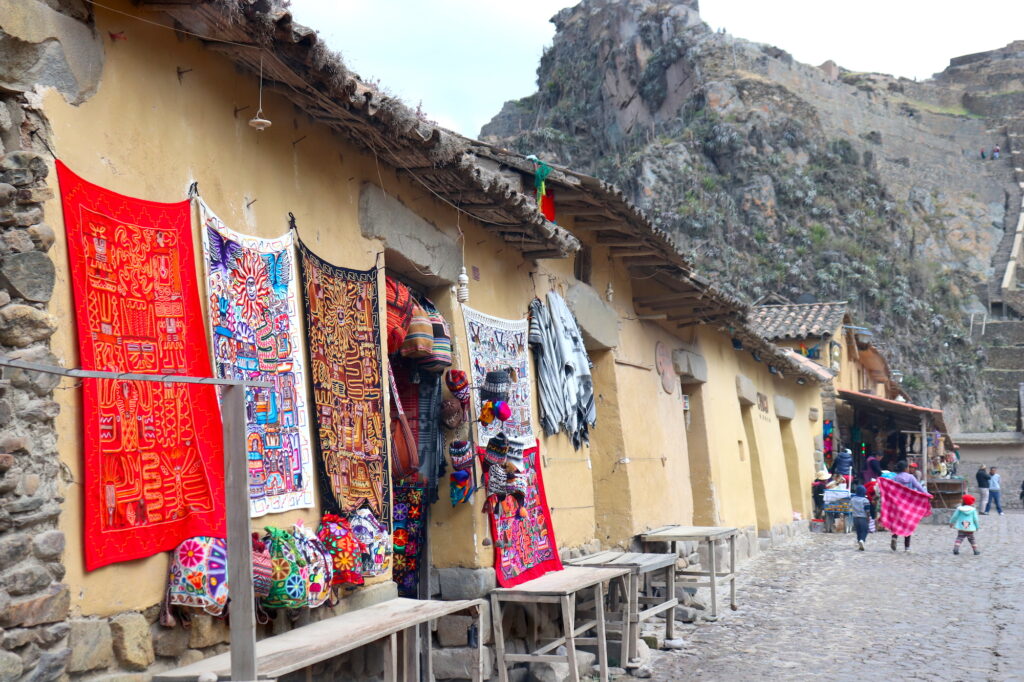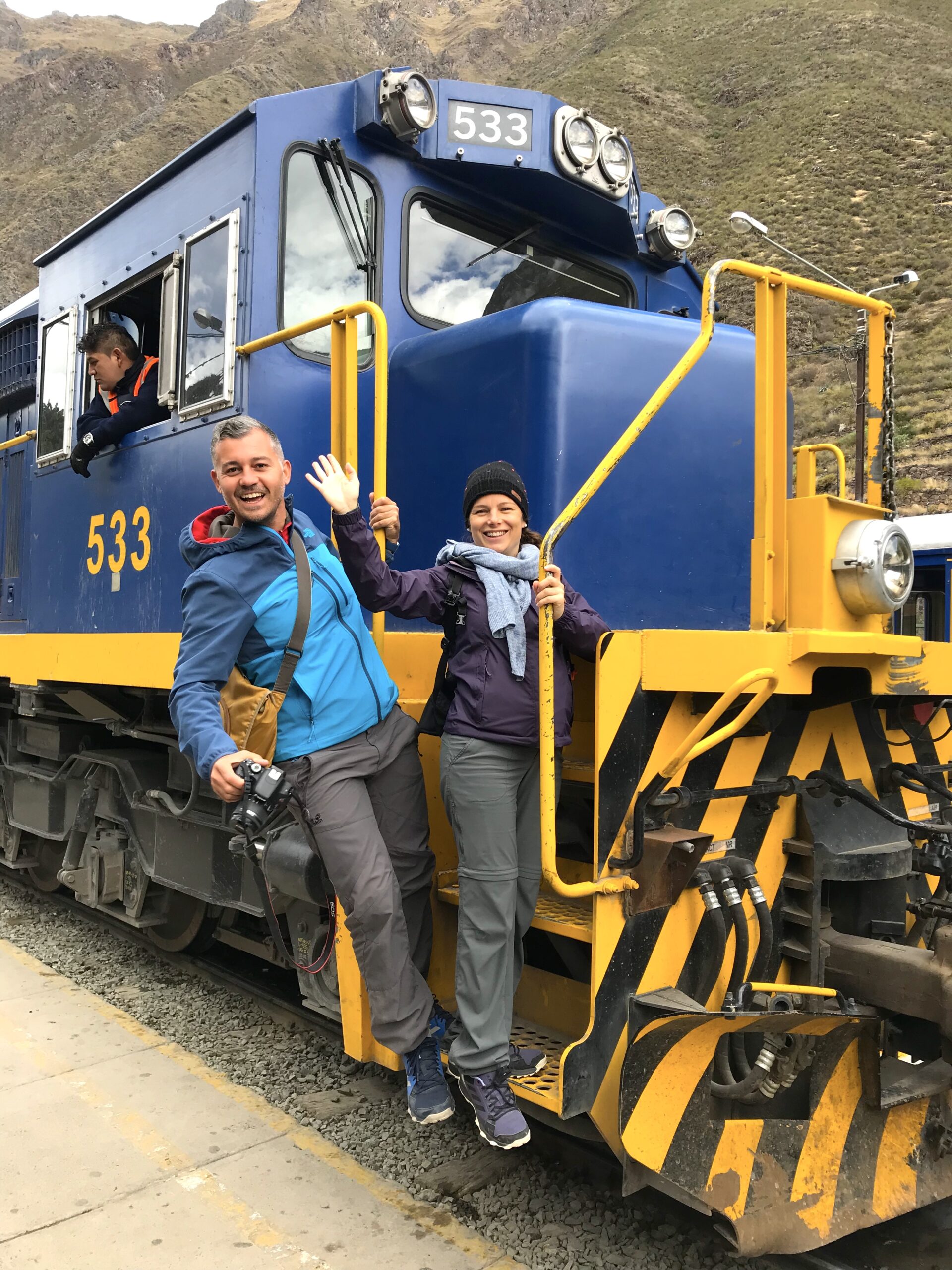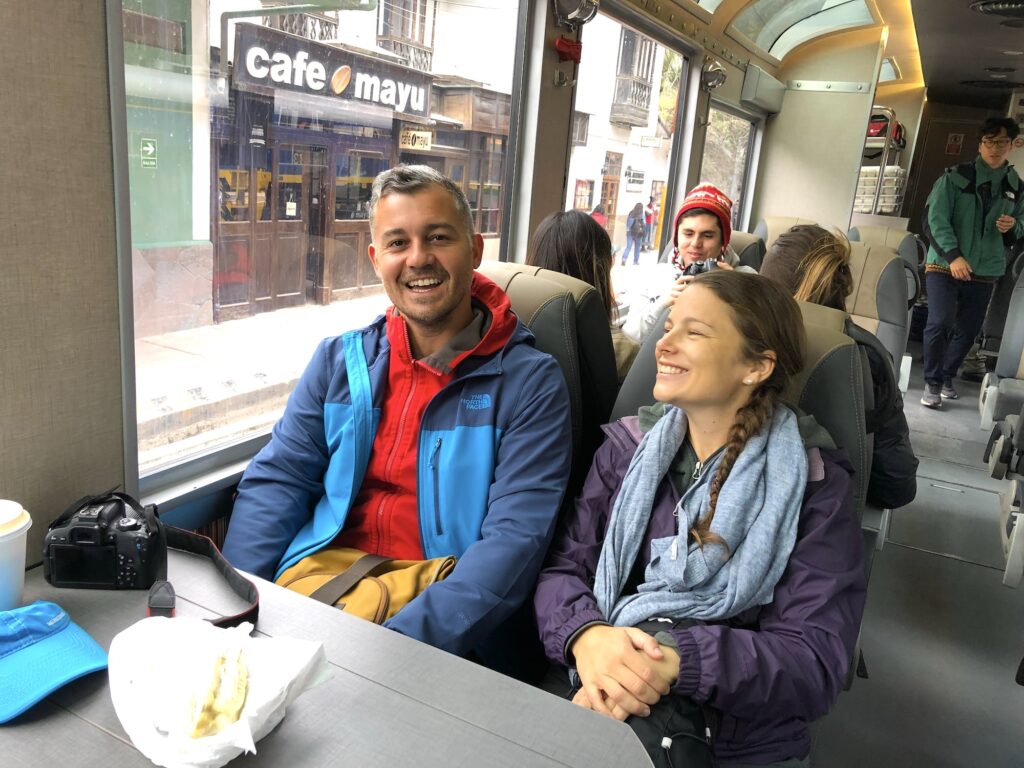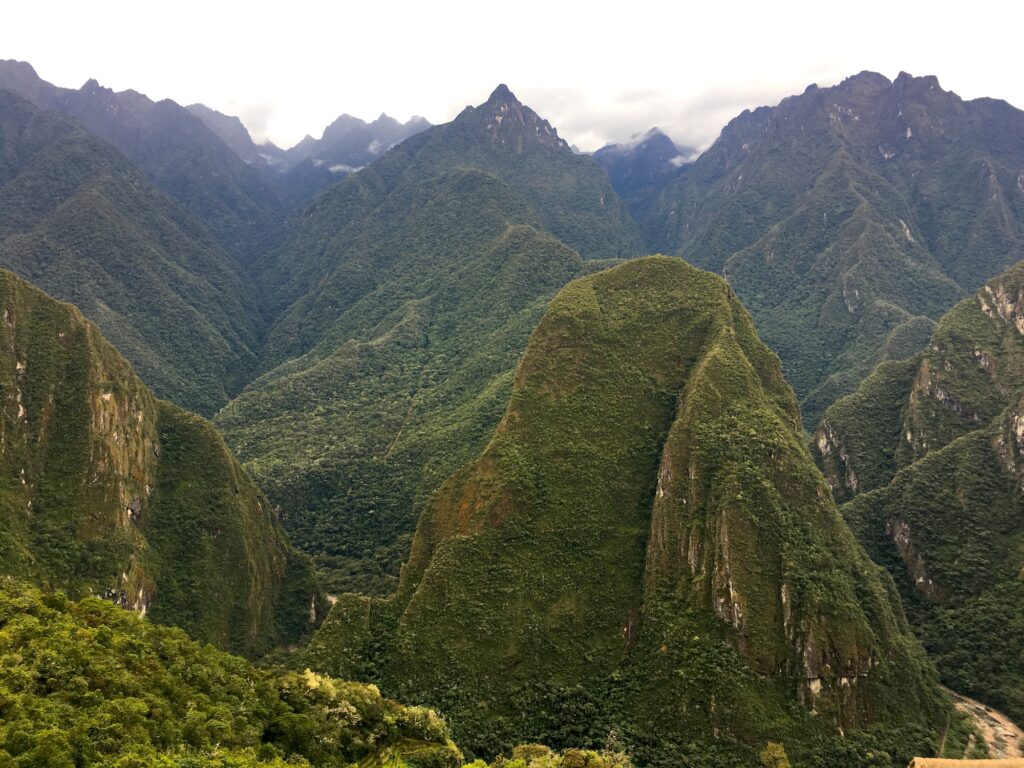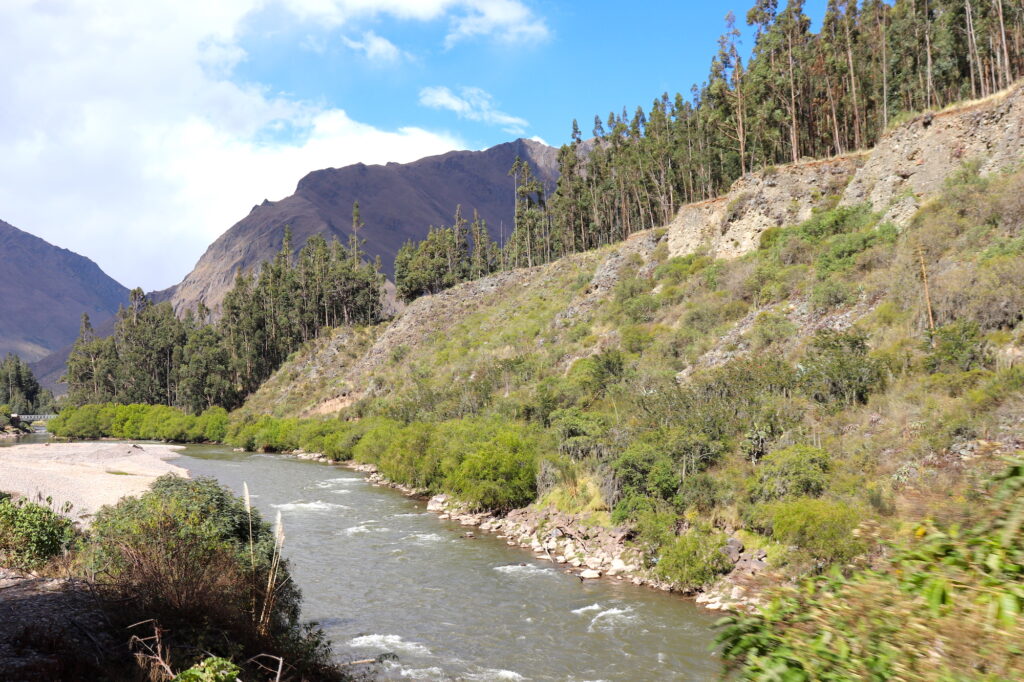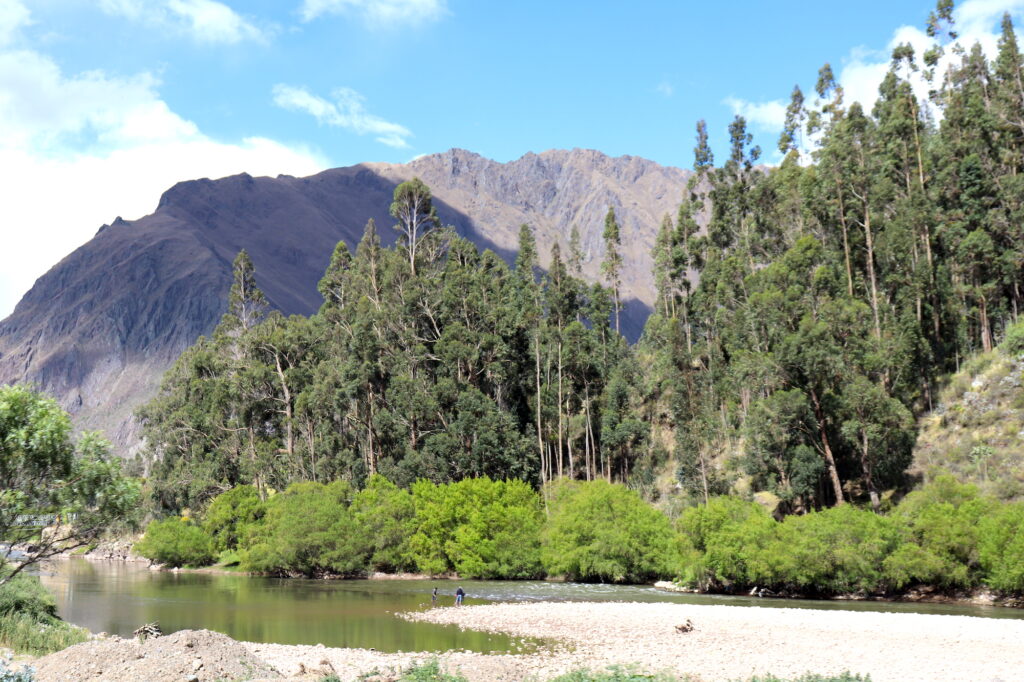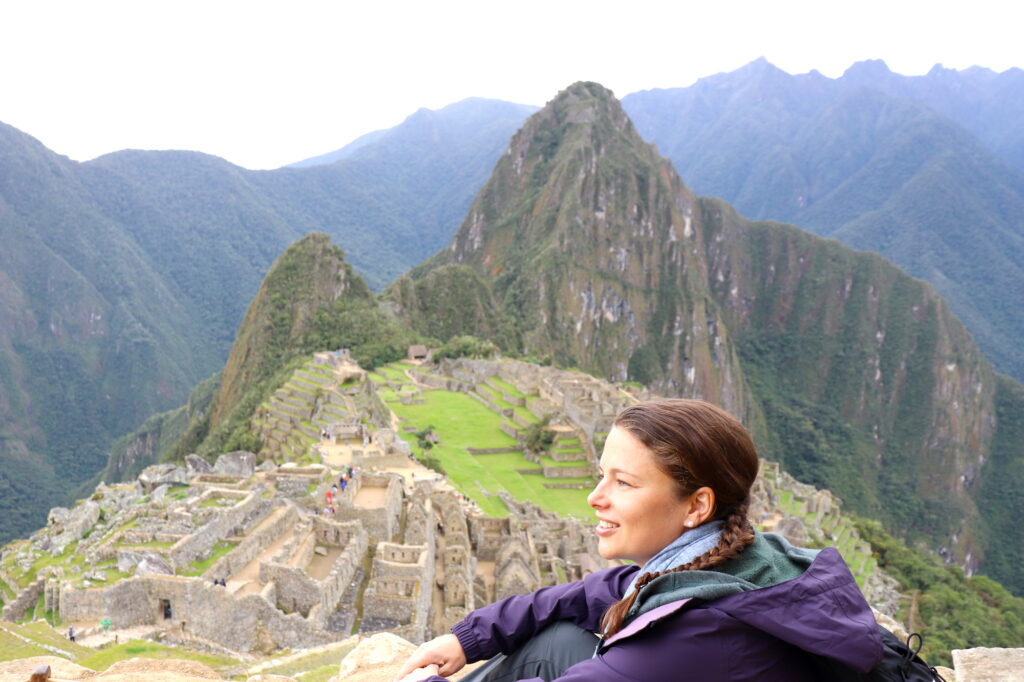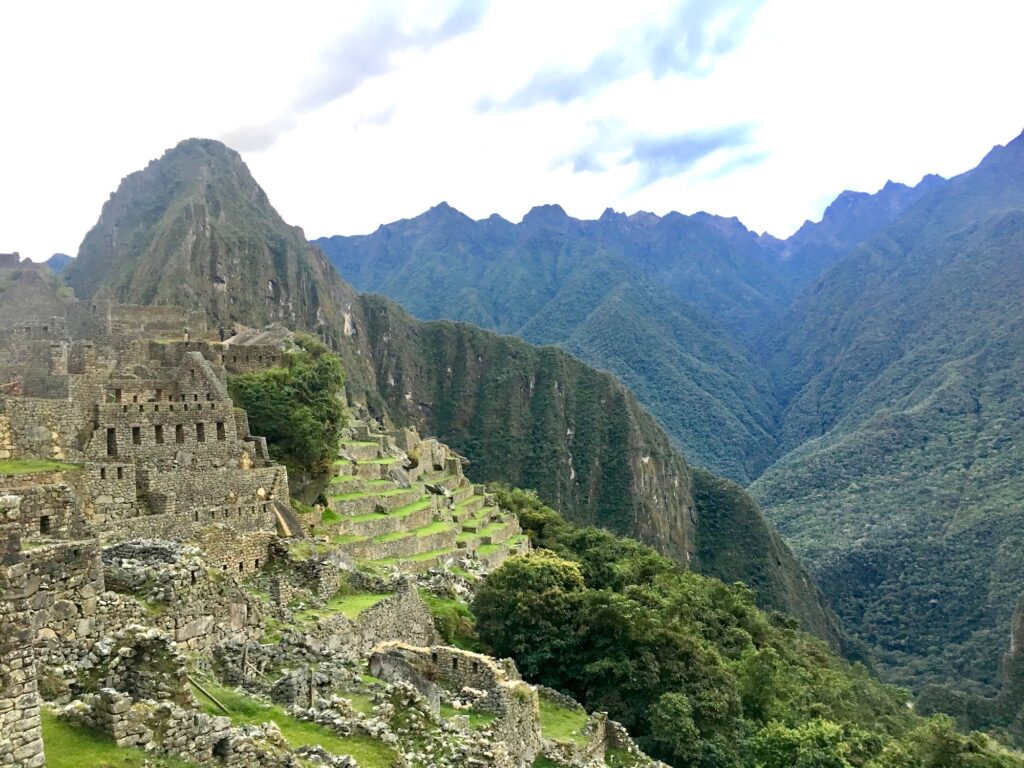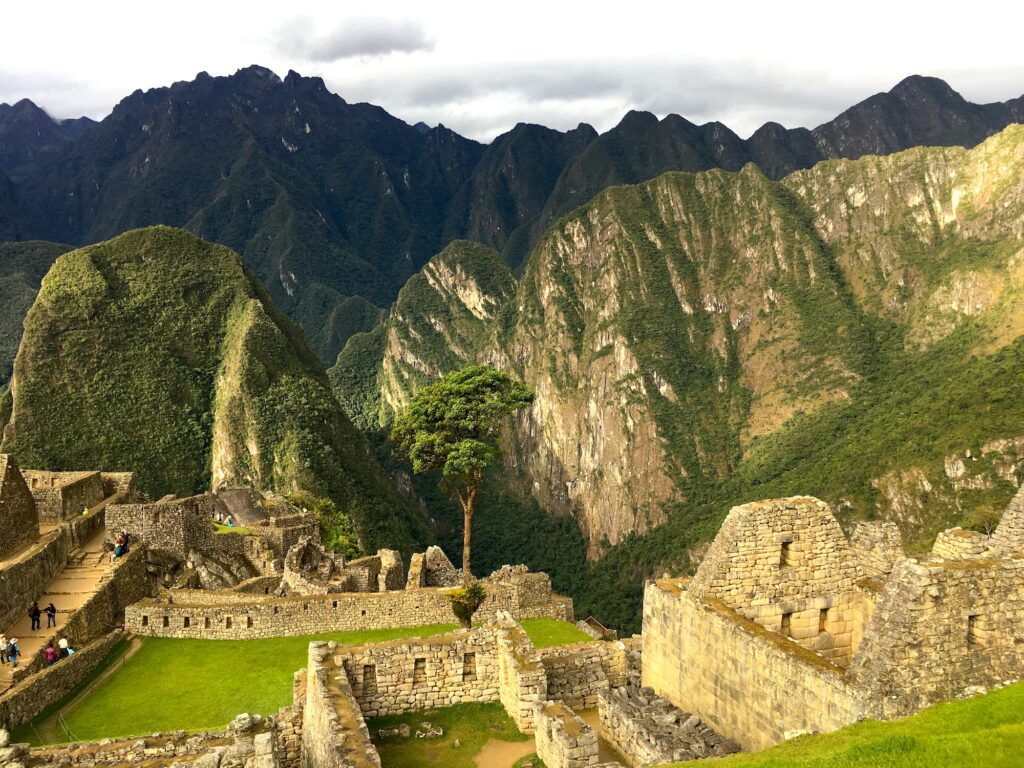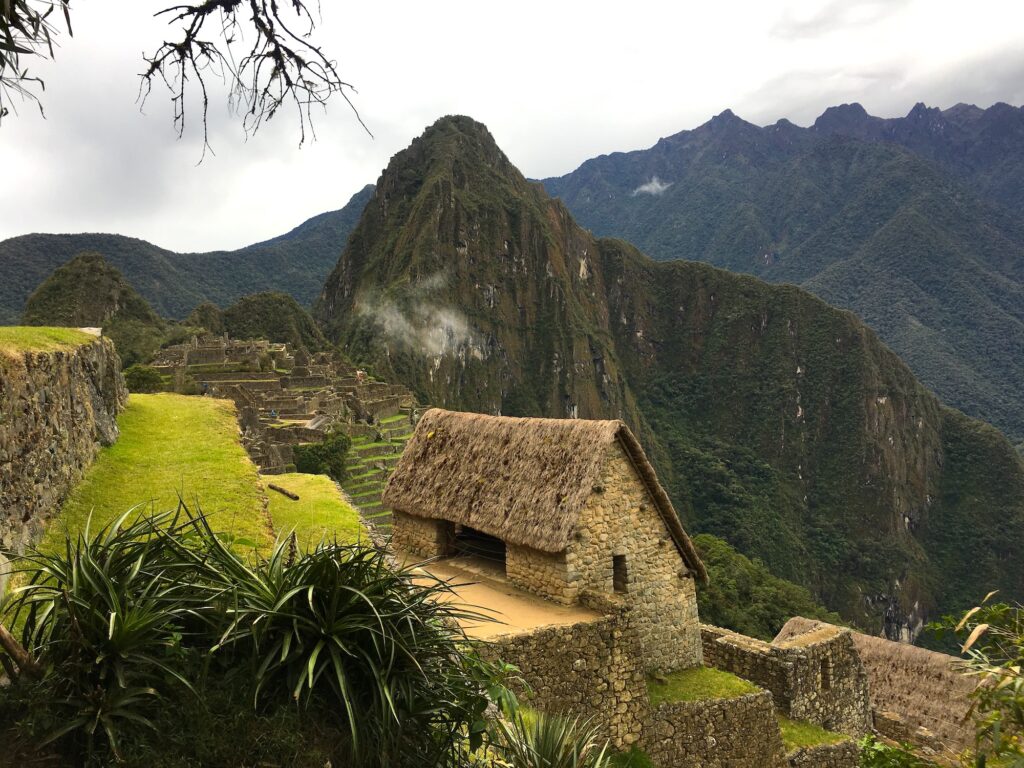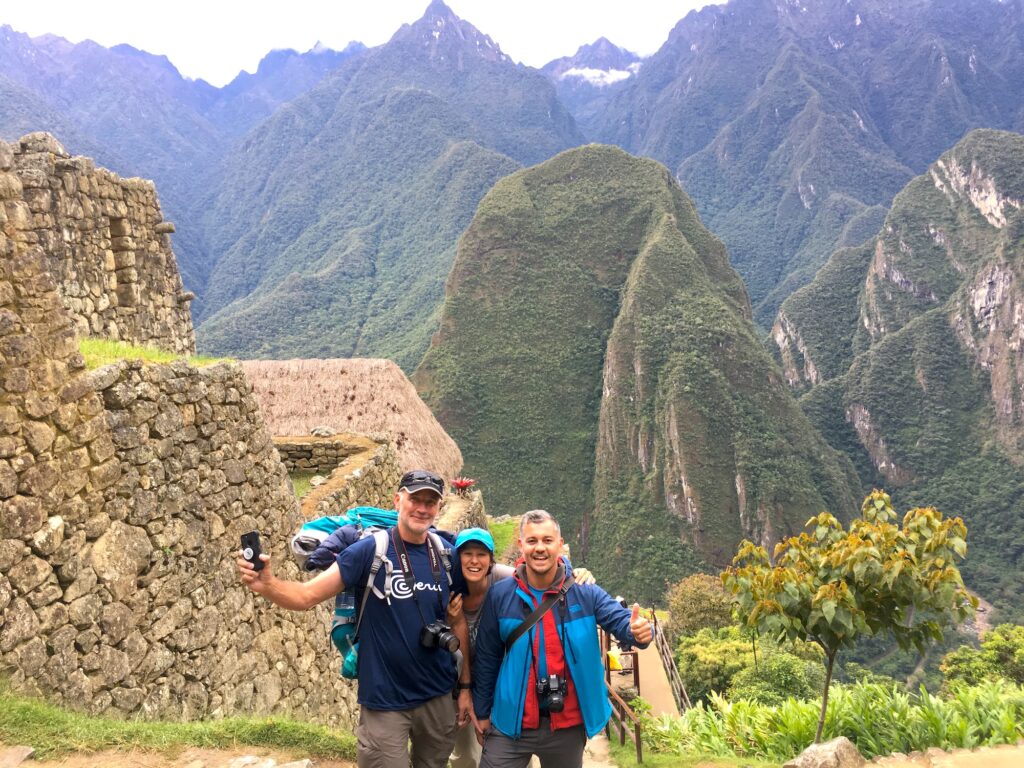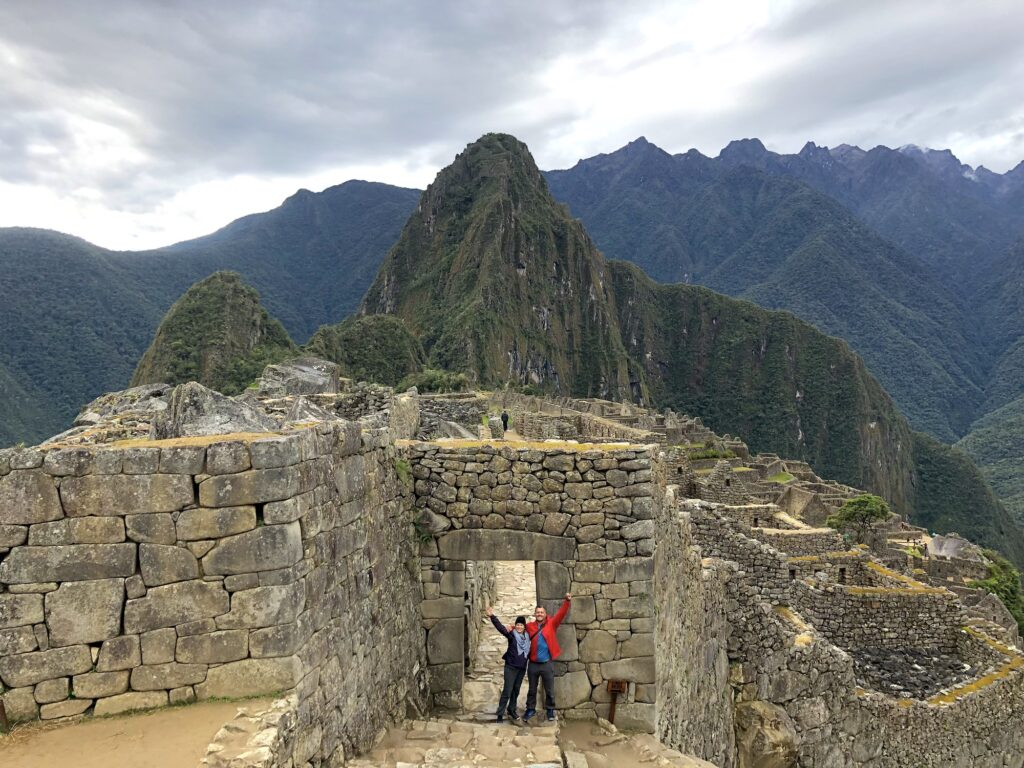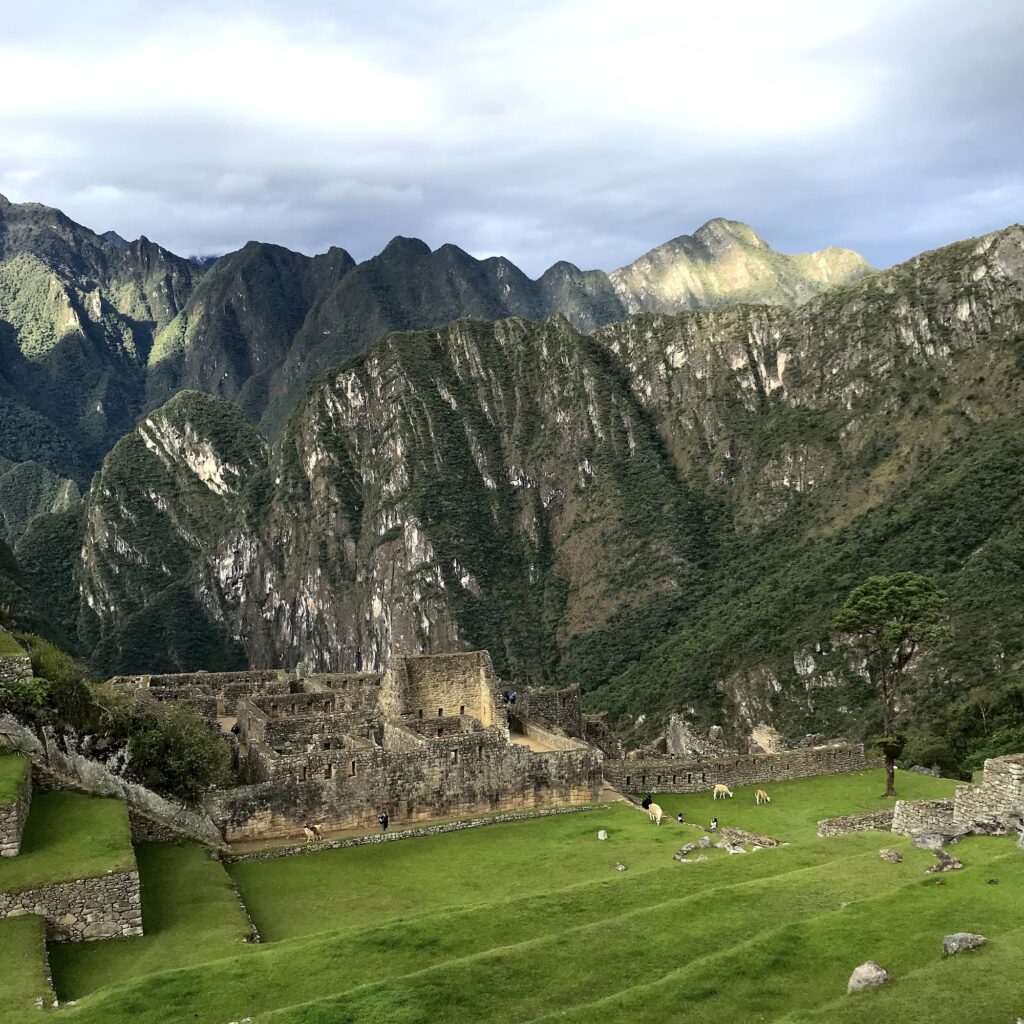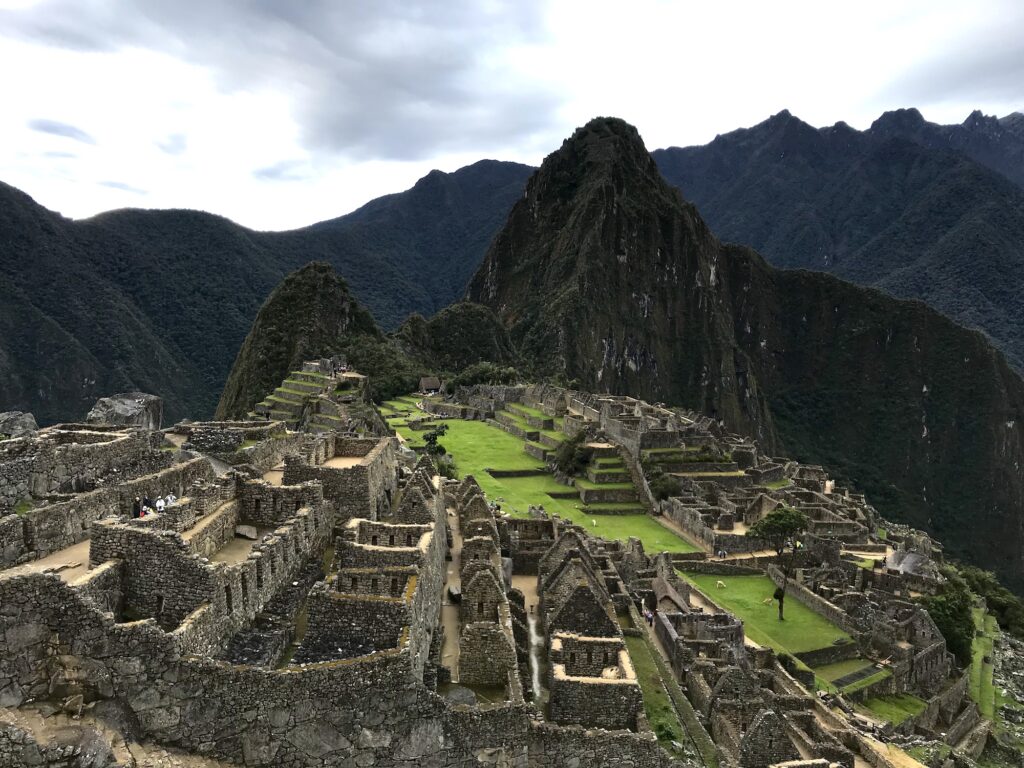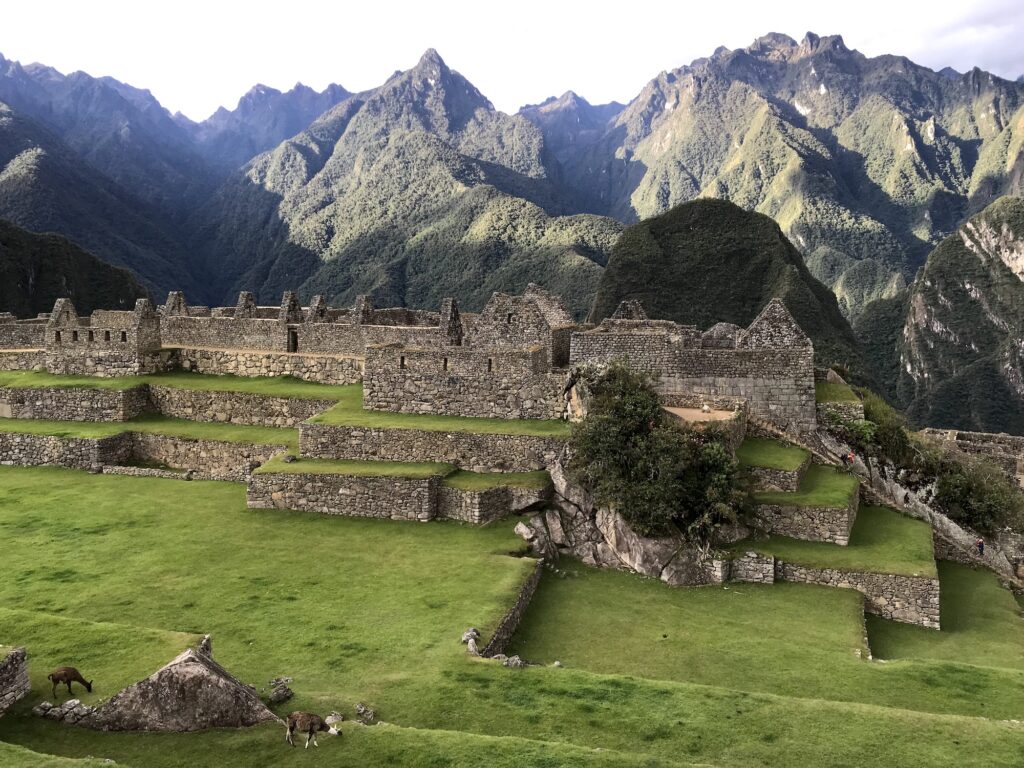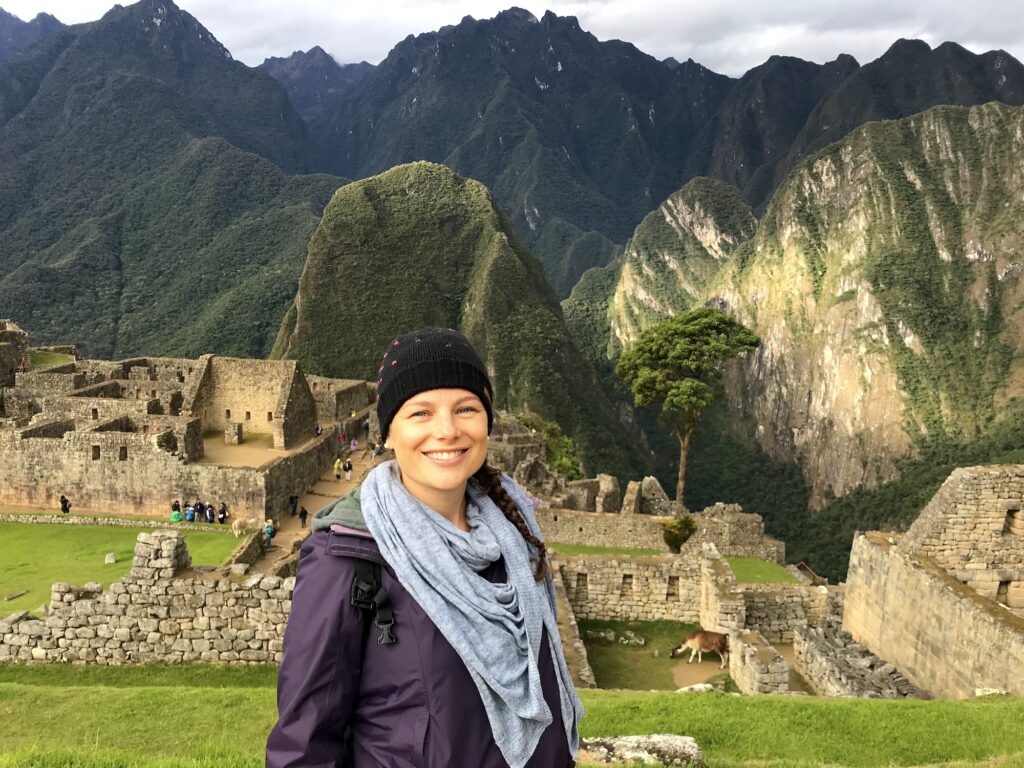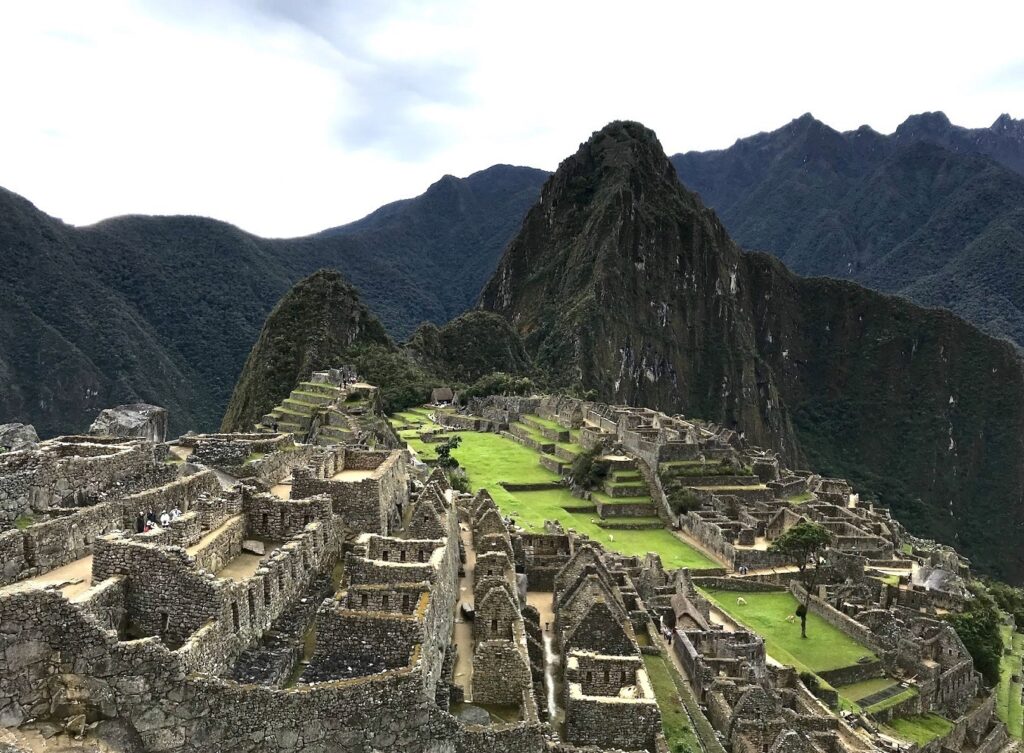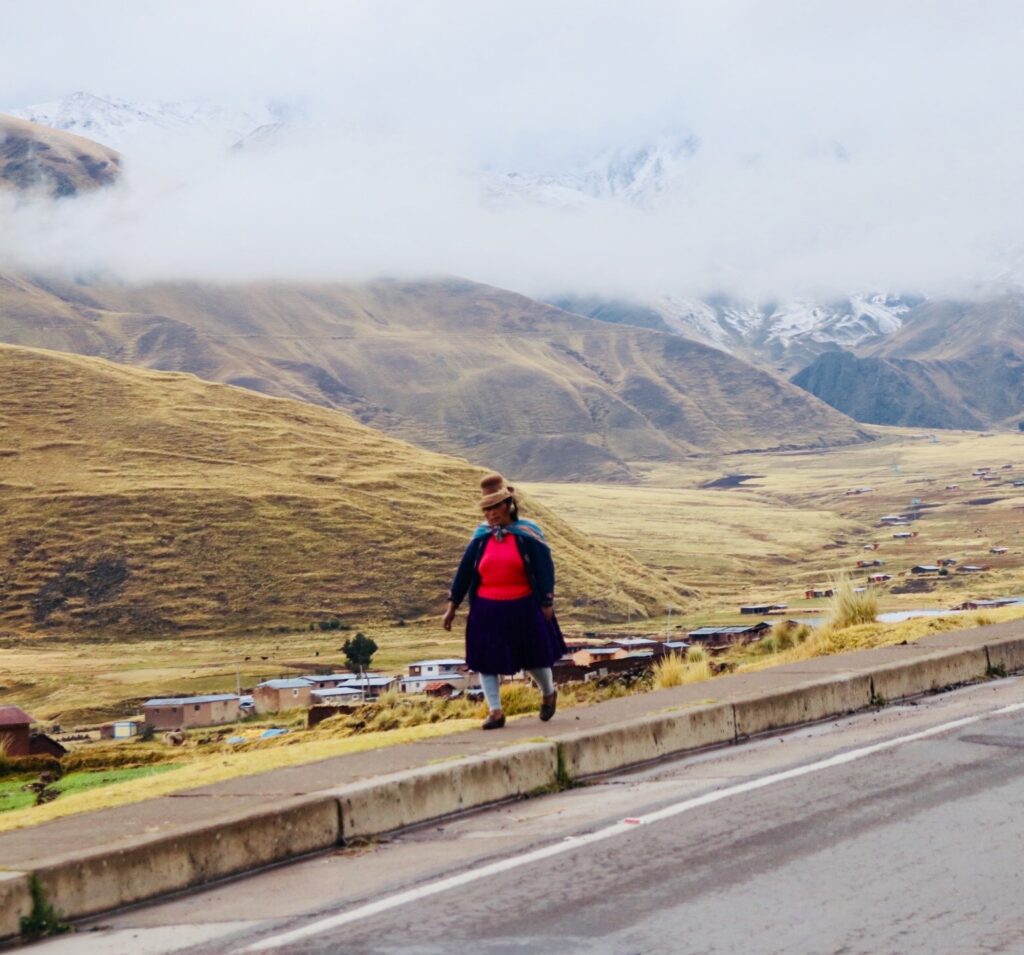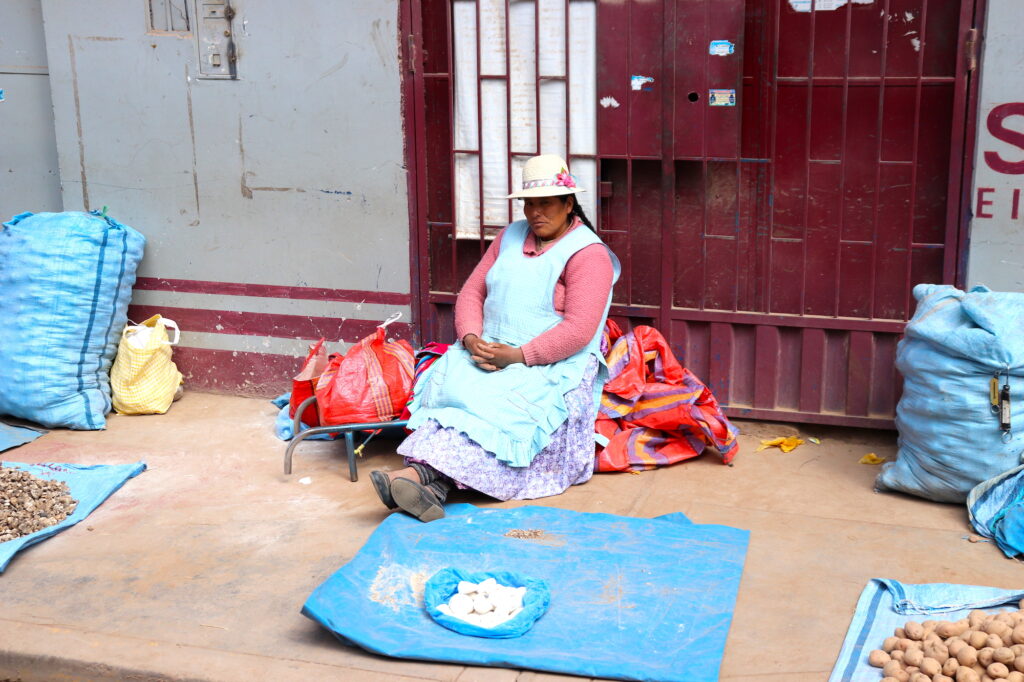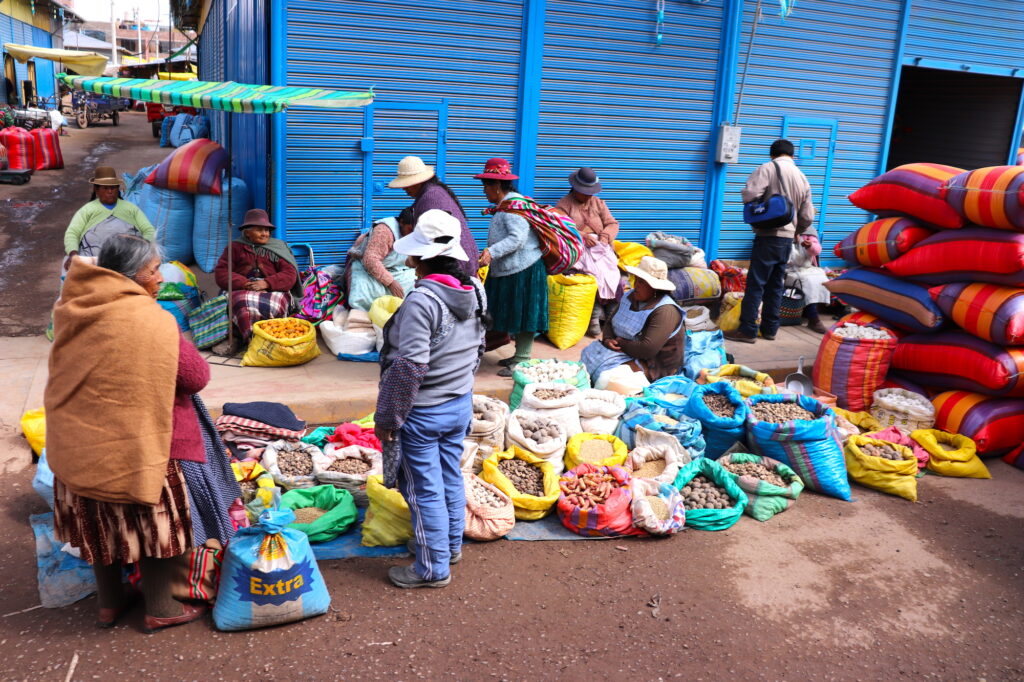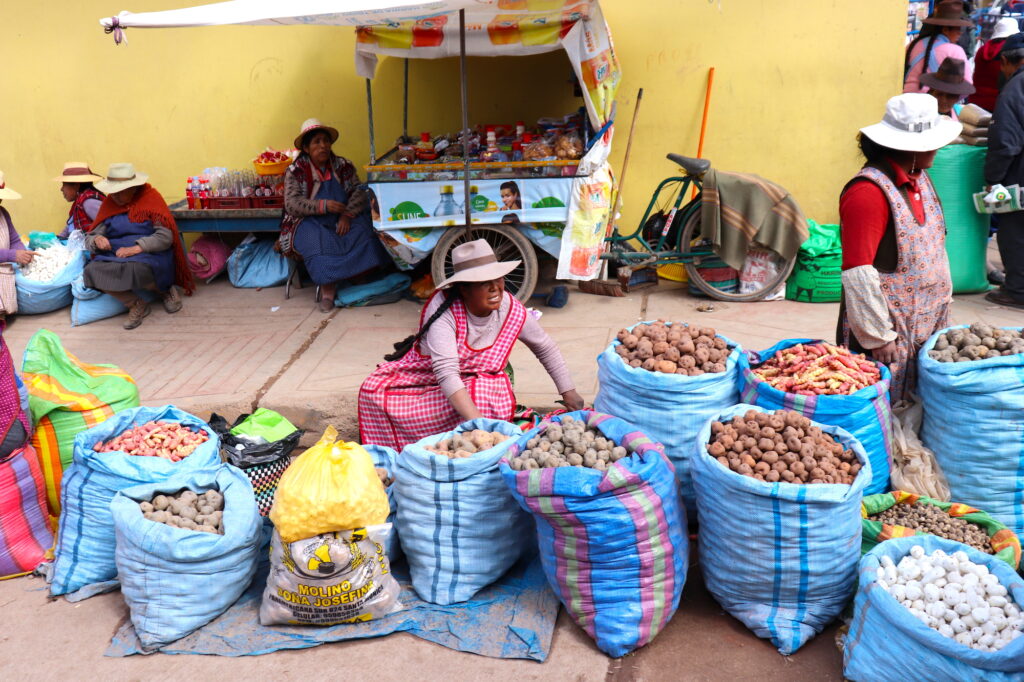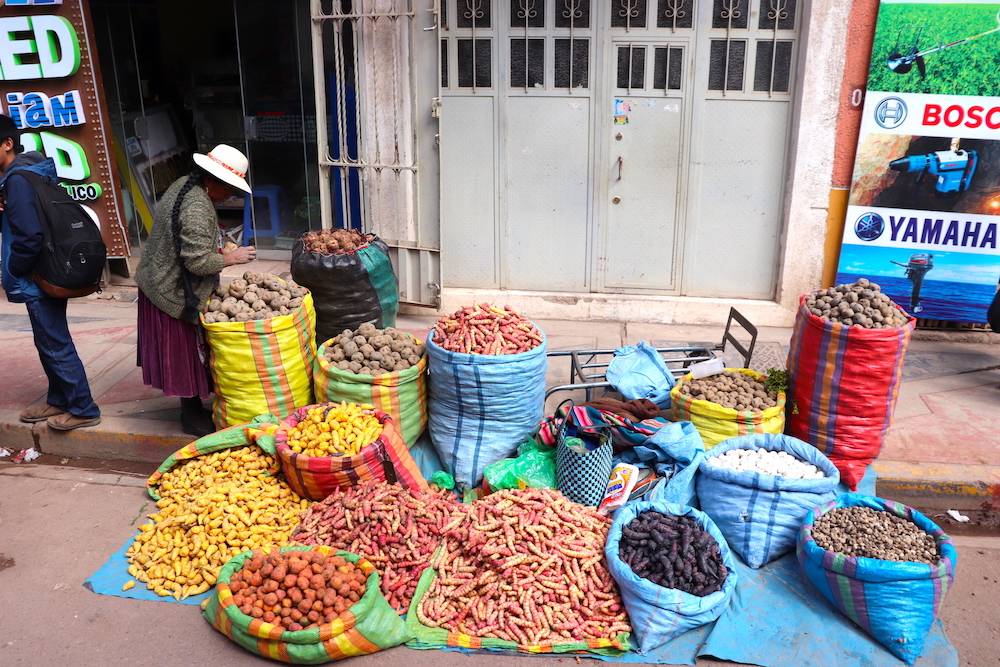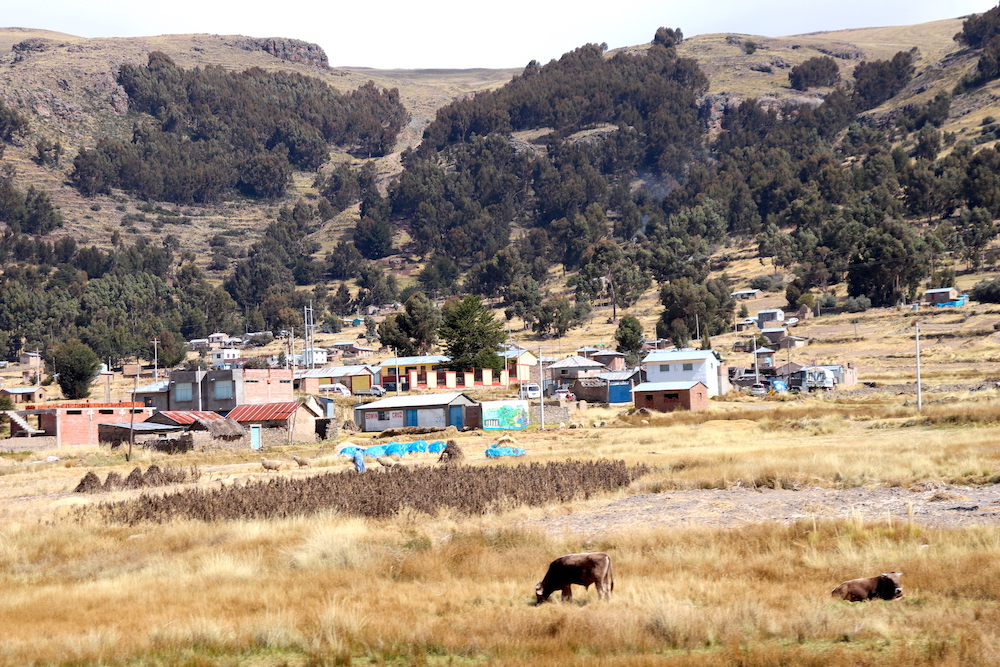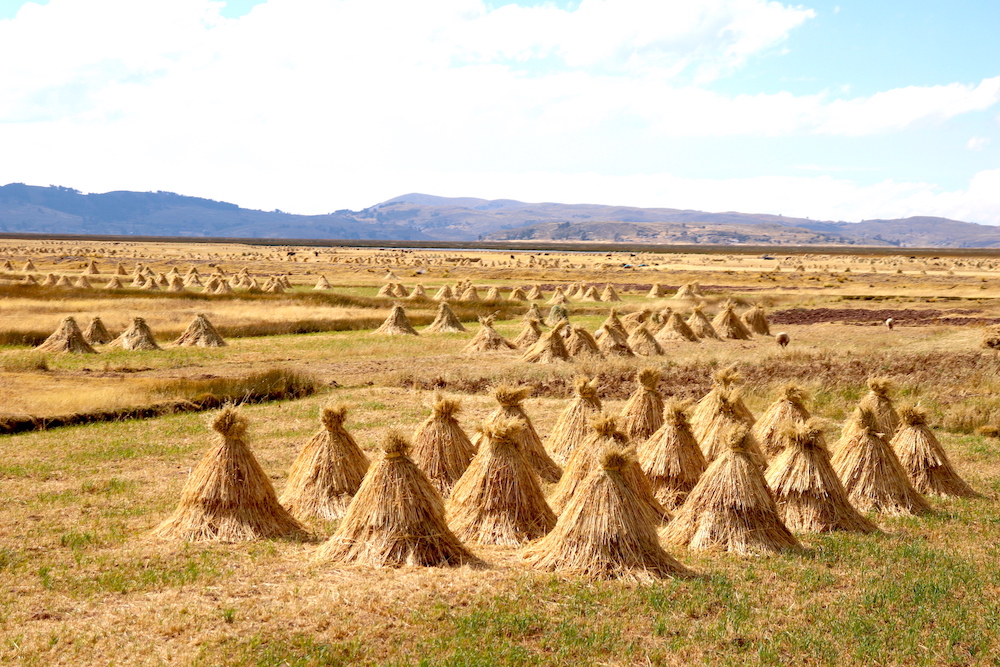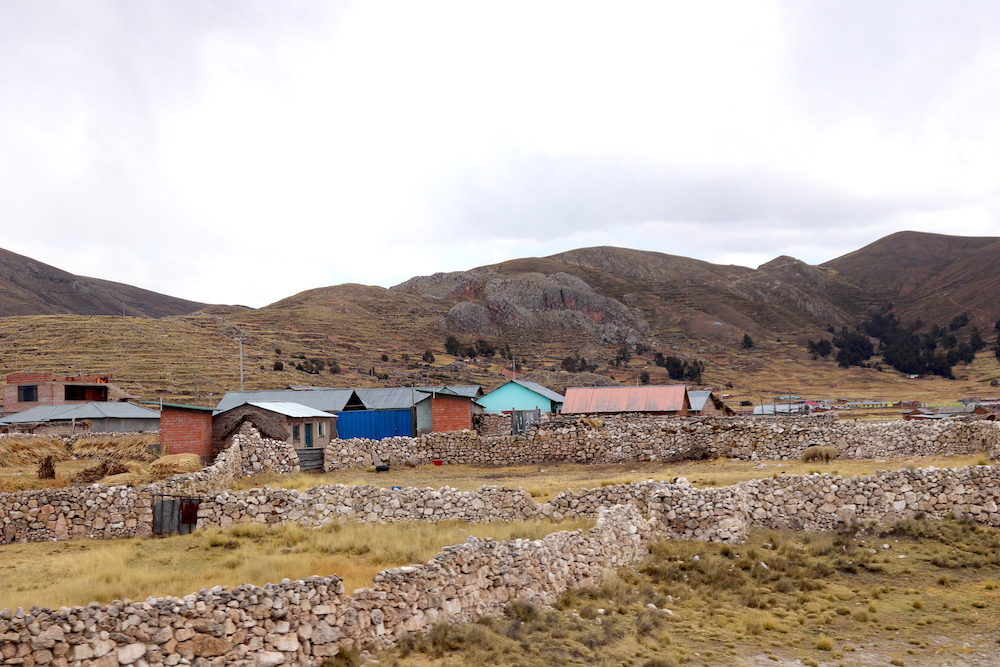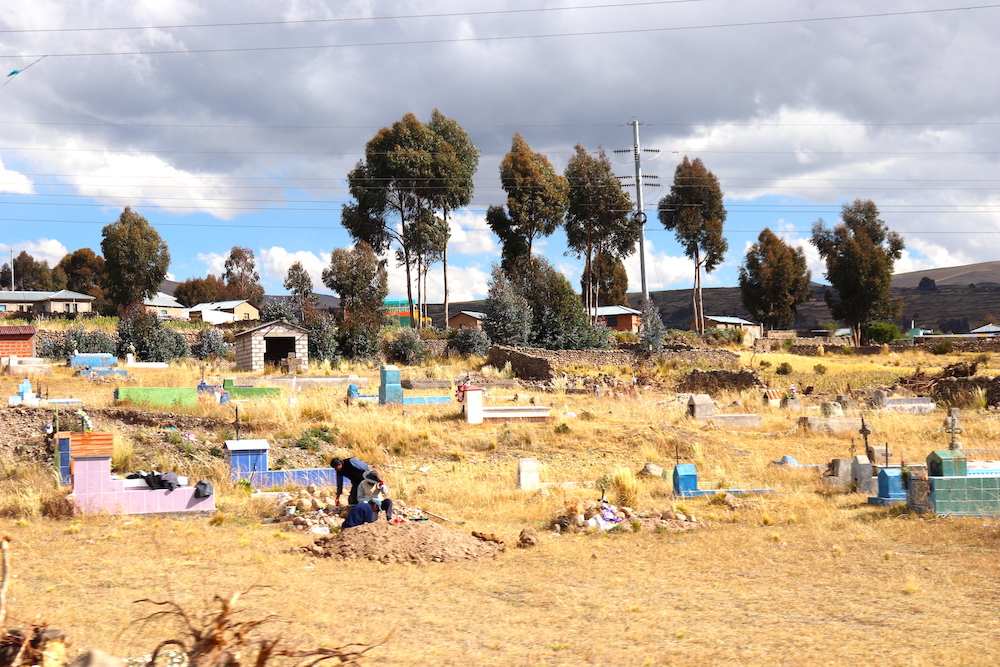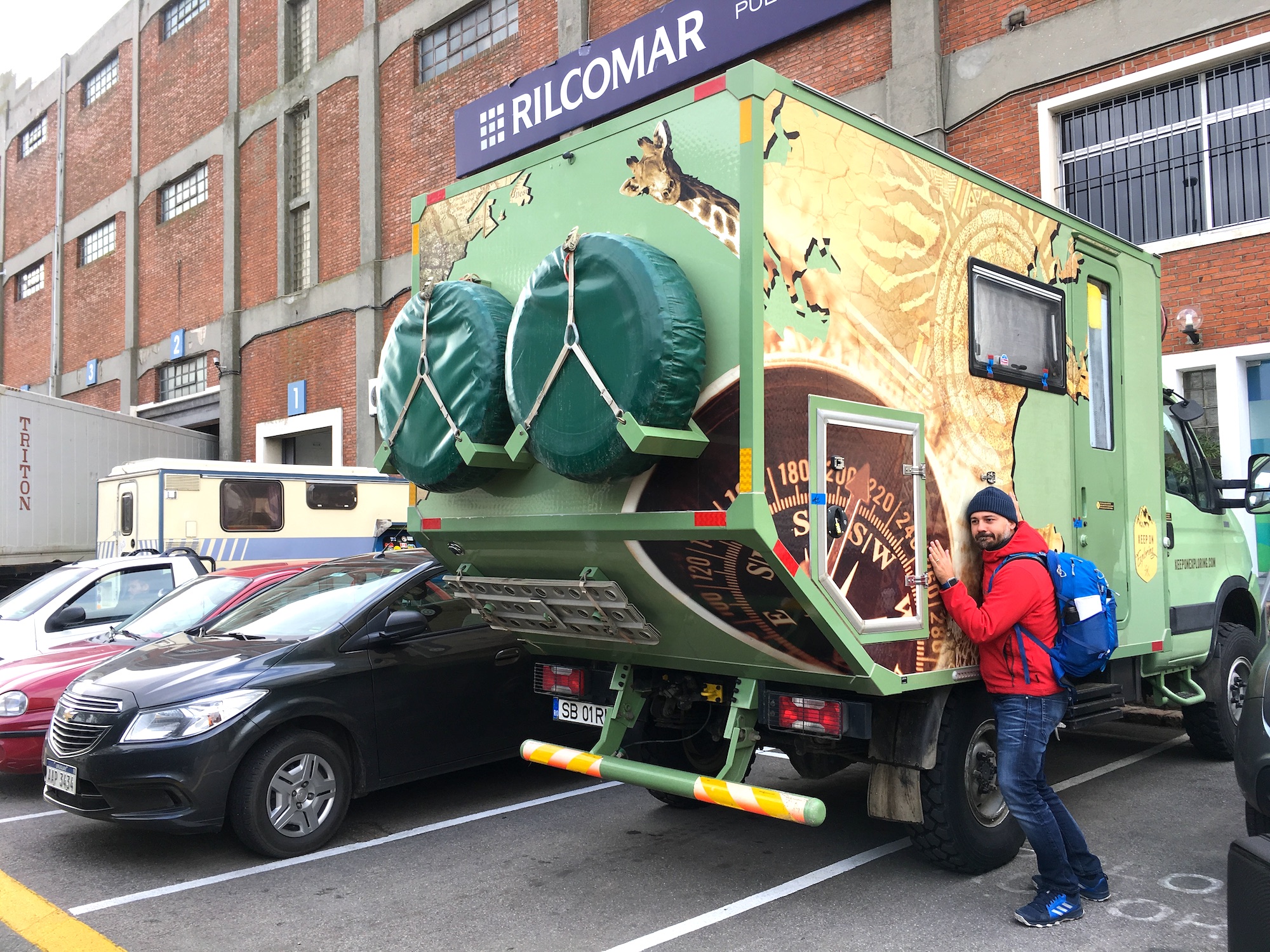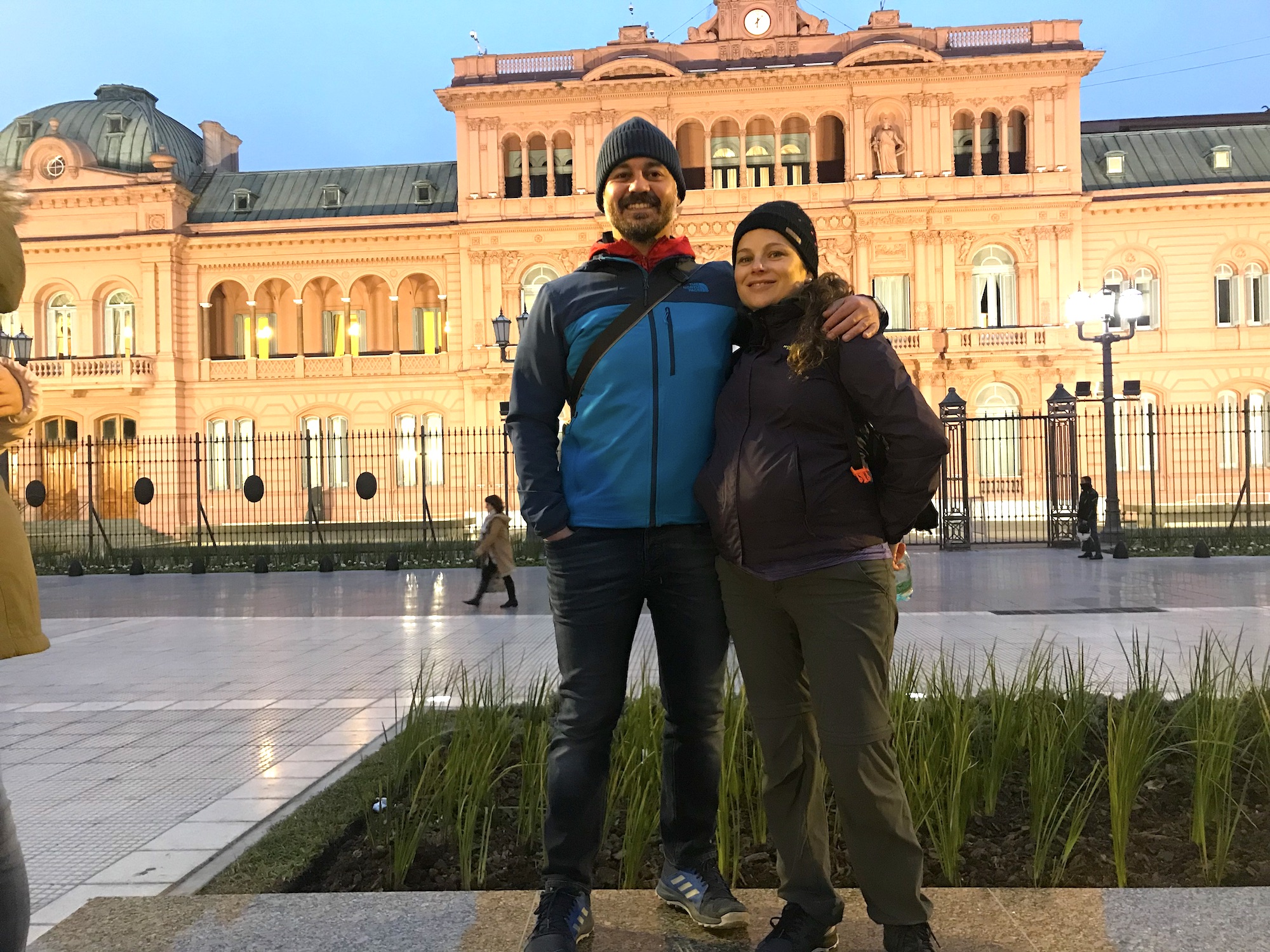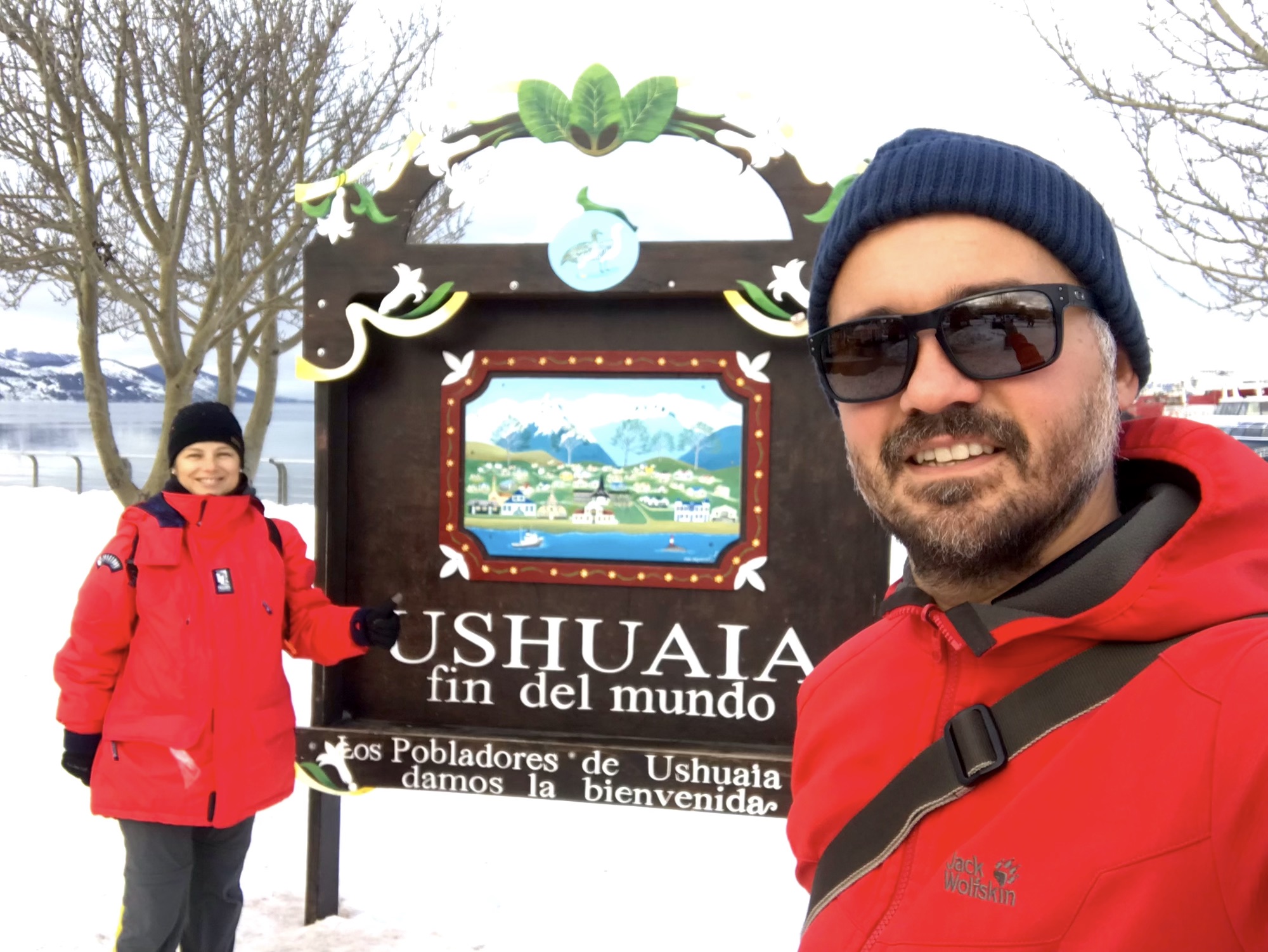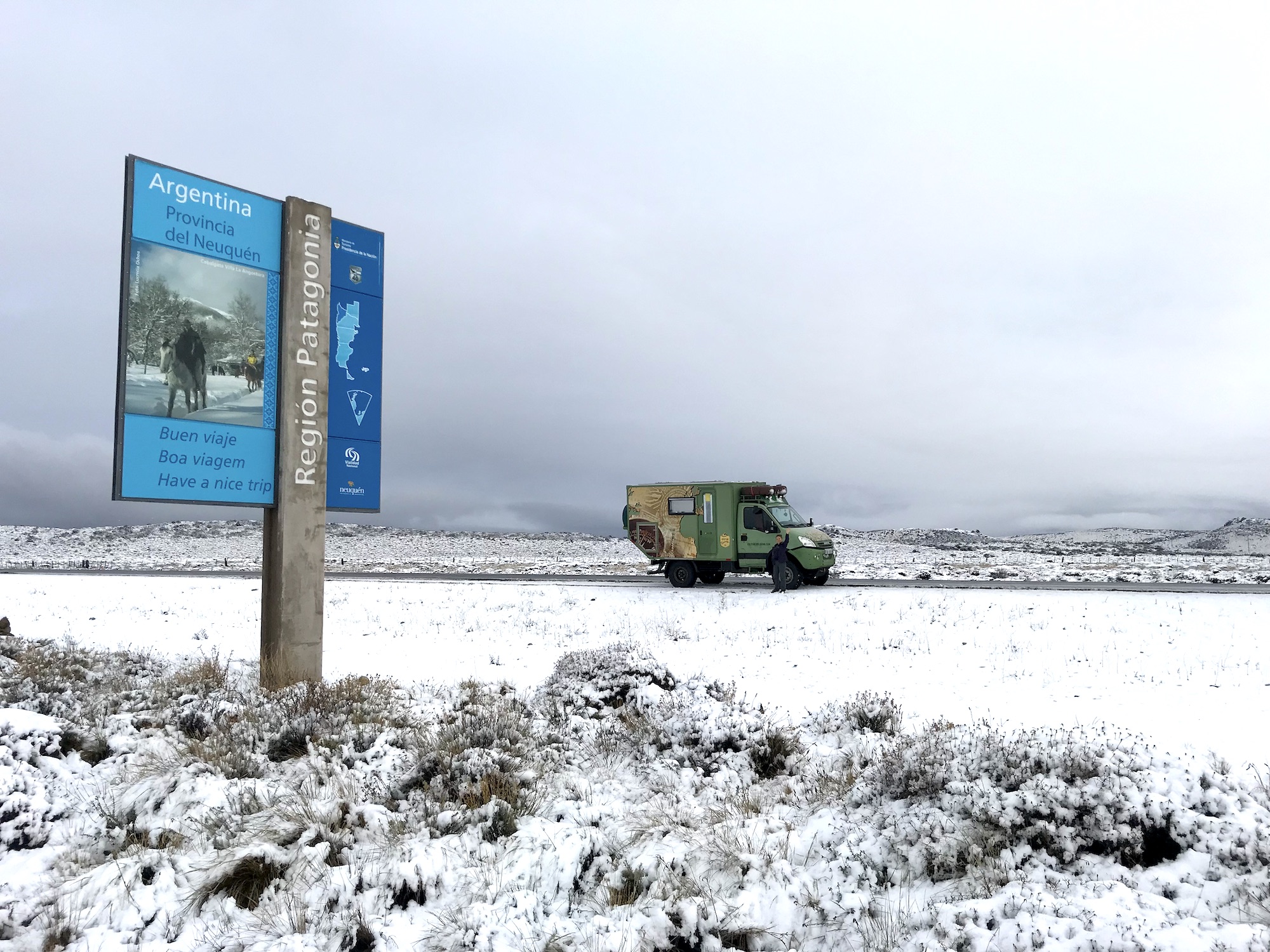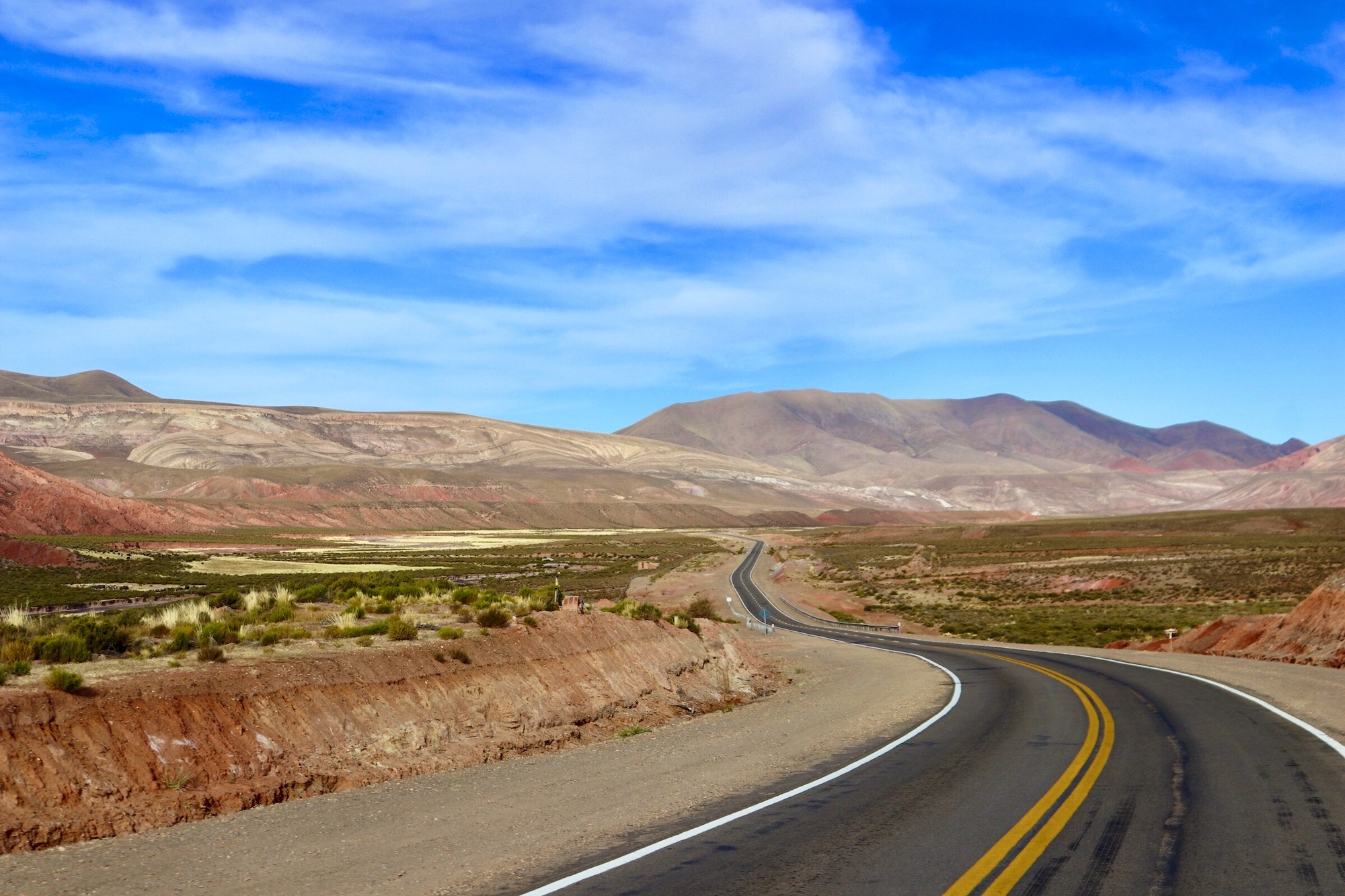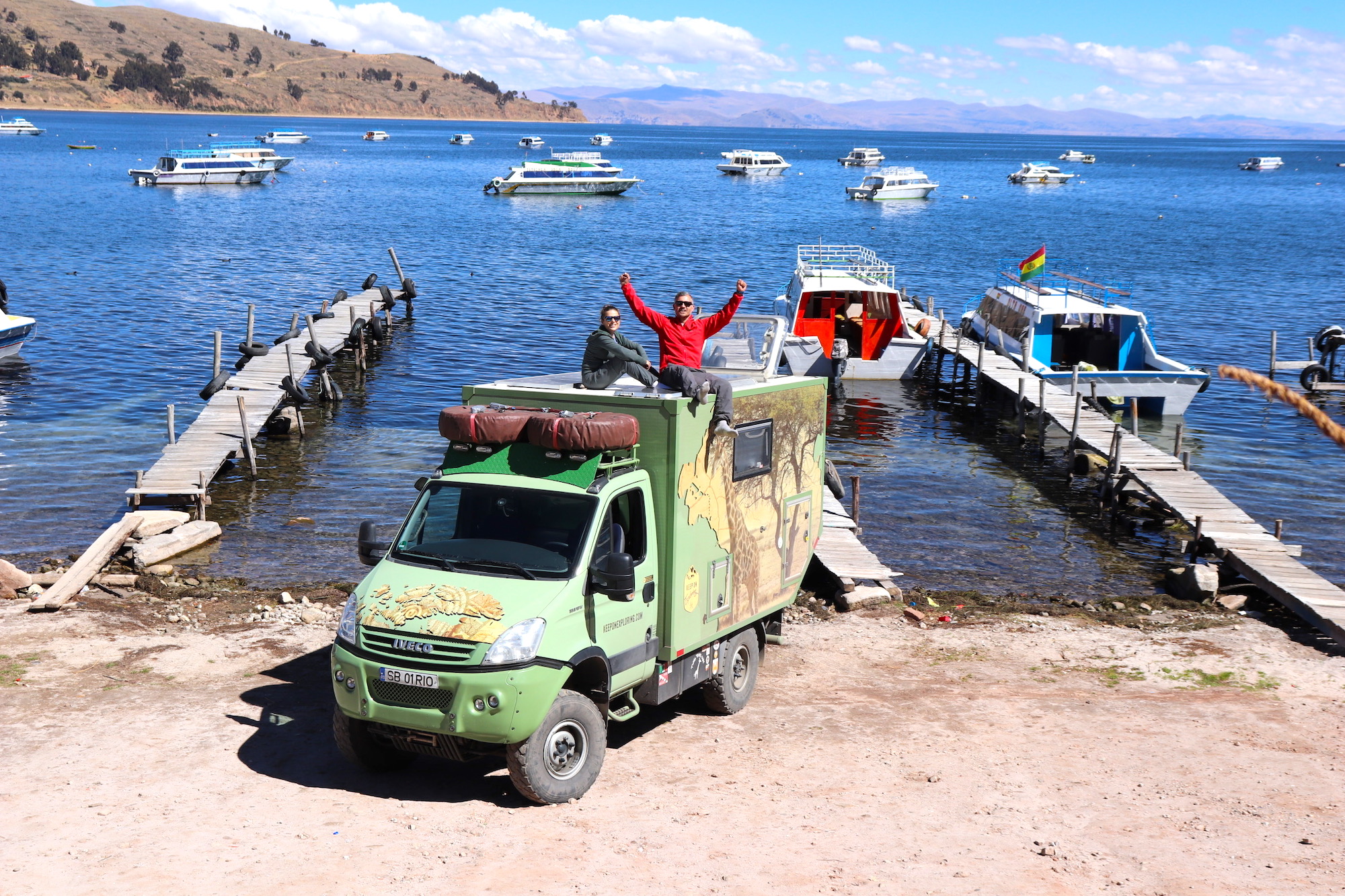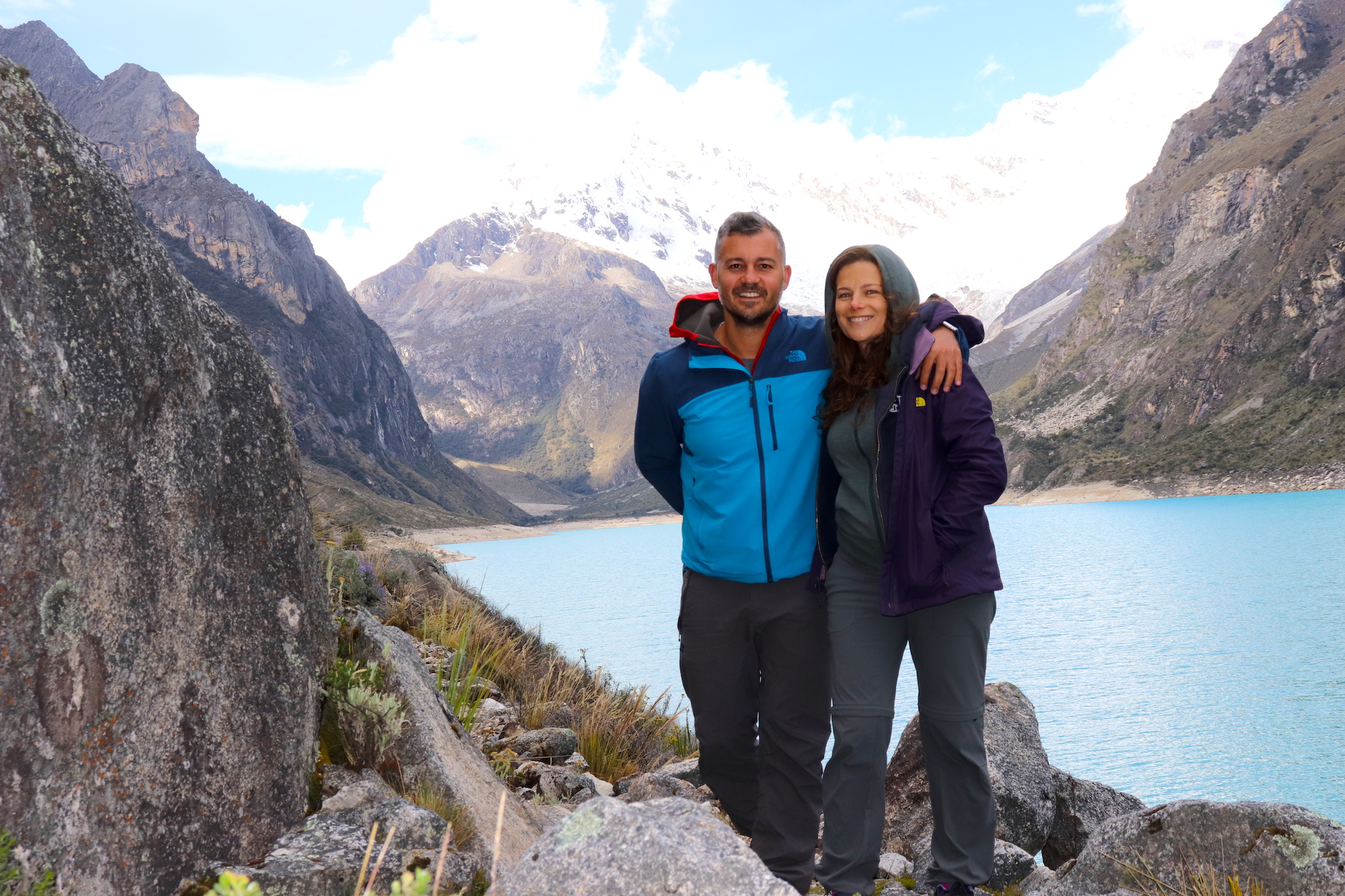We were so excited for our expedition to the tremendous archeological site of Machu Picchu. The heart of the Inca civilization in Peru was on our priority list since we started our journey. This much awaited moment coincided with my 20 weeks pre-natal control which had to be done in the city of Cusco. And that proved to be another adventure.
In order to get to the center of the Incas we drove for ten days from Peru’s northern border. We were lucky to share part of our road journey with Anna Maria and Gerald, an Austrian couple who were overlanding in their Citroën Jumper van. Although it was a driving marathon, the expedition was overflowing with staggering sights from the mystic Nazca lines of the coastal desert to the heights of the Peruvian Andes with their glacier lakes and herds of lamas and alpacas. We were fascinated to discover Cusco, the capital of the Inca empire with its rich pre-Colombian heritage. Everything culminated with the extraordinary highland sights of the royal Inca citadel.
Our expedition to Machu Picchu was a lifetime experience!

From Caraz to Nazca
We left Laguna Parón and Caraz behind and departed together with Anna Maria and Gerald on the 3N road towards Lima.
We first met Anna Maria and Gerald in Cuenca, Ecuador, in a camping spot, and then again coincidently at 4,185m altitude at Laguna Parón in Peru. They are a couple from Austria in their 50s who decided just like us to take a sabbatical and overland the Pan American highway. They both struck us as incredible pleasant people, always positive and ready for a laughter, curious to discover the world and adventurous. Anna Maria is a psychologist, while Gerald is a maths and sports professor in Vienna.
We never really had overlanding partners on our route, but with Anna Maria and Gerald we connected from day one. It was a pleasure to be around them. We ended up sharing a big part of our journey in Peru and later on in Bolivia. It was a natural course. We were so lucky to have each other considering all the safety warning of Peru’s coastline.
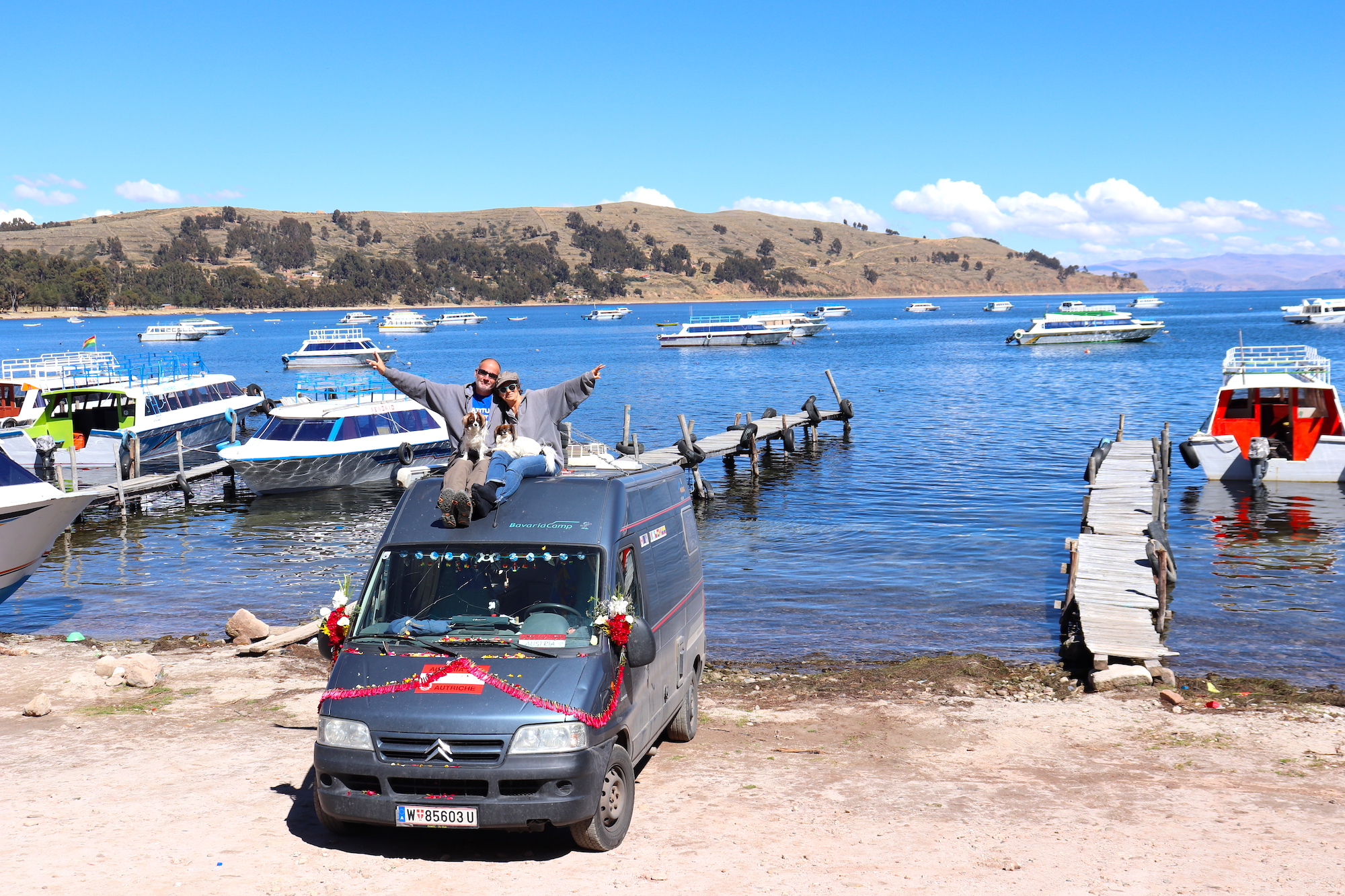
Driving on the Andean plato towards Huaraz was enchanting, but in the same time the air was a bit heavier and soon it was hard to breath at 4000m altitude. Once we changed the direction on Road16 and descended towards the coast I started to feel better. Panoramas of snow powdered peaks and green valleys transformed into dry rocky summits, sandy valleys and then desert. It was absorbing. Driving through such an arresting environment made the time fly. We soon got on the coastline on PanAmerican highway 1N and headed towards our planned campsite for the night, Eco Yoga Village.
Hare Krishna Eco Yoga Village
Being warned about the theft dangers on the coastline, we were advised to camp at a Hare Krishna community, located within an Eco Yoga Village just 70km before Lima.
I got curious about the Hare Krishna movement since I first heard them singing their vibrant mantra in the Osório market in Rio de Janeiro back in 2013. Having access to its society in Peru was definitely something I wanted to sneak a peek.
After 8 hours driving we arrived at the Eco Yoga Village. When we entered the property we immediately noticed a quiet and peaceful atmosphere. It was full of green trees, a sub tropical vegetation, some small scale agriculture and a lot of houses with rounded structures and oval roofs. The birds chirping and the sound of the ocean added to the peaceful ambience. It was like an oasis in the middle of the deserted beach.
The Eco Yoga Village seemed very well organized. Besides plenty of little eco houses, there was an area for yoga practice, an area for workshops, a music playground, temples for meditation and prayers, a souvenir shop with spiritual related products and a small restaurant with vegetarian food.
Later on I understood that the ISKCON (The International Society for Krishna Consciousness) or the Hare Krisha movement believes in the importance of spiritual ecology and these villages were created worldwide to promote spirituality and a sustainable care of the land, the need to live in harmony with self, the nature and the divine. Sounds all good to me 🙂
Anna Maria and I decided to join the 8pm prayers of the Hare Krishna community to learn more about their religion and practices. When we got to the temple we found other young adults waiting for the spiritual leader. We observed that the average age of the practitioners was around 25 years old or so. Everybody took their shoes off and started the prayers with the mantra I heard in Rio de Janeiro. They repeated it numerous times until I learnt it by heart:
“Hare Krishna, Hare Krishna, Krishna Krishna, Hare Hare/Hare Rama Hare Rama, Rama Rama, Hare Hare”
I had no idea what did it mean, but repeating the mantra was relaxing and mystical. No wonder why it is sung in markets around the world. It attracts attention and intends to lure followers. Soon the spiritual leader joined and he started to discuss about deep subjects like meaning, philosophy, science, religion, matter, idea, etc. I sensed a much more modern way or preaching compared with the conservative Christian Orthodox religion, I grew up with. It seemed more connected with nowadays problems, society, search for meaning and God. However the preacher kept going, talking without stopping. At some point we realized we had to leave. We left JP and Gerald outside without the keys of the vans and they were waiting for us.
Anna Maria and I both felt intrigued about the experience. We left with a lot of questions about this movement. But we had to rush back on the alleys of the village to unlock the vans and prepare to sleep. The following day we had to wake up at 4am for another cross-country race.
On our way to Nazca
We had to reach Nazca province and that meant 450km driving on the coast line passing through Lima. The capital of Peru is famous for its terrible traffic and we wanted to avoid that at all costs. Before the sun was up at Eco Yoga Village we were off the road.
With all the efforts made to depart early we still ended up stranded in a 3 hours traffic jam in Lima. “When is this going to end?” we were wondering. Cars were coming from everywhere. It was the morning rush hour when people were going to work. I was afraid at any moment any car would brush or bounce into Brutus. The driving style was pretty aggressive, comparable with the one I experienced in Lagos, Nigeria or in Cairo of Egypt. “What a nightmare!” we were looking at each other.
By 9:30am after 4 hours driving we only advanced 100km. It became an operation of endurance.
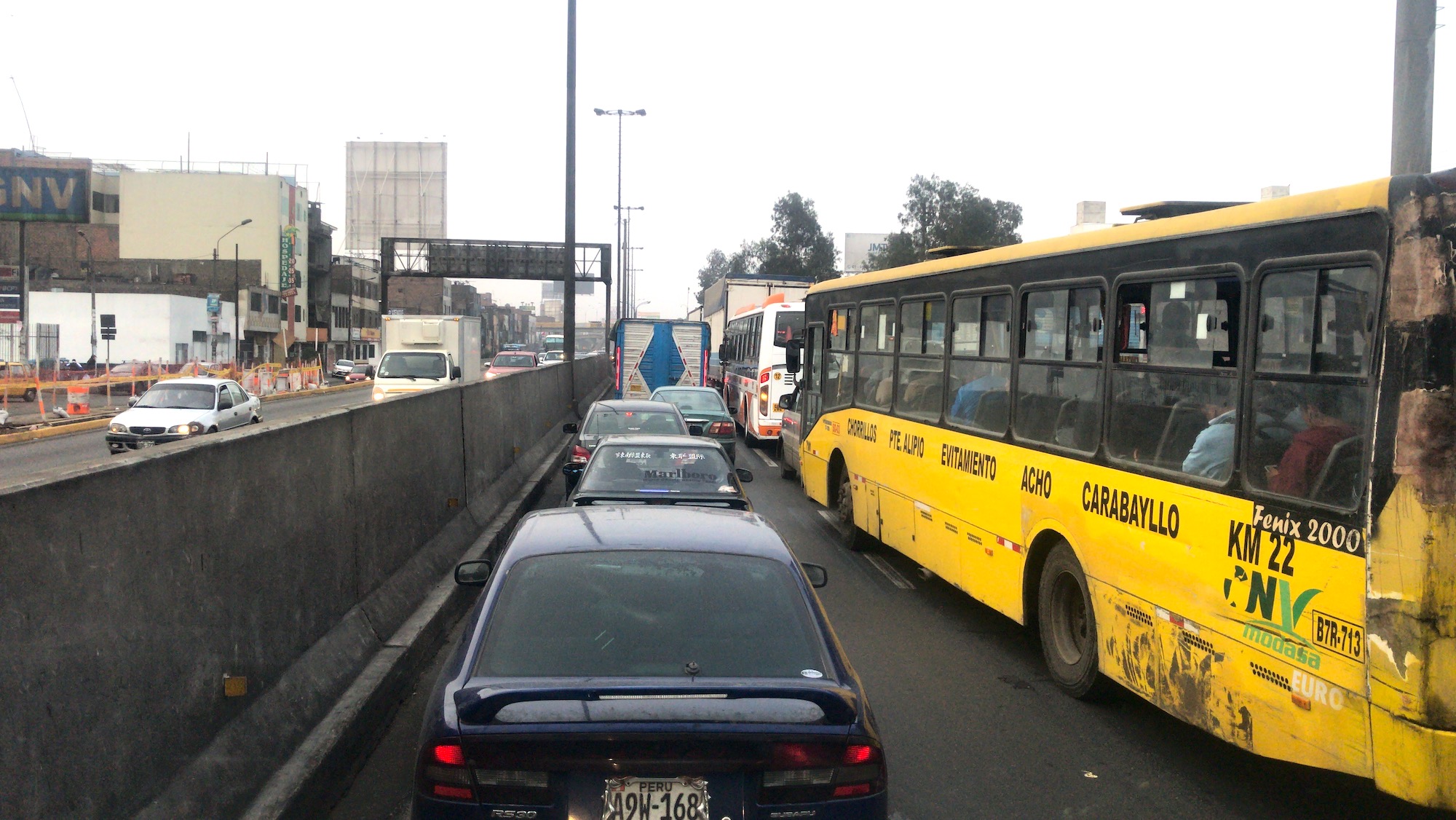
Finally moving forward we continued on the deserted national road towards Nazca. The landscape was desolating. Full of rubbish thrown on the side lane, similar view with the northern part of the coast. The settlements of the locals were in an incredible sad condition. It didn’t feel safe. We would only stop in gas stations to take a break, stretch our backs and legs, put some more gas and continue. After a long day drive we made it to Wasipunko, a hacienda near Nazca city in the desert.
Nazca
Nazca is a region in the southern coast of Peru known as one of the most arid places in the world where Pre-Colombian civilizations like the Nazca culture lived.
The Nazca people are famed for creating impressive underground irrigation systems and huge desert line drawings, called the Nazca Lines. The figures drew international attention due to their vast composition and lines depicting various animals, such as the hummingbird, monkey, condor, spider, plants or geometrical shapes and humanoids.
Most of the anthropologists, archeologists and scientists believe that they were drawn by the ancient civilizations to act as an observatory, to point where the sun and other celestial bodies rose or set in the solstices. Others believe that it was a way of communicating with the Gods, rituals created in the effort to bring the much needed rain.
There is another small group of people that believe in the theory spread by Swiss author Erich von Däniken that the lines were done by ancient astronauts as landing strips and that Nazca is an extraterrestrial corridor. As fascinating as it sounds as hard to believe it is with lots of skeptics and scientists disapproving this theory.
Wasipunkto campground, Nazca
When we got to the Wasipunkto campground next to Nazca we found a beautiful “hacienda” in the middle of the desert. We were embraced by a calm airspace and a pleasant energy. A mystic air was felt in the atmosphere. The owner of the hacienda was a special old lady, probably in her 70s, short with white hair and very active. She organized the property with plenty a good taste, using traditional elements of decoration and colorful Bougainvillea trees. She had a small restaurant, a garden, a farming area, peacocks all over the courtyard, chirping pigeons and lovely quiet dogs.
With such a warm welcoming we felt like cooking that night so we organized a nice dinner in her courtyard. Anna Maria prepared a typical Austrian dish with “spätzle”, ham, cheese, eggs, onions and garlic. It was a delicious meal accompanied by salad and the guacamole that I prepared. There was beer, red wine, white wine, water. All the necessary ingredients for a memorable night below an astonishing constellation of stars.
It has been great to have Anna Maria and Gerald as road partners for the past few days. We felt like having family with us, taking care of each other and sharing special moments like that one together.
That night we had one of the best night sleeps in our journey. It might had been the charm and calmness of the desert, the “feng shui” of the “hacienda”, the satisfying dinner or maybe it was something else, something deeper than we were aware.
Intrigued about that energy, the next morning I sit down with the old lady to ask more about her place.
“I feel a good energy here. What does it make Wasipunkto so special?” I asked the old lady. “We have orbs in the courtyard”, she answered naturally. “What? What are these?” I questioned. She took my hand and with such an easiness and confidence showed me where all the the energy spots were, which she called “orbs”. One of them was located where our truck was, some others in the garden and some next to the courtyard. Of course I didn’t see any orbs, but she was pointing them as if they were visible.
She then added “This is not everything. We had seen so many extraterrestrial lights from our hacienda passing through the desert throughout the years”. “Do you believe there is extraterrestrial life?” I asked. “Of course there is” she answered. She sounded so convinced that for a moment I was convinced too. “Nazca region is a corridor, a passing channel for the OZNs” she mentioned. Who knows… maybe it is…
We needed to depart very early towards Cusco that day as we had another 450km to ascend on curvy roads in the Andes.
Before getting into the truck the old lady stopped us: “Wait. I forgot to tell us something. Come here”. I went closer and she added: “One man from Nazca city found in his courtyard 7 bodies that have three fingers, three toe nails and arched eyes.” It sounded to me like a picture of an ET 🙂 She told me that the man refused to give them to the authorities claiming that he found them in his courtyard and they belong to him. This way he could monetize his findings showing the bodies to the tourists and curious visitors.
If she would tell us earlier we would definitely had gone and visit the man to see what creatures does he have. It was an opportunity to see proof of extraterrestrial life or to see maybe a scam 🙂 Who knows?!
Later on researching about the subject and the aliens of Nazca I found a lot of controversy on the matter. Peruvian scientists are actually tired and furious to endlessly having to explain the falseness of this myth. They claim that the mummies that keep appearing in the media and movies as extraterrestrial forms of life found in Nazca are nothing more than former bodies of ancient Andean people that are mutilated to look like an alien. I tend to go with the science, but there was definitely a feeling of mystic and esoteric in that area, while the old lady sounded so true and natural to me.
Leaving the mysteries, the truth and the extraterrestrial forms behind, the sun was rising in the desert. It was a lovely day to head to Cusco, finally to the gates of Machu Picchu.
On the road to Cusco
We had two more driving days ahead of us to reach the former Inca capital and about 750km to pilot the Andes up to again 4000m heights. It was exhausting only thinking about all those curvy roads we would encounter. But for JP it was definitely the time of his life :))
After a full day and 8 hours drive I was surprised how pleasant it was. Our bodies acclimatized to the high altitudes. Riding the plateaus of the Andes offered spectacular sights to the green highlands and the traditional villages with herds of lamas and alpacas. The alpacas, particularly valued for their fluffy wool impressed us with their facial expressions looking so curious as we were crossing through. They seemed to borrow some of our human expressions. I found that so cute.
Coca leaves - drug or medicine?
Just before the sunset was up we decided to stop for the night in a typical Andean mountain village which was renown for its natural thermal springs.
Before we departed to the natural pools on a 5km off-road ascent we stopped for some grocery shopping in the village. To my shock, I discovered the villagers were selling coca leaves at the fruits and vegetables stores. Then I realized a lot people were chewing them sitting outside their porches. Curious to understand the customs of the place, I asked a local: “Why do you chew these leaves? Are they any good?” One local explained: “This is something very common in Peru, specifically the Andean region. It is very good. Here the coca leaf is considered a medicinal plant. It is good for altitude sickness and for stomach problems too. I eat this and I get back my energy”. Curious to try it out, I bought a small bag to share it with our travel companions. “If we are in Peru we better act like the locals” :))
With little left from the day light we departed on the off-road adventure up the mountain, excited for the thermal baths. What a thrill! There were only 5km but little did we know that the road would become so narrow with only one lane to pass through, while on the right side we had a steep gap below us. Adding to this the lack of visibility the ride became slightly spine-chilling. But when we got to the thermal baths it was absolutely jaw dropping!
The pools were positioned at the top of a mountain with a panorama to the valley and the village. JP, Anna Marina and Gerald had an unforgettable time enjoying the warm and relaxing natural springs under a sky full of stars. Unfortunately I had to pass the thermal baths escapade due to the pregnancy.
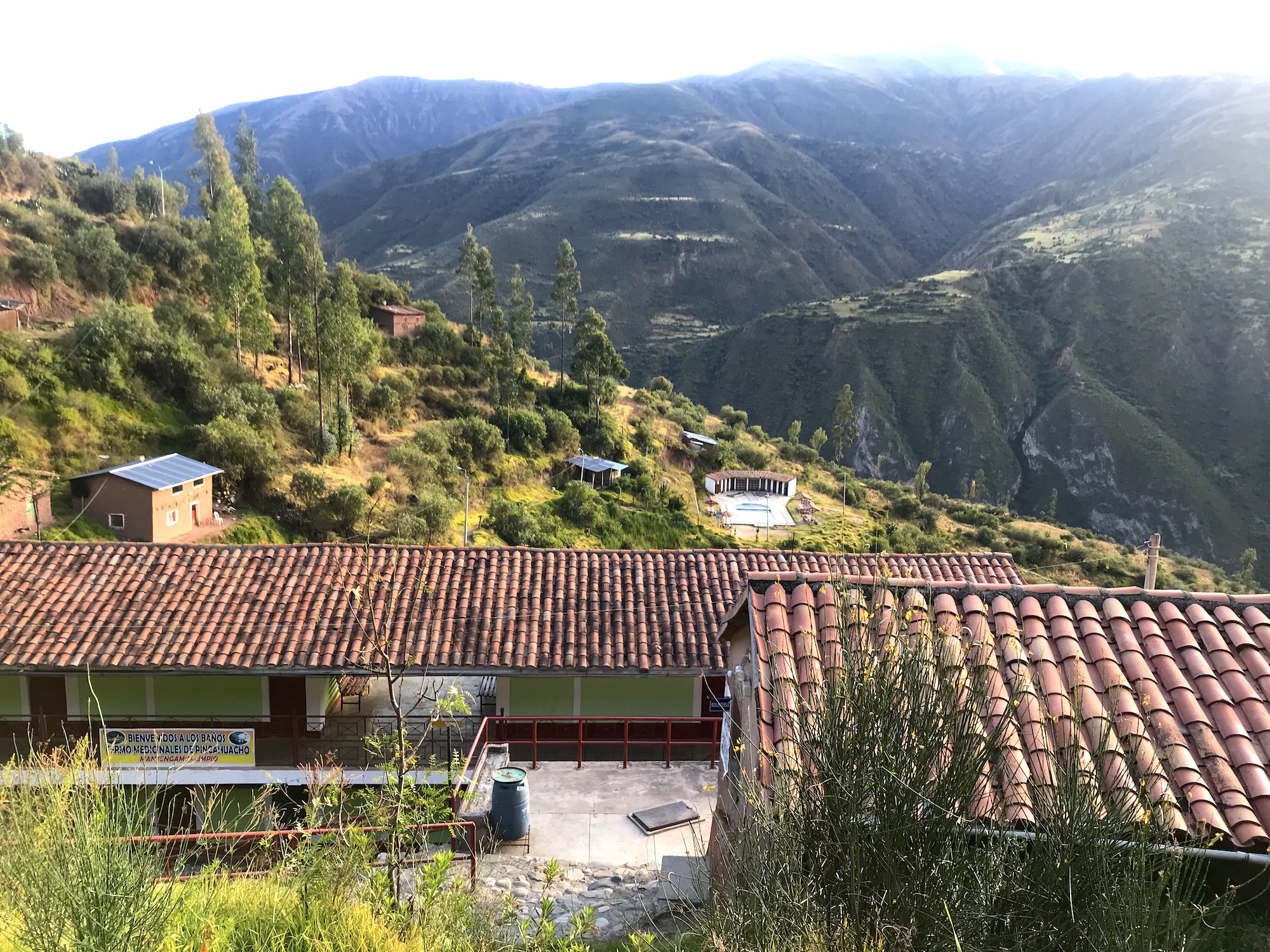
That night we had no choice but to camp there and that was venturesome. We had no space inside the property, so we had to park on the narrow side lane and the pools were opened to public 24h. People were coming and going on the tight road throughout the whole night. Wild camping felt a bit too adventurous there. We miscalculated some factors and there we were. I remember JP waking up with every sound he would hear, be it a car, people passing or a just a dog barking :)) We slept really bad.
As soon as the daylight cracked we were out of there. Finally our last driving day to Cusco! After another 7 hours push this time on very steep, curvy and spiral roads we got to the gateway of Machu Picchu.
My prenatal check-up adventure in Cusco
First things first! As soon as we arrived in the city of Cusco we had to find a hospital with the right equipment for the morphological functional ultrasound. I was 20 weeks pregnant by then and I had to do this type of check up. We probably went to over six private and public hospitals to find the right apparatus. If you can believe it none of them had such technology in Cusco. But we had one hope at one of the most modern hospitals, Essalud Hospital. We were promised an appointment the following day.
With my heart pumping out of my chest we went the next day to the hospital to do the ultrasound.
Wait! Things were not that simple. After knocking all doors of who could attend us as foreigners and after all the time we spent there we found out in the end that they actually do not have the equipment we needed. The doctor was kind enough to show us that their apparatus was 20 years old.
“OMG! This is one of the best hospital in Cusco!” I started to lose hope. “It can’t be possible that there is no 3D ultrasound in town. This means that all the pregnant women from Cusco and its neighboring villages do not have access to nowadays technology. This can’t be true”, I thought.
A kind lady from the accountancy department was very emphatic with our situation, made some phone calls and found out about a doctor specialized in high altitude pregnancy that had a small clinic which had a 3D ultrasound. We got the appointment for 3:30pm that day. Yeyyy!!
I was nervous as before any consultancy related to the pregnancy. It was a turning point. “Is our bay developing well at this stage of pregnancy? Is it affected by the altitude? Are we doing the right thing?” these questions were making me so anxious.
During the ultrasound, the doctor with a calm voice gave us the confidence we needed. “The pregnancy is evolving well. The altitude didn’t effect the baby. Here are the legs, these are the hands, he has five fingers at each hand,…, I can see it’s a baby boy. Congratulations!”, he said. I was glad to hear the baby has all its fingers in place :)) Luckily I never questioned that. I felt relived, like overcoming a stepping stone.
Complaining about my backaches, the doctor advised us: “Just make sure to stop every two hours during driving days, so Ioana can exercises a bit. Go for small walks. It will help with the backaches.”.
We received the advise and blessing we needed to continue our adventure.
Time came to dive into the Inca and hispanic heritage of Cusco and to prepare our journey to Machu Picchu, one of the most expected moments of our trip.
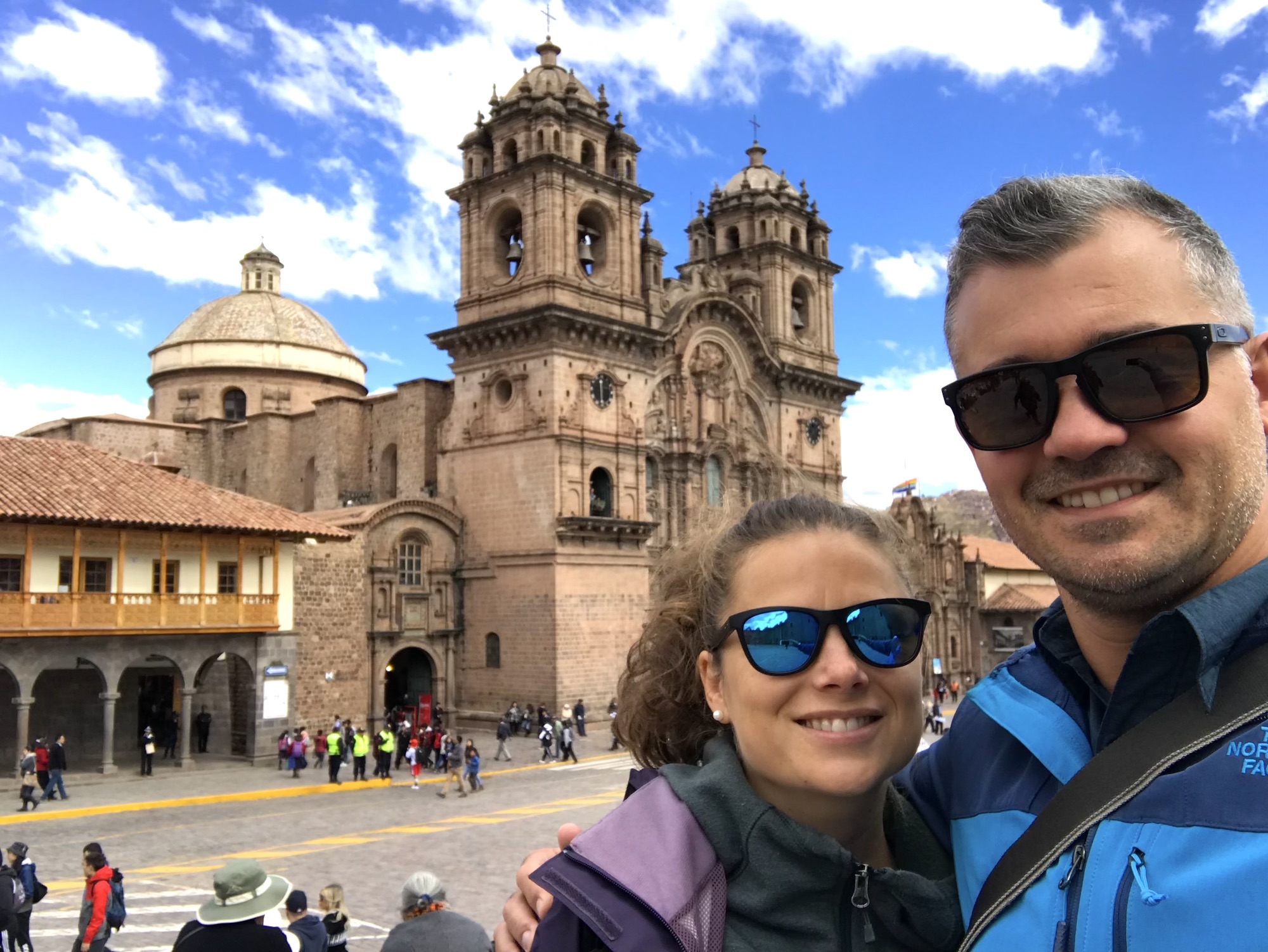
Discovering Cusco
After we parked Brutus at Quinta Lala, a campground located on top of a hill next to the Saqsaywaman archeological complex, we departed to discover the historical part of Cusco on foot. It was a 20 minutes downhill walk.
Positioned on a hilly terrain and surrounded by mountains, the former capital of the Inca Empire, later on conquered by the Spaniards was alluring. It had a strong scent of pre-Colombian heritage mixed with an aristocratic hispanic influence and a present Andean lifestyle in a transcendental mountain scenery.
The old part of Cusco was networked by narrow cobble stone alleys that offered something unexpected at each corner. From lama markets with Andean women exhibiting alpacas and lamas for pictures to artifact shops with gorgeous but expensive ponchos of alpaca wool, hispanic architecture built on the former Inca walls, local food markets, boutique hotels with generous patios, a great deal of restaurants, plenty of coffee shops, and alleys connecting to big plazas, imposing cathedrals and palaces designed in a Spanish colonial style. Cusco presented a completely charming atmosphere.
Curiosities about the Incas
In our opinion, the best way to learn more about a city or a new culture is to start with a local city tour. This way one gets the overview of the place with plenty of local insights and tips. So we booked a city tour in Cusco.
During the tour we learnt that the former Inca Empire which spread around the Andes mountains through Peru, Ecuador, Colombia, Bolivia, Chile and Argentina did not have a writing system nor did they discovered the iron or steel by that time. But they were very specialized in carving stones and building tremendous stone cities and road systems that extended throughout the whole empire. No wonder why the Spaniards used the base layers of the Inca constructions to build their own.
This can be very well observed in the old town of Cusco. The Spanish colonial buildings are blended on top of the base layers of the Inca constructions.
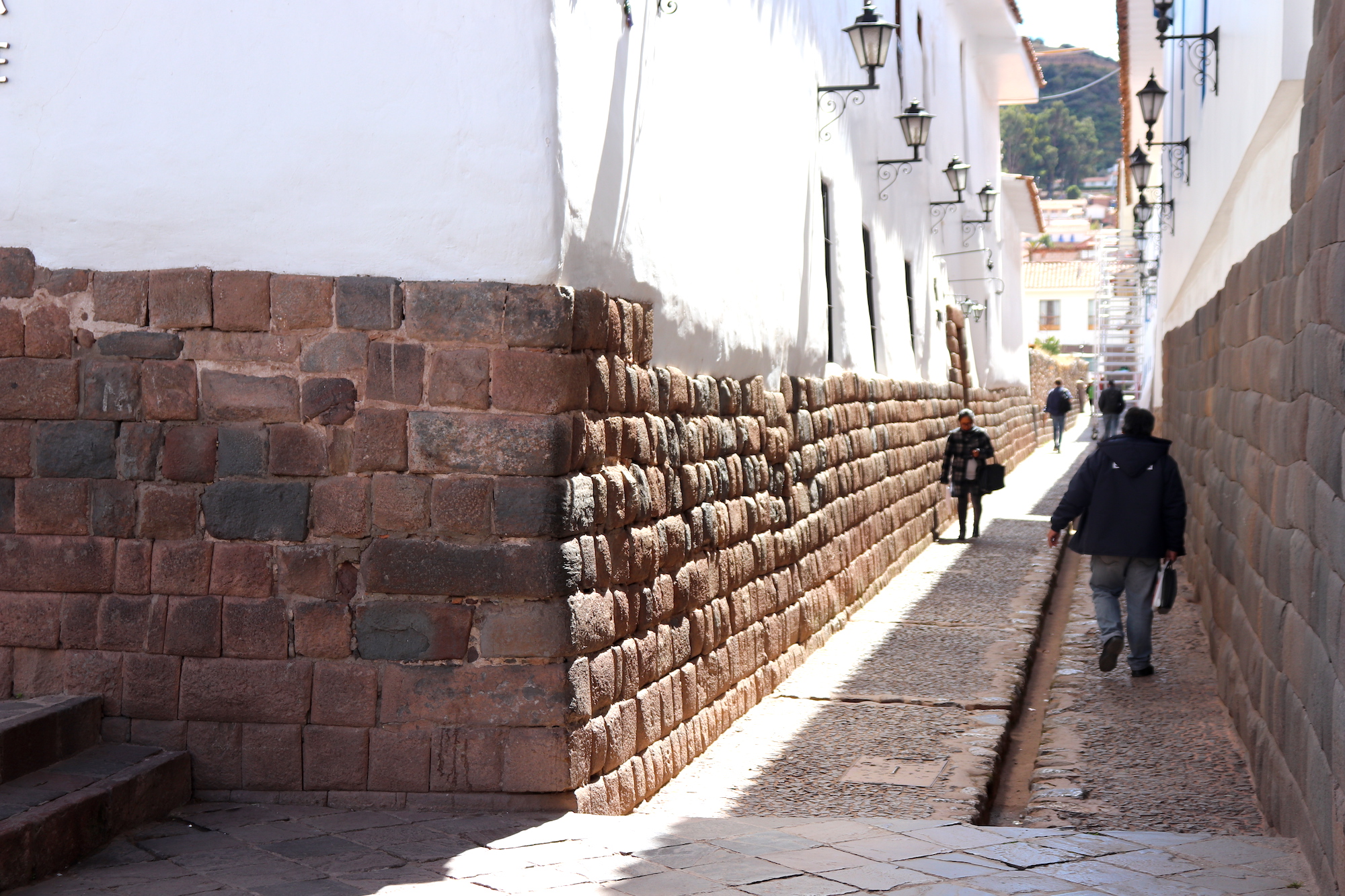
“Pachacuti was one of the most iconic emperors of the Incas” the guide explained. “He was the one that transformed the Kingdom of Cusco into the Inca Empire” he added. Most archaeologists believe that the famous site of Machu Picchu was built as an estate for Pachacuti. He also created the common language of the Empire, the Quechuan language, which is still spoken nowadays by the people of Cusco, Secret Valley and some areas of the Andes.
“The children in Cusco learn mandatory Quechuan in school, as well as Spanish. It is part of their identity, past and present. People that live in Cusco and the surroundings are either Quechua people, which are the former Incas or mestizo which are a mix between the Spanish and the indigenous Quechua”, the guide explained.
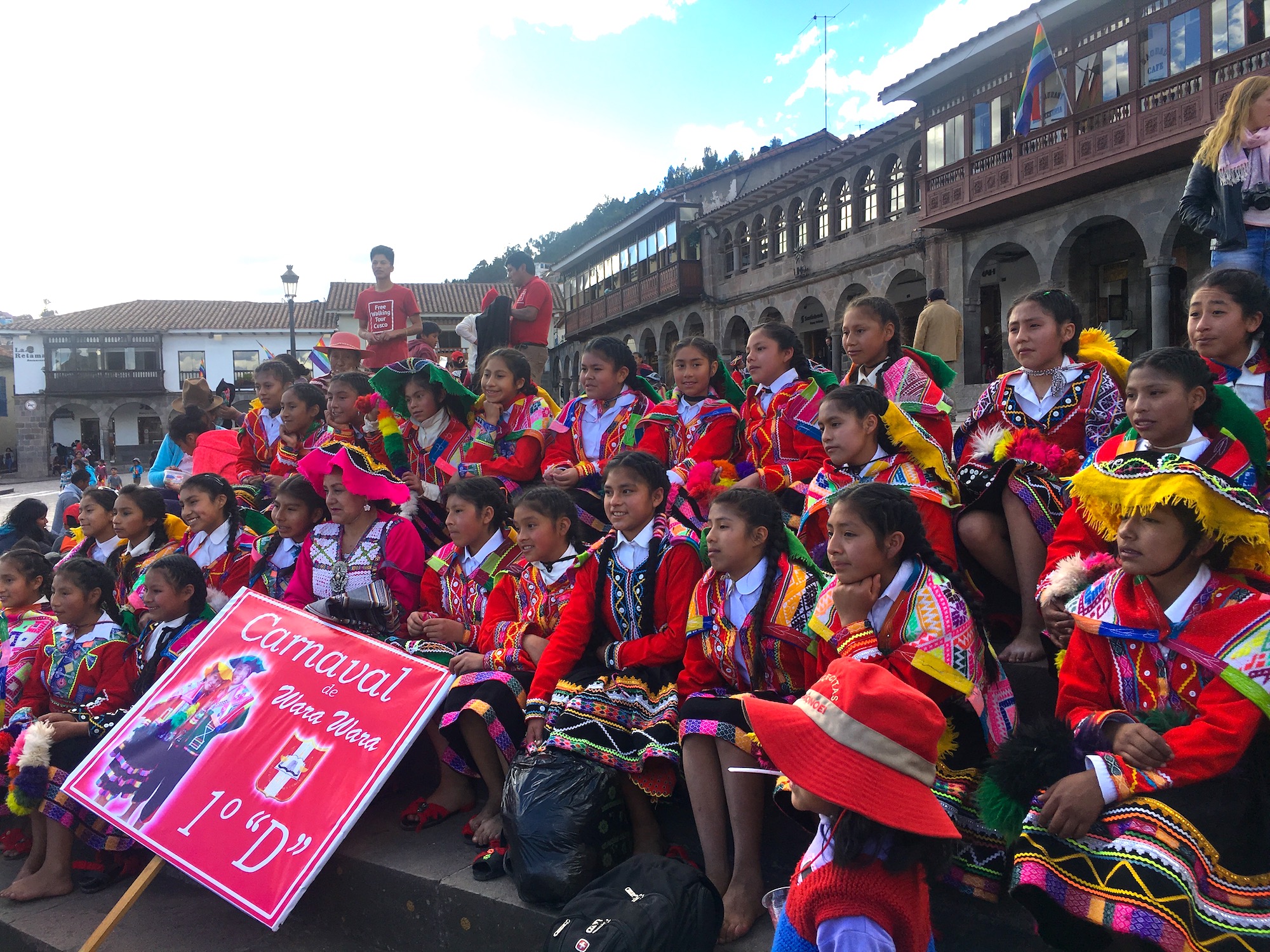
Like every pre-Colombian civilization they had their own Gods, rituals and religious ceremonies. “The God of Inca was called Wiracocha and was considered the creator of life, the creator of all things. Wiracocha created the sun, the moon, the stars, the time and the civilization itself. The other important figure the Incas believed in was Pachamama, which means the “mother earth”. Pachamama symbolized the goddess of fertility, who presided over planting and harvesting, representing the mountains but also causing earthquakes”, said the tour guide. We were absorbed learning about this mystical culture.
“Incas were making sacrifices to Gods. Lamas, fetuses of lamas, but as well human beings with specials talents, beautiful women and even babies were offered during religious ceremonies. There were two types of sacrifices. One type was when the animal or human being was simply sacrificed in the name of God or the emperor, generally to accomplish something during a ceremony” the tour guide explained. I was shocked to understand that the people which were sacrificed were honored to be part of these rituals and happy to do so in the name of their emperor or divinity.
“The other type of sacrifice was mummifying a person with a special gift, alive”, the tour guide added. They believed that if somebody had a special gift, they would have to pass it to the Gods, like Pachamama. So the respective person would be buried alive and honored about it. I was a bit terrified. It was difficult to understand those rituals in the 21st century, but it was important to know that they happened and it was not that long time ago, a bit more than 400 years.
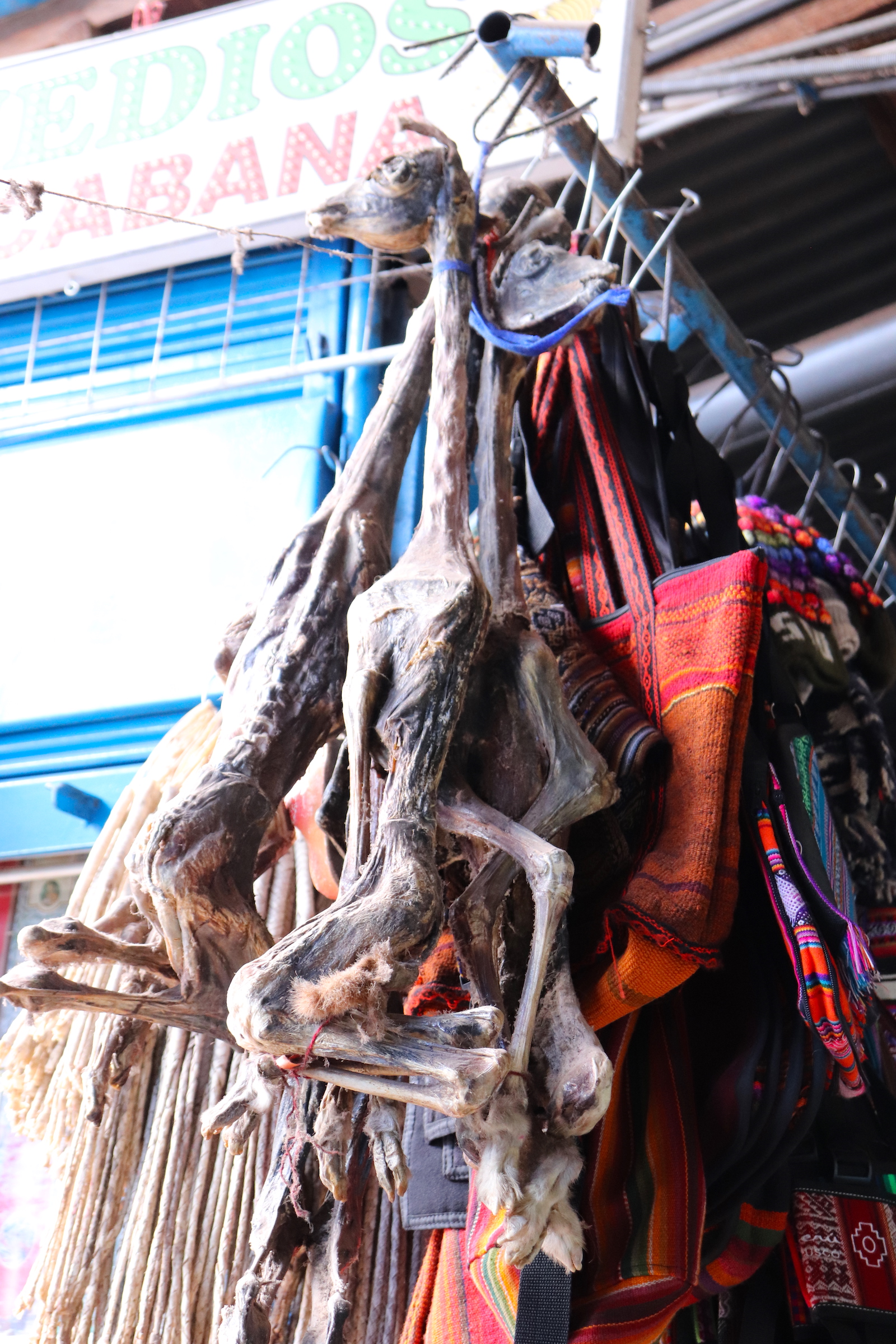
“When the Spaniards conquered the Incas, they imposed the Christianity as the new religion to the indigenous people. They were obliged to believe in God, Jesus Christ and Virgin Mary. However the Quechua people transformed the Virgin Mary secretly into their Pachamama, praying at Virgin Mary as an adapted representation of Pachamama”, we were told.
Today the people of Cusco and surroundings keep the symbols of their ancient traditions alive. On the 24th of June they celebrate Pachamama making “ofrandas” in the form of black lamas or lama fetuses. The month of June is a festive period in Cusco. It is the best time of the year to visit and enjoy the merry atmosphere full of parades, colorful costumes and dancing shows performed by the locals. And we were there in June! What a fortunate coincidence.
The hallucinogenic local market of Cusco
A very insightful visit was at the local market where we had the chance to learn about Andean plants and how they are used in rituals, medicine or simply alimentation.
We learnt that in Peru there are 3000 types of potatoes while 5000 types are in the whole world. That was quite impressive.
We got the understanding that the coca leaf in the Andean culture is not considered a drug, on the contrary it is a sacred plant used for rituals and medicine purposes. Coca leaf is part of the daily life of the Andean people. They prepare tea from it, they chew it for altitude sickness, they even have candies of coca, chocolate, liquors and creams for muscle pain.
San Pedro cactus was another plant that drew our attention. Apparently from one glass of San Pedro one can have hallucinations for 2 days. “You need to be very careful with this plant. If it’s not administrated properly it is so strong that can cause death”, the tour guide explained. “To have a spiritual ritual or cure with San Pedro one needs one month of preparations while for two weeks there is a diet to follow with no alcohol, drugs, nor sex. It costs 400-500$. San Pedro was used by the Incas for Pachamama ceremonies”, we were told.
Ayahuasca is another plant utilized as a spiritual medicine since the Incas. Nowadays tourists find themselves coming to Cusco to experience its hallucinogenic effects which often connects them to their inner self or their unconsciousness, helping them to overcome difficulties, addictions or to see their life from a different perspective.
“Maca is a herb considered a natural viagra,” the guide added.
It was a hallucinogenic introduction into the Andean medicinal plants 🙂 We definitely did not expect such absorbing information.
It the same market we were also initiated into the meat of lamas and alpacas. Apparently the lama meet is the cheapest and least appreciated for its quality. “ The meat is chewy, especially when the lama is older than 8 years. On the contrary the alpaca meat is law in cholesterol, very tasty but of course the most expensive as well”, the guide informed us.
As we had seen in Ecuador the tradition of eating guinea pigs continues in this area too. “It’s a local speciality” added the tour guide. “Another local speciality is the “lechon” which is the baby pork. Quechua people traditionally eat it on Sunday mornings over coffee” the tour guide said. Bleahhh…
We ended the culinary tour with a very traditional drink, chicha, a fermented or non-fermented beverage usually made out of grains, corn or fruits. Chicha is served in most of the restaurants or on the streets. This one was quite good actually.
Time for lunch break
After so many bewitching stories it was time for a well deserved lunch break. From the multitude of restaurants we chose to eat at Heidi, a boutique restaurant specialized in German food. They had very good reviews and the price suited our overlanding budget.
The moment we arrived the owner greeted me in Romanian and that allowed us to exchanged couple of Romanian words. “How comes do you speak Romanian?” I asked the owner. “I am a German national, but I come from Bohemia of Czech Republic. I traveled a lot to Romania when I was young” he said. “Ohh… something quite unexpected to encounter in the heart Cusco”, I said. “I had a girlfriend in Romania”, he added. “Well, that explains”, I answered smiling. His warm greeting gave us a sense of cosiness and familiarity.
At the end of our lunch the host surprised us with a selection from his delicious home made cakes which he served on a platter. What a nice act of generosity and kindness. We learnt one more time that happiness comes from simple gestures of goodwill. Another genuine experience when we least expected.
As we were heading back to our campsite we had the chance to assist to the city’s celebrations ahead of Pachamama national day.
People from all ages and social classes were parading in the central plaza and the surrounding streets of the city center in bright-colored traditional outfits. It was spectacular to see the vivid costumes and the Quechua people so proud displaying the folklore. Everybody was marching including kids of 4-6 years old.
The perfect traditional party at the end of an authentic day.
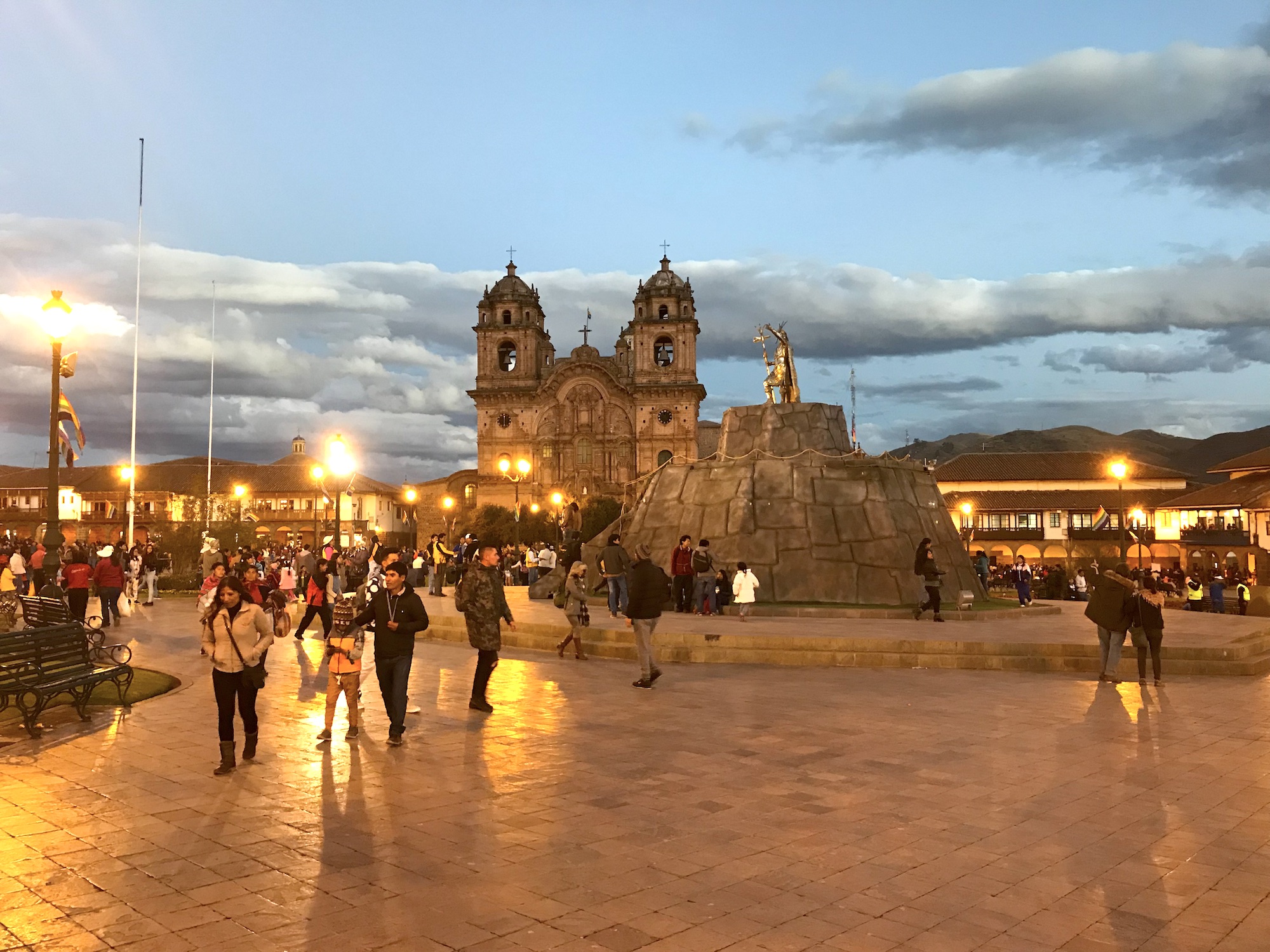
The journey to Machu Picchu
Although there are less than 80km distance from Cusco to Machu Picchu, there is no road accessible to regular cars. There is a whole transportation system one needs to follow.
The road for normal cars ends at Ollantaytambo, a village and Inca archeological site located 72km from Cusco. From there some tourists prefer to follow the Inca Trail on foot for a 3 days hike, while others like us choose to park their vehicles in the municipal parking lot and head with the Inca Rail train to Aguas Calientes, the last village to Machu Picchu. From Aguas Calientes one has to take a bus on a steep mountain to the archeological site.
As you can image this requires some planning. We allocated a day to prepare the road journey and to buy the necessary tickets. First of all we had to get the train tickets from Ollantaytambo to Aguas Calientes, then the bus ticket from Aguas Calientes to Machu Picchu site, then to pay for the entrance ticket itself.
In Cusco we went to the chic offices of the Inca Rail located in the historical city center and booked the return train tickets from Ollantaytampo to Aguas Calientes. One return ticket costs 120$/person. Then the entrance pass for Machu Picchu was acquired from one of the offices of the Ministry of Culture located in the city center as well, called “Banco de la Nation”. The entry tickets to Machu Picchu cost 49$/person. The last one was the bus ticket from Aguas Calientes to Machu Picchu which was 48$/person. We got it from Banco Interbank.
The following morning we departed with our vans to Ollantaytampo. The road trip was arresting with gorgeous sights to mountains covered by a rich vegetation, fertile farmland and Andean villages scattered in the valleys of Urubamba river.
When we got to Ollantaytambo we discovered a charming village with a nicely refurbished colonial architecture of the old town and a magnetic view to a former Inca fortress located on a hillside. The air was foggy and mystical. Once we arrived we departed to the train station to get to Aguas Clients, but not before indulging with a cup of coffee and a fresh orange juice at the appealing boutique restaurant of the railway station.
Inca Rail Train impressed us with its first class service and comfortable ride. We definitely did not expect that in the heart of the Andes. An hour and a half we wondered up the windows at the tremendous sights of the Sacred Valley with its spectacular canyons cut by Urubamba River and covered by jungle vegetation. We were transported easily into another realm, the mystic territories of a former Inca civilization.
Finally Machu Picchu!
Arriving at Aguas Calientes we passed quickly through a colorful craft market to get to the bus that would finally take us to our ultimate experience in Peru.
After a curvy cruise up the mountain we got to the top. We finally arrived at Machu Picchu! As we were walking through we were simply hypnotized by the view of the Inca citadel. We couldn't stop wondering: “Wow. This is amazing”. I had instant goosebumps. Its ancient stone constructions were flawlessly merging with the mountain and the surrounding green summits were standing like guardians of the mystical place. We were arrested by the view. At that moment we understood why the site was chosen as one of the Seven Wonders of the World and is visited by thousands of tourists every day.

As we were walking through we realized the citadel was divided into an urban sector and an agriculture one. The temples and the royal residences were positioned in the upper town, while the residences and warehouses of the workers in the lower part of the community. The stone work of the citadel and how it was integrated with the summit was impressive.
One of the most prominent buildings in the upper town was The Temple of the Sun, considered the best example of organic architecture in the world. Other representative constructions were The House of the Inka, that served as a temporary residency of the emperor and its representatives. There was the Sacred Plaza which encompassed a temple, the water fountains, a pyramid, a sacred rock where religious ceremonies took place and the water mirrors designed for astronomical observations.
The lower town had plenty of residential houses and agriculture terraces supported by perfectly puzzled layers of stone. It was impressive to observe the advanced irrigation system built in those times, which provided water to the steep terraces with cultivations.
We learnt that during the high season there were about 700 people living temporary at the site to maintain the emperor’s residency. These people were mostly immigrants, doing construction, agriculture and basically taking care of the place. During off-season there would be about 100 people residing in the Llaqta of Machu Pitcchu, how it is also called.
The citadel was abandoned during the Spaniards conquest in the second half of the 16th century and considered for a long while lost until it was rediscovered in 1911 by an American Yale University professor, Hiram Bingham, we learnt. Many say that the city was never lost as it was inhabited by farmers that used its terraces and drainage system for agriculture.
Llaqta of Machu Picchu is a masterpiece of ecologic architecture engineered to merge in perfect harmony with the nature. We felt blessed to get the chance to see this sacred space. The walk through the tremendous archeological site ended with a gorgeous sunset laying down the otherworldly citadel.
Back on the Inca train we shared our impressions with Anna Maria and Gerald over a great dinner with food we brought from the van. “Wow. It was amazing. All the efforts to get here were worth it" we said. "The experience exceeded our expectations”, Anna Maria added. We couldn’t agree more. Words were not enough to express our wonder. We were numbed by the place. It felt like a journey in time during the mystic pre-Colombian times.
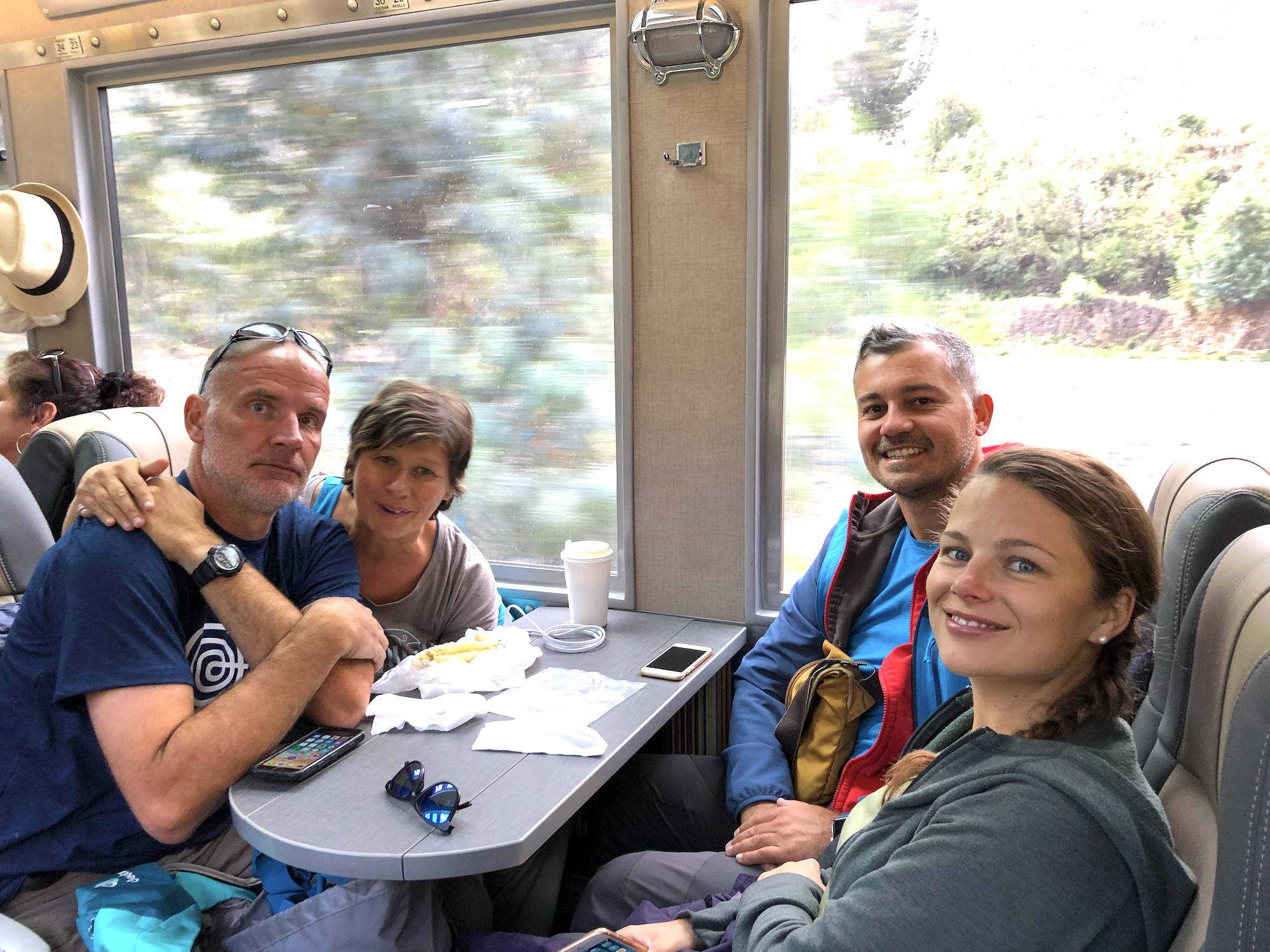
The next day it was time to wake up from our transcendental experience and put back mileage on our journey. We had to depart early to reach Lake Titicaca to get closer to our next destination, Bolivia. I remember it was a quiet ride, a time of reflection, a time to digest all the information, the magical moments and the heights of our visit in Peru. It felt like a deflating balloon. We were so pumped up by those high moments and we needed space to land back to our daily overlanding routines.
Passing through the alpine plateaus of the Andes towards the shores of Lake Titicaca was a chance to contemplate on all those tremendous events and let go. Time came for a new chapter: Bolivia.
